From the heart of the Blackmore Vale



- WE LOVE TREES!




- WE LOVE TREES!
Both Tory leadership hopefuls came to Dorset in August – Rishi Sunak met party members at The Exchange in Sturminster Newton, and Liz Truss similarly did so at Athelhampton House. Fanny Charles reports on what both had to say on rural issues.

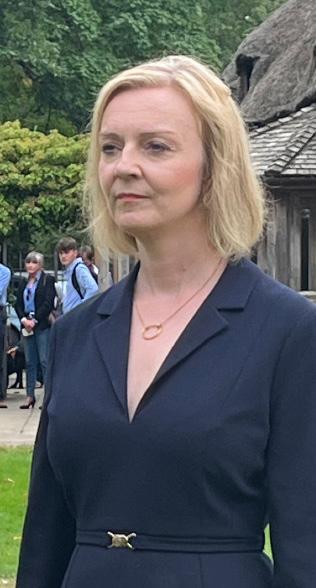
Laura Miller is a Dorset councillor, a parrot rescuer, an Optimus Prime admirer and she dreams of an itinerant life playing her viola around a campfire with a cider in her hand

‘Don’t sell the sausage. Sell the sizzle.’ Sophie Baker is managing to do both brilliantly with her award-winning sausage business, reports Tracie Beardsley in this month’s A Country Living
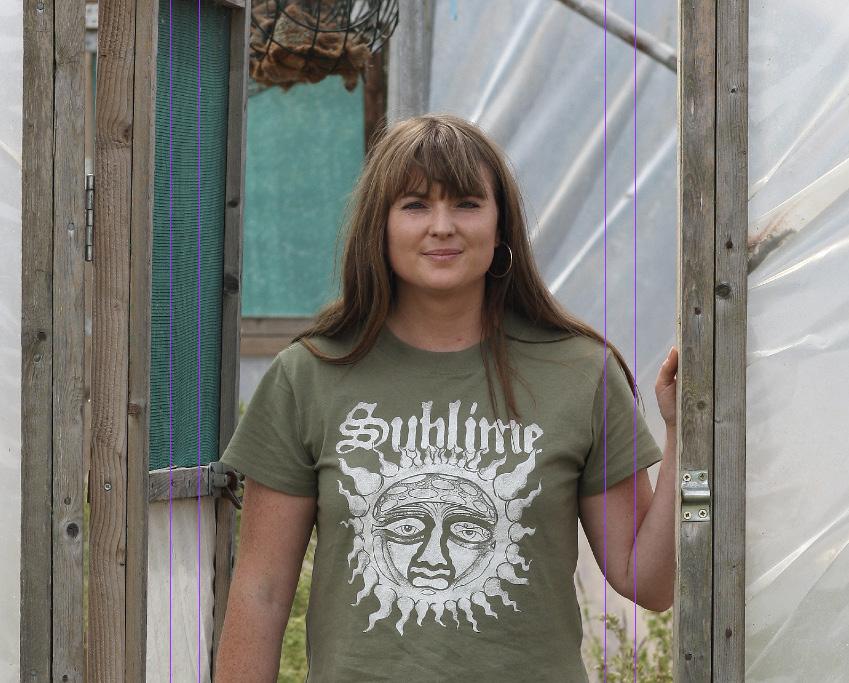
This month’s beautiful front cover was submitted by Marilyn Peddle. The Reader’s Photography was so good this month we were forced to add an extra page
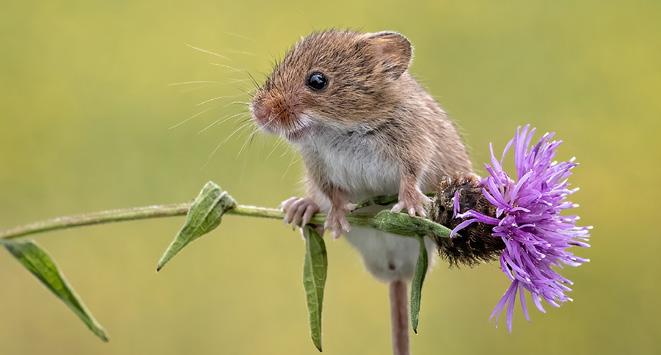
The Dorset-born restaurateur and chef had fame, acclaim and six restaurants – until 2020 happened. Mark retreated to his house in Dorset ‘to survive lockdown and tend to the garden’. His random questions reveal a love of a bargain, an obsessive tidier - and an abiding love of fishing

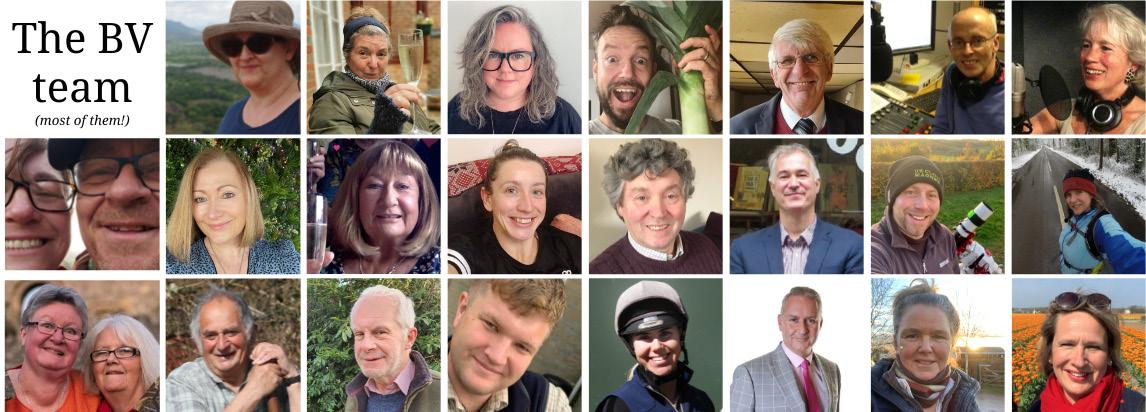
We know, it’s a HUGE magazine. So we make it easy for you - just like grabbing the sections you like best from the Sunday papers, you can click the number to jump straight to the section you want. Or, y’know, just make yourself a coffee and read from the beginning ...
I’m an overweight, middle aged, mum of four. When people notice me (which they rarely do; I am over 40, ergo I am invisible), they might think ‘nice smile’ (it is a nice one, to be fair). Gorgeous hair, possibly (tricky to tell – the only hairstyle I know these days is a messy bun). They rarely think ‘editor’ (far too grown up a job for a woman that can’t remember where she put the car keys). But what I can guarantee they never think is ’kickboxer’. And yet ...

I took it up during the first lockdown, purely as a bribery method to encourage my teenage daughter (kickboxing since she was nine) to keep showing up; ‘I will if you will’.
I was bad. Terrible. But I loved it. Two years ago I honestly couldn’t manage one press up. Now I have a vicious uppercut, and can manage a pretty mean spinning outer crescent kick.
The point is, I would never even have considered it if I hadn’t watched my daughter do it first. If I hadn’t seen my wispy nine year old working hard, with passion and determination. And while there, watched other women being fast, strong and powerful. And inspiring.
Just as all over the country girls are now asking their parents to find out where their nearest football club is, and why they don’t get to play football at school. We all need someone to inspire us to take the first step. To make us feel like we can.
Contact the BV Team:
Editor: Laura Hitchcock
Advertising: Courtenay Hitchcock advertising@theblackmorevale.co.uk
Sub-editors: Gay Pirrie-Weir Fanny Charles
Everything else: Try Courtenay, he’s the organised one ...

This month Rachael Rowe has been speaking to three North Dorset women who, without any fanfare, have become national champions in their own contact sports – all of them in their turn inspiring more young girls to go out and play whatever sport they think is the right one for them. Even if it’s one ‘for boys’.
PS - Come and say hello if you’re at the Gillingham & Shaftesbury show this month. We’re at stand E13 - we’d properly love it if you stopped for a chat.
PPS - can I also just say a quick thank you to everyone who got in touch about my letter last month, discussing abortion rights – the wave of applause in my inbox in the following days was an amazing thing.
Tory leadership hopefuls stage a West Country two-step Truss pledges a bonfire of farming and planning bureaucracy and Sunak promises help for farmers and first-time buyers
You could, if you were so minded, describe this week’s West Country visits by the Tory leadership candidates as a two-step U-turn. First, Rishi Sunak was accused of a massive U-turn when he proposed a significant cut in income tax by the end of the decade.
Then Liz Truss was forced to backtrack on a proposal for regional pay groups and pay cuts for public sector workers outside the south-east.
The former Chancellor visited North Dorset for a meeting of party members, hosted by local MP Simon Hoare at the Exchange at Sturminster Newton, and the Foreign Secretary was in West
Dorset the following day at Athelhampton House, meeting local members, hosted by West Dorset MP Chris Loder. At both meetings, the candidates also answered questions from selected media representatives, including The BV. In between, they took part in a joint hustings meeting at the Great Hall of Exeter University.
Mr Hoare introduced Rishi Sunak as “a common sense Tory who will do the right thing,” but stressed that the party must unite after the leadership election. This call was echoed by Mr Sunak, who spoke of the importance of restoring trust – and of patriotism, family, hard work and aspiration.
Identifying himself as the leader for the next general election – which would be a record fifth consecutive win for the Conservatives – he recognised the need to appeal to floating voters, and referred specifically to the recent loss of the Honiton and Tiverton constituency.
Ms Truss told ITV’s News South West political correspondent David Wood: “We will not be going ahead with regional pay groups.” She said that there was “never any intention to affect teachers and nurses” and she did not want people to be concerned.
In weekend interviews, Rishi Sunak, MP for the rural North Yorkshire constituency of Richmond, talked about the importance of domestic food production and the resilience it gives us: “I will drive forward the most significant reforms to farming in half a century,” he said.

At Sturminster Newton, he spoke about his concerns for food security and the need for a stronger, more farming-friendly vision. His neighbour in North Yorkshire is a dairy farmer, so he has “a significant understanding of the challenges farmers are facing.”
Liz Truss also spoke of the “food security crisis.” She wants to get rid of red tape and bureaucracy freeing British farmers to compete with farmers from other countries: “I want to see fields full of crops and livestock – not solar panels.”
I will drive forward the most significant reforms to farming in half a century
Housing is a hot topic in many rural constituencies, including Mr Sunak’s Richmond and Ms Truss’s Norfolk South West. Previously he has promised to restrict construction on the Green Belt, while her plans include building a million homes there.

Both want to see changes to enable local people to be able to afford to buy homes in rural areas where incomers and second-home buyers have pushed prices up.

It was important, Rishi Sunak said, to make sure that “rules and regulations don’t tip the balance in favour of second homes,” and he was working with some local MPs to close some of the regulatory loopholes. His solution to first-time buyers’ difficulties with deposits was to introduce 95 per cent mortgages for them.
Liz Truss wants planning policies that are supported by local people. “I want to get rid of top-down housing targets,” she said. And on the rural housing crisis, her policy is to encourage business and enterprise, with homes specifically linked to jobs, helping people to be able to get a foot on the housing ladder.
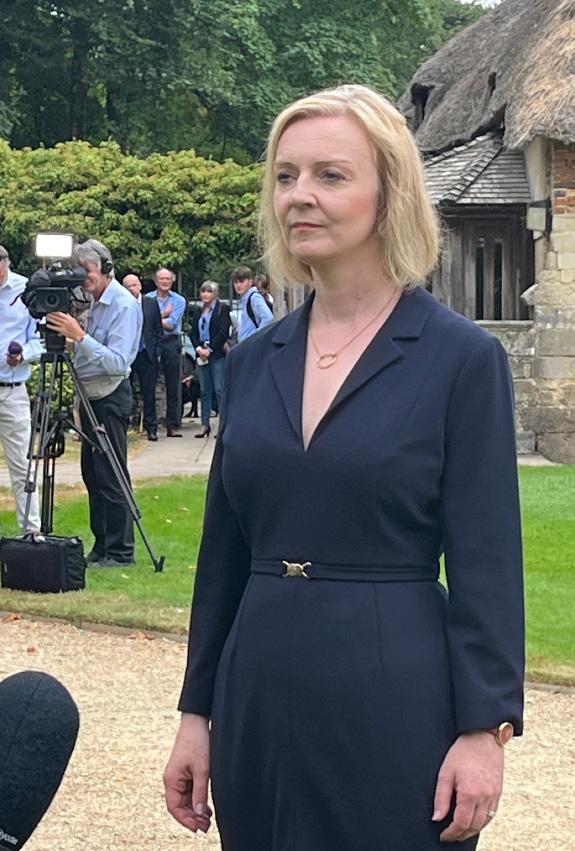
On 7th August, the village of Shillingstone will celebrate 100 years of their sports festival – Rachael Rowe reports on the much-loved family event.
A hundred years ago, Britain was recovering from a World War and a global flu pandemic. The Western Gazette reported on the Shillingstone sports festival at the time, and this year many of the original races will be back on the schedule.
In 1922, a flat half mile race for ex-servicemen reflected Shillingstone’s sad claim as ‘the bravest village in England’, having sent the most men to war per head of population. It was a popular event, won by H. Haine. The open 120 yards hurdles race was won by S. Trowbridge. Other open events in 1922 included both one and two mile bicycle races. Only locals could enter the 100 yards flat race, and the same for the three-legged race (boys only) and the egg and spoon (just for girls). There were even prizes for garland making, and the total prize pot was valued at £26 (roughly £1,031 today). Blandford Town Band started the day’s events with a parade through the village (and were ‘in attendance on the field during the afternoon and evening’).
A hundred years on, and there will be races for children of all ages, events for fathers and mothers, and an obstacle course. Although the egg in the egg and spoon race has now been replaced with a potato, there is still a traditional sack race.
In 1922 people had to pay one shilling to come to the sports day, but in 2022 the event is free for everyone to enjoy. One of the organisers, Kay Ridout, has been busy with the team of volunteers getting things ready for the big day. She first got involved when she came to the village in the 1990s. “I joined in a race as a spectator, got roped in to help – and have been there ever since. Richard Higgs, our sports director, has also been involved for years.”

One of the features of the Shillingstone Sports Day this year is the return of the famous raft race. Until the early 90s decorated homemade rafts raced from Shillingstone to Sturminster Newton. Not everyone – or the rafts – got to the finishing line, and most people got a soaking! If you remember it, you may enjoy this video of the 1991 raft race)
As reeds have made the river more hazardous to navigate, the race has been relaunched this year on dry land as the Go Kraft Race; “we’re looking for a raft with four wheels. Think of the Red Bull soap box challenge, but on the flat” Kay hopes it will attract creative entries with fancy dress, making the event a fun day out. There will be a prize for the best ‘Go Kraft Boat’, and the bestdressed team.
In the days when you could travel by train to Shillingstone, the Tug of War attracted teams from across North Dorset. In 1922 the tug of war final was played between Child Okeford and Sherborne at Shillingstone (Sherborne won). Sadly, the tug of war no longer takes place – Kay explains: “It’s down to a lack of volunteers and also rope. We have the same people coming forward each time who can’t do everything. We have tried to find someone, but no one came forward.”
The sports festival is open to everyone. Other attractions will include skittles, tennis, a raffle, a treasure hunt, tombola, Splat the Rat, children’s games, face painting, craft stalls and a car boot sale.
There will also be various stalls run by numerous village groups. Refreshments will be available, and of course, the always popular Bar Tent.
Events have been sponsored by local business owners Helen Antell of Feathered Nest, Debby Cole of Absolute Catering and Wessex Internet.
If you want to make a Go Kraft vehicle for the race and have a team of four people, entry forms and rules can be obtained from Veronica Jenkins at 01258 863641.
The event is at Shillingstone Recreation Ground on Sunday 7 August, from 1pm to 5pm.




In a month which saw the national ladies football team conquer Europe, three North Dorset women are quietly attaining GB success, says Rachael Rowe
We’ve all enjoyed watching the Lionesses win the European Football Championships this summer. Even more impressive than their skill on the field has been their legacy beyond the trophy. They are inspiring girls and women to get involved in the sport – and loudly paying tribute to all those women who inspired and led the way, enabling their success.
Right here in North Dorset, quietly working hard the way women footballers have for years, are some trailblazing women who are also achieving national and international success, paving the way for more girls to follow in what are traditionally male sports.
Okeford Fitzpaine-based Kate Davey is the 2022 World Karate & Kickboxing Union (WKU) British Open Champion in the 70kg and 65kg kickboxing classes. Her success has led to a call-up to the WKU England squad for the world championships in Cardiff this autumn.


So how did she get started?
“I’ve always been an extremely competitive person. I have had horses since I was two, and been involved with competing for years. I went to a Blandford kickboxing lesson to try it, and I
was hooked. Then I met my partner, who teaches kickboxing with another organisation. I’m a purple belt currently – I haven’t been able to grade up because of Covid, but that’s coming up soon.”
Fifteen-year-old Ruby Else-White is no stranger to regular BV readers; we’ve been tracking the Stalbridge teenager’s career for the last 18 months. When she was seven, Ruby took part in the village pantomime with her mum. ‘We met another family and I noticed one of them was a boxer. He invited me to go for a lesson, and that was it. I’ve been boxing for eight and a half years now. When the coach (Shaun Weeks of Sturminster Newton Amateur Boxing Club) first saw me box, he told everyone I would be a national champion.’ Ruby – known as the Pocket Rocket – lived up to that claim when she became the national champion and two-time Box Cup winner in 2019. Since then she has gone on to win 12 further championships and has won an impressive 26 out of 31 matches. When she won the Prospect Award in Sweden, it was the first time the award had left the country. Until Ruby got her hands on it, the Swedes had always won – now it’s in Stalbridge.
Taekwondo Master Kim Robinson from Blandford is the youngest female 7th Dan Master in the country. ‘There are very few lady masters. I was six when I started – my whole family started young. My older sister was eight (Kim’s sister is Karen Mayne, now a 5th Dan kickboxer and owner of a well-known local kickboxing school). Dad worked with the instructor, and we started off in the 1980s. Once my brothers got to six years old, we were all doing taekwondo. Kim’s remarkably young for a 7th Dan. It’s rare to get this far for either sex: a black belt must train for two years as a 2nd Dan to achieve their 3rd, then three years to gain a 4th and so on. A 7th Dan is a minimum training time of 31 years if you pass every grading on time.

Like most of us, Ruby watched the Lionesses. ‘I was really happy for them. It’s like women’s boxing – we need them getting it out there. I liked that the women won the Euros, when the men were unable to!’
Kate found getting into kickboxing easy. ‘People think it’s a male thing. But there are lots of women doing it. People just don’t realise it. And everyone is so friendly. We’re all one family. Everyone knows each other and it’s a really relaxing sport.’
Kim has noticed an increase in women taking up taekwondo. ‘I teach a lot of kids and have around 200 students, 180 of whom are young kids. Several are there for the discipline you learn with taekwondo, but adults tend to focus more on fitness. Recently we have seen many teen girls, and seven ladies have joined in the last month. I’m not sure – maybe women have been inspired by all the sports?”
All three of these women are breaking down the prevailing misogynistic view of contact sports, driving forward the changes – and bringing success to the Blackmore Vale. When Kate Davey won her British Championship, it was a special moment. ‘I thought I’d be knocked out in 30 seconds. But my coach said: “you’re not going to let her do that to you, are you?”. I used the space to stay calm, used everything I had been taught and my fitness to win. After lockdown, it was such a reward. All the work I had put in – it was a massive achievement.”
Kim had to travel to Leicester to earn her 7th Dan Master qualification. ‘Over the 30 or so years, I have learned 24 patterns. Of course, you learn the most challenging patterns as a black belt, such as breaking boards or doing a flying sidekick.’
You would think Ruby had time on her side, but she has her eye firmly on the Olympics in 2028.
‘The minimum age for boxing is 19 – in 2028 I’ll be 21. I got through to the first selection and have the second one this weekend. They only take people they think will win gold. First there were nine of us and now we’re down to five. Women’s boxing has only been an Olympic sport since 2012. Lots of people had to fight to get the International Olympic Committee to take the sport seriously.’
Ruby’s mum Heidi added: ‘Ruby is so dedicated, and the discipline keeps her focused. She’d rather train than sit on an Xbox!’
All three contact sports are excellent at giving you a complete workout. Fitness adviser and BV columnist Mel Mitchell says: ‘Contact sports are a great way of releasing stress and building endurance, strength and co-ordination. And let’s not forget the social side, which is always great from a mental health perspective.”
If you have read this and are inspired to give a new sport a try, all three women have advice.
Kim runs KR Martial Arts, and has classes across Dorset, including at Blandford Forum, Sturminster Newton and Wimborne. She offers free taster sessions (be warned, you could get hooked!)
Ruby would be very happy to see more females at the boxing classes in Sturminster Newton, as she’s the only one at the moment!
Finally, Kate and her partner run kickboxing training in Blandford Forum and also offer a free taster session.



A rainy-day activity with her father set Lyra Medlock on the trail to the oppressive Hungarian heat with the GB Junior Team, says Rachael Rowe
Rainy days are an unlikely start to a new outdoor interest. But when Lyra Medlock’s father suggested they get out and go orienteering, she jumped at the chance. ‘It was raining, and we were bored, so when Dad suggested it, I went. And that’s where it all started from there.’
For the uninitiated, orienteering is an adventure sport involving cross-country running through rough terrain (away from any footpaths) or urban sprinting, while using a map and compass to navigate between checkpoints guided by a specially-produced orienteering map. It is a thinking sport, requiring the mind and body to work together to run as fast as possible through difficult terrain without getting lost. However, if you live on your smartphone there’s a drawback – you cannot use a GPS or sat-nav and you run on your own. Some races last an hour, while others are sprints for 10 to 15 minutes. Orienteering is done on all terrains, from mountains to forests, urban areas to sand dunes.
Once Lyra got into orienteering, she quikly progressed, joining the South West junior squad at the age of 12 and representing her region at interregional championships in Yorkshire and Cleveland. She has consistently won her age group (W14/W16) at the British Championships in all three disciplines (sprint, middle distance and long distance). The sport has taken her to Scotland, the Lake District, South Wales and many other places. Thanks to a grant from the Alice Coombes Trust, Lyra was able to attend selection races in the north of England. She was duly picked to orienteer for England Juniors, first against the Belgians and French, then against Scotland, Wales and Ireland – and she won both races. Lyra’s eyes have been on GB selection for a while. After six challenging events in Wales and Northumberland, she was chosen to orienteer for Great Britain at the European Youth Orienteering Championships in Salgotarjan in Hungary, this summer.

Lyra’s races were against 16-year-old girls from 33 other countries. Out of a field of 100, she finished in an excellent 9th place in the sprint event; the best GB performance of the weekend.
Lyra said: ‘It was amazing. I always wanted to get onto the team, and I was younger than others.’
In Hungary, Lyra twice had to run in forests where temperatures reached 37 degrees. “I drank lots more water than usual and kept to the shade as much as possible. It was the same for everyone. You just have to cope and move on.”
Lyra attends Gillingham School and is in Year 10. She practises her sport by running around Tisbury and the Fontmell Estate, and has got to know every path and run-through in the area. Lyra and her father, Jolyon, appreciate the efforts made by local people to keep footpaths clear, as this has helped Lyra achieved her sporting goal.
If you have read this and are interested in trying out orienteering, the Medlock family recommends the Wessex Orienteering Club, where they participate in events. Parents need to drive their children to various venues for junior events.
Orienteering is a sport for runners who can both read a map and make decisions at speed.
Roger Guttridge reports on a twilight event at Sturminster Newton Mill that was a spectacular end to a four-month project with a Newfoundland community.
As bats criss-crossed overhead and bemused swans looked on from the river, more than 50 people enjoyed a late, late show that included live music and a shadow puppet film projected on to a screen on the front wall of the mill.
This twilight culmination of the four-month Swanskin Seafarers of Sturminster project, that has brought together communities on both sides of the Atlantic, showcased the spectacular results at the mill.
Elliott Wagner-Hale, a Year 9 student at Sturminster Newton High School, was among several speakers who described the project, which focused particularly on the Blackmore Vale’s historic connections with Twillingate (population 2,000) on the remote north coast of Newfoundland.
Thirty Sturminster students and a group at the JM Olds Collegiate in Twillingate researched various aspects of the connection, which came about after the Blackmore Vale’s swanskin cloth trade collapsed in the early 1800s.
A water-powered fulling mill which adjoined Sturminster’s corn mill was demolished about the same time, after serving the trade for 200 years.
North Dorset’s swanskin merchants solved the resulting economic problems by going directly into Newfoundland’s cod-fishing trade and developing Twillingate and several other communities. Their employees migrated in large numbers to work in the fisheries.
It is estimated that 92 per cent of Twillingate’s ancestors came from Dorset – and about half of those from the Blackmore Vale.
Many of their descendants today still speak with a Dorset accent and traditional Dorset surnames are commonplace.
This project inspired many of the Twillingate students to research their family trees after discovering that their ancestors came from Dorset.
They also enjoyed a school trip to Change Islands (population 208), where a pair of swanskin mittens has turned up in a private museum.
These are the world’s only known surviving swanskin garments, and they came to light as a direct result of the Swanskin Seafarers of Sturminster project.
At Sturminster, students investigated the lives of children who were apprenticed to the sea trade and ended up in Newfoundland.
Children in both schools also contributed to the shadow puppet film, organised by Dorset-based arts organisation, Emerald Ant, the project leaders (see above).
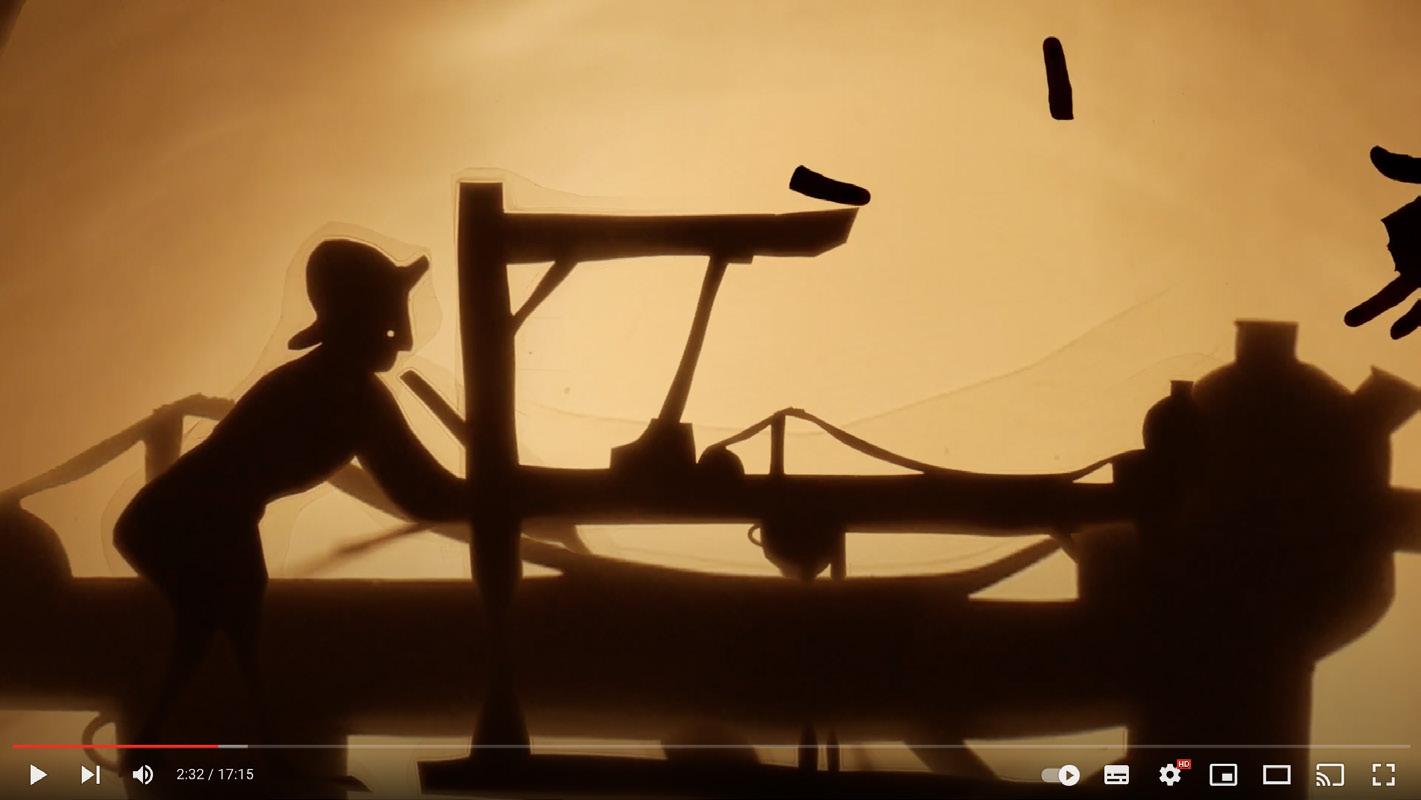
The film tells the story of
Sturminster’s Twillingate connection in a humorous and entertaining way.
As project leaders waited for darkness, to show the film, four members of the New Scorpion Band entertained the crowd with traditional Dorset folk music and sea shanties.
Elliott unveiled a new information board describing the mill’s 1,000year history and there were tours of the mill. Visitors were able to see the new exhibition boards that include the story of a Twillingate student’s Sturminster ancestors, extracts from the Newman merchant letters, photographs of students and Newfoundland ponies (descended from New Forest, Dartmoor and Exmoor ponies), ledger entries, quotes from a podcast and a short film of Change Islands museum owner Peter Porter with his mittens.
The celebration was hosted by Sturminster Newton Heritage Trust and the High School.
The Swanskin Seafarers project was funded by the Association of Independent Museums.
The world’s only surviving swanskin … came to light as a direct result of the project

We’re so excited to be working with Harts of Stur to offer you the chance to win an amazing KitchenAid Cordless Hand Mixer!


No more annoying cable getting in the way, or being limited to working where the plug is; set yourself free, in and around the kitchen!
And thanks to Harts of Stur, we have one to give away. To be in with a chance to win, just click the picture (or here).
The closing date for this competition is 29th August 2022 and only entries received on or before that date can be included. The prize will go to the first randomly chosen entry.
Good luck!
Buying your first home is an exciting, albeit sometimes stressful, time. For many people it is the first time that they have had to use a Solicitor.

The obvious service that a Solicitor will provide to a house purchaser, is that of Conveyancing to complete the sale and ensure transfer of the property into your name. However, there are other ways that a Solicitor can assist you at this time to ensure that all your affairs are in good order. Senior Associate Private Client Solicitor Deborah Escott-Watson reports.
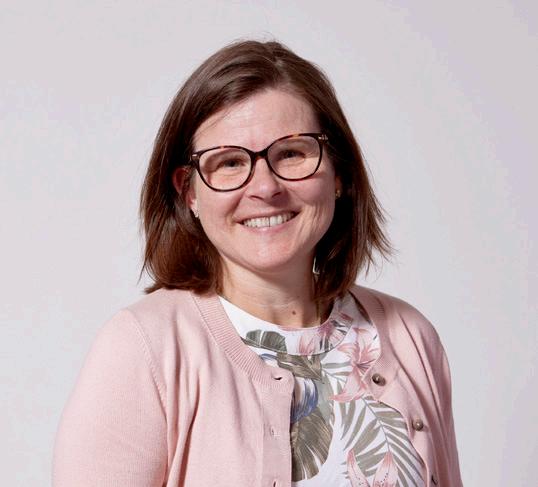
The purchase of your first home is a major financial commit ment. You may have used your hard-earned savings to fund the deposit. If you are buying jointly with a partner, and you have both put different deposit amounts down, how do you ensure that you “get out what you put in” if the house is sold because of a relationship breakup? Other questions that a Solicitor can help with is what happens to my share of the house is something happens to me?

The purchase of your first home is therefore a good time to consider putting a Will in place. If something happens to you, who do you want to leave your house to? If you own the house jointly with somebody else, and you pass away, who will benefit from your property?

It is important that you understand the difference between the different types of joint ownership and how that affects how you can benefit your loved ones with your share of the home. A Solicitor can help you decide if what type of joint ownership - joint tenants or tenants in common – is right for you.
A Solicitor can also help you with a Declaration of Trust if you are buying jointly with a partner. A Declaration of Trust is evidence of the agreement between the two of you as to what share of the house you own, what deposit each put down, what if any mortgage there is on the property and how the sale proceeds of the house are divided between you, taking into account any deposit and capital growth. It also can regulate the payment of monthly expenses in relation to the property, for example council tax insurance and utility bills.
Another important aspect to consider and record is how you would deal with ensuring fairness if one person spent a lot of money renovating the house which increased the value of the house? If a relationship breaks down, a one person does not wish to sell, what happens then? A Decla ration of Trust can provide an agreed mechanism to ensure that the house is sold, and the proceeds distributed fairly.
There is a lot to consider as a First-time buyer. A Solicitor can help ensure that the Conveyancing is done properly, but also help you ensure that you understand all the rele vant ownership options available to you and that you have protected yourself and your family, especially as this is one of the largest financial commitments you will make.
For more information, please contact Deborah by email; Deborah.escott-watson@bat tens.co.uk or call 01935 811314.



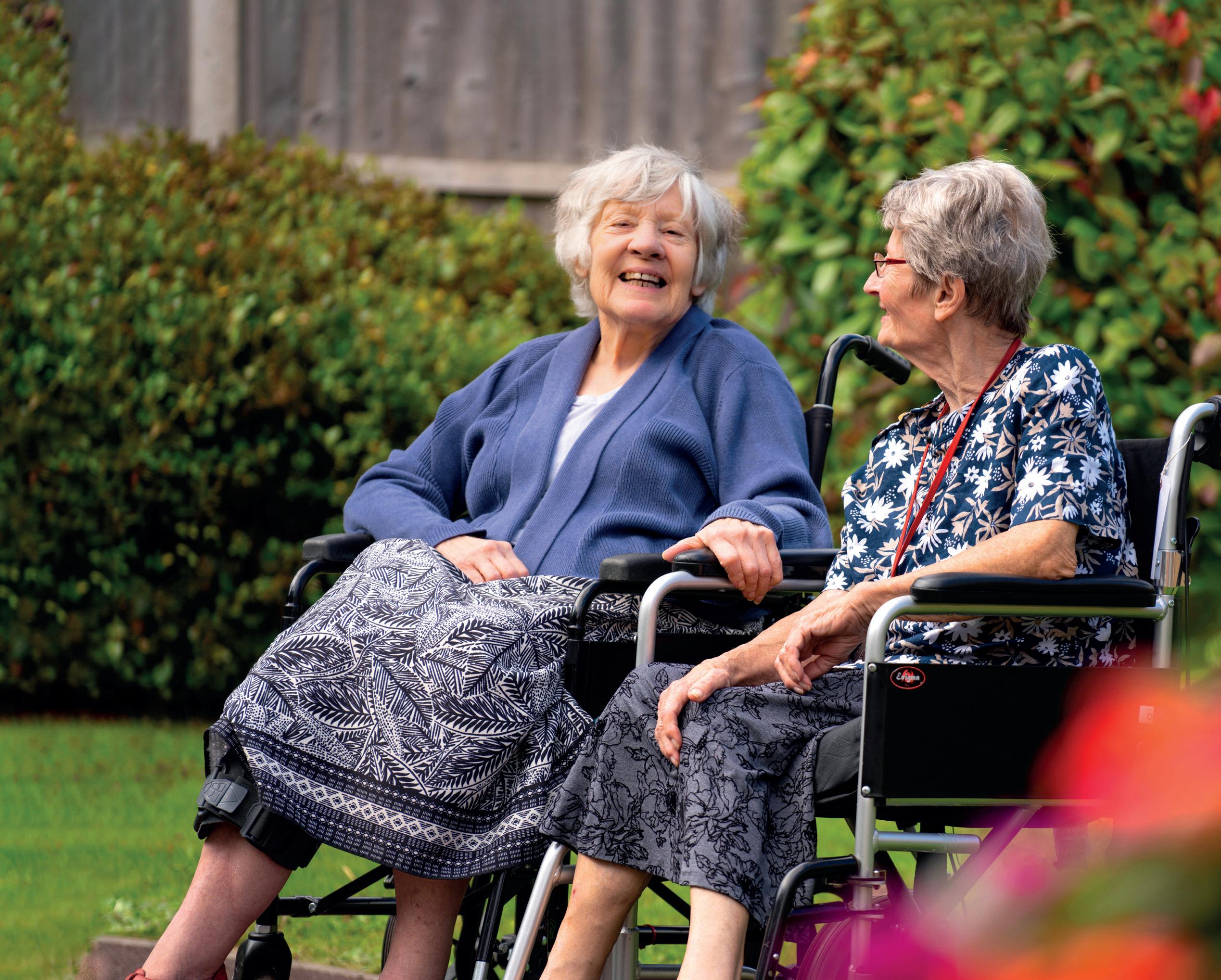
In the quiet walled garden of Hatch House, an evening of stunning ballet once again enthralled three nights of sell-out audiences for three nights – Fanny Charles reports

THREE years ago everything seemed settled – even Brexit was something we were going to have to live with. Then along came COVID and the pandemic and lockdowns and our lives changed dramatically … and then Putin invaded Ukraine and our government proved to be quite impressive on the international stage … but at home – not so much! Death, disaster, chaos – so many things changed beyond recognition.
What a difference three years
makes. And how good to welcome back an event that has been part of the local arts scene for more than ten years.
The return of Ballet Under The Stars felt wonderful, with its glamorous setting in the walled garden of Sir Henry and Lady Rumbold’s Hatch House near Tisbury, beautiful dance and delicious food. But even this perfect garden haven of art and fine dining has been touched

by these massive, catastrophic events.
Two of this year’s dancers came from Ukraine, a poignant and powerful reminder of the rich culture of their suffering country. Julia Moskalenko and Stanislav Olshanskyi, principals of the Ukraine National Ballet, are beautiful, graceful and athletic dancers with a palpable chemistry which brought an added intensity of emotion to their two performances. Of course, our emotional response was deepened by sympathy for two gifted young people who are, on the one hand, free to practise their art, but, on the other, inevitably tormented by fears and worries about their country, their families, friends and fellow artists during the ongoing brutal Russian invasion.
But it wasn’t just a sympathy vote – these are world-class dancers who brought a taste of the music and culture of their country, particularly in their first piece, the Act 1 pas de deux, from Forest Song, with music by Mykhailo Skorulkskyi and choreography by Vakhtang Vronskyi.
This achingly beautiful work allowed the dancers to display both their physical and dance skills and their emotional connection.
Their second piece, Dancing Pergolesi (choreography by Radu Poklitaru) was similarly technically excellent, with a strong response to the Italian baroque composer’s Stabat Mater.
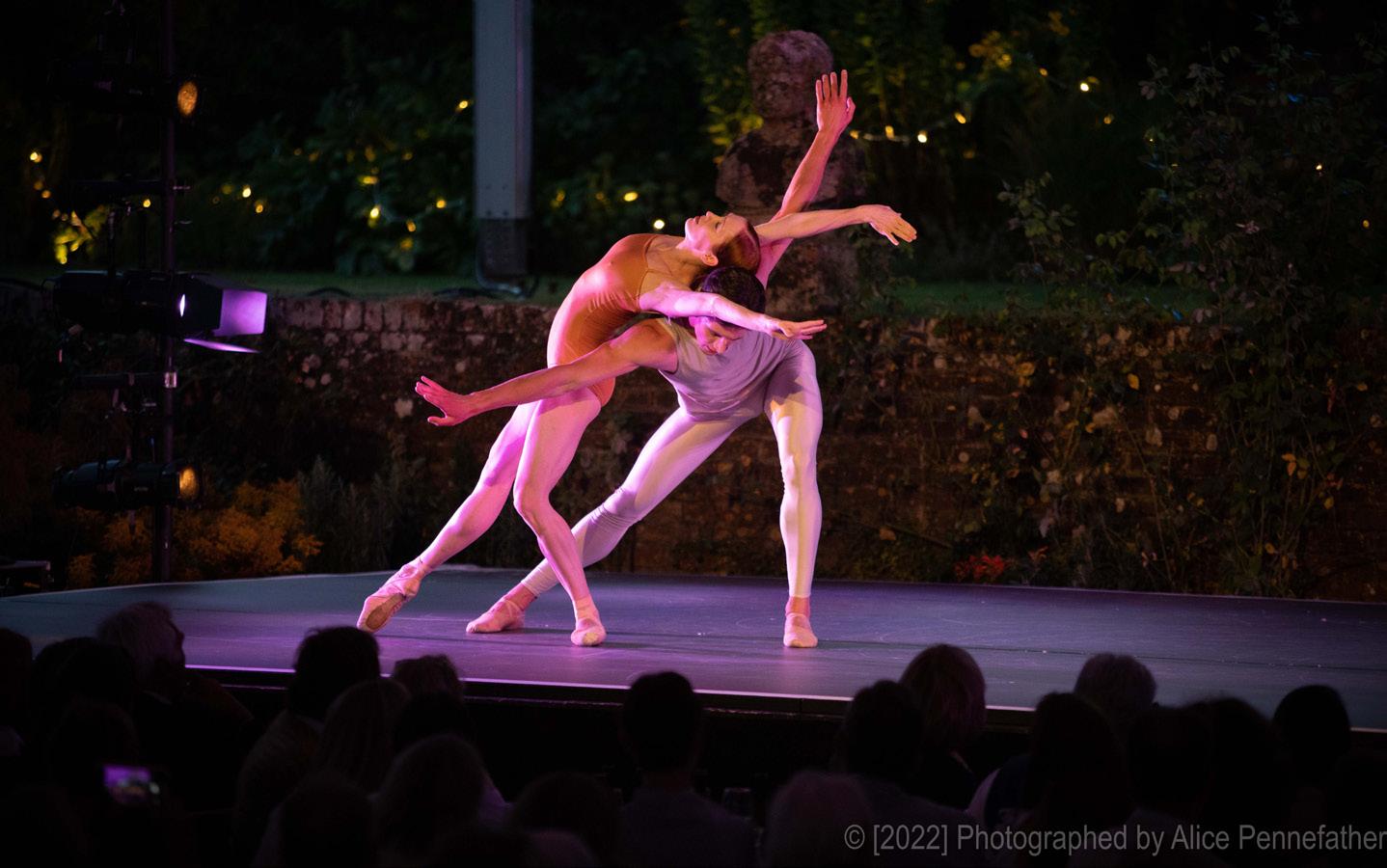
Given the deep religious faith of so many Ukrainian people, this felt a particularly powerful interpretation of the tragic music.
The line-up of dancers included the always enchanting Ksenia Ovsyanick, this time partnered by Timothy Dutson. They interpreted David Dawson’s Voices pas de deux, set to music by Max Richter, and returned in the third dance section with an astonishing and provocative piece, Multiplicity/ Forms of Silence and Emptiness. Choreographed by Nacho Duato, this has Dutson playing the “cello”– Ovsyanick – to the accompaniment of Bach’s Cello Suite No 1 in G Major. There is a strong connection between women and the cello and this work is both an interesting and subversive interpretation of a masterpiece.
Also back, to huge acclaim, was Xander Parish, delighting in The Sleeping Beauty Act III pas de deux with Anastasia Demidova, and then revisiting his 2019
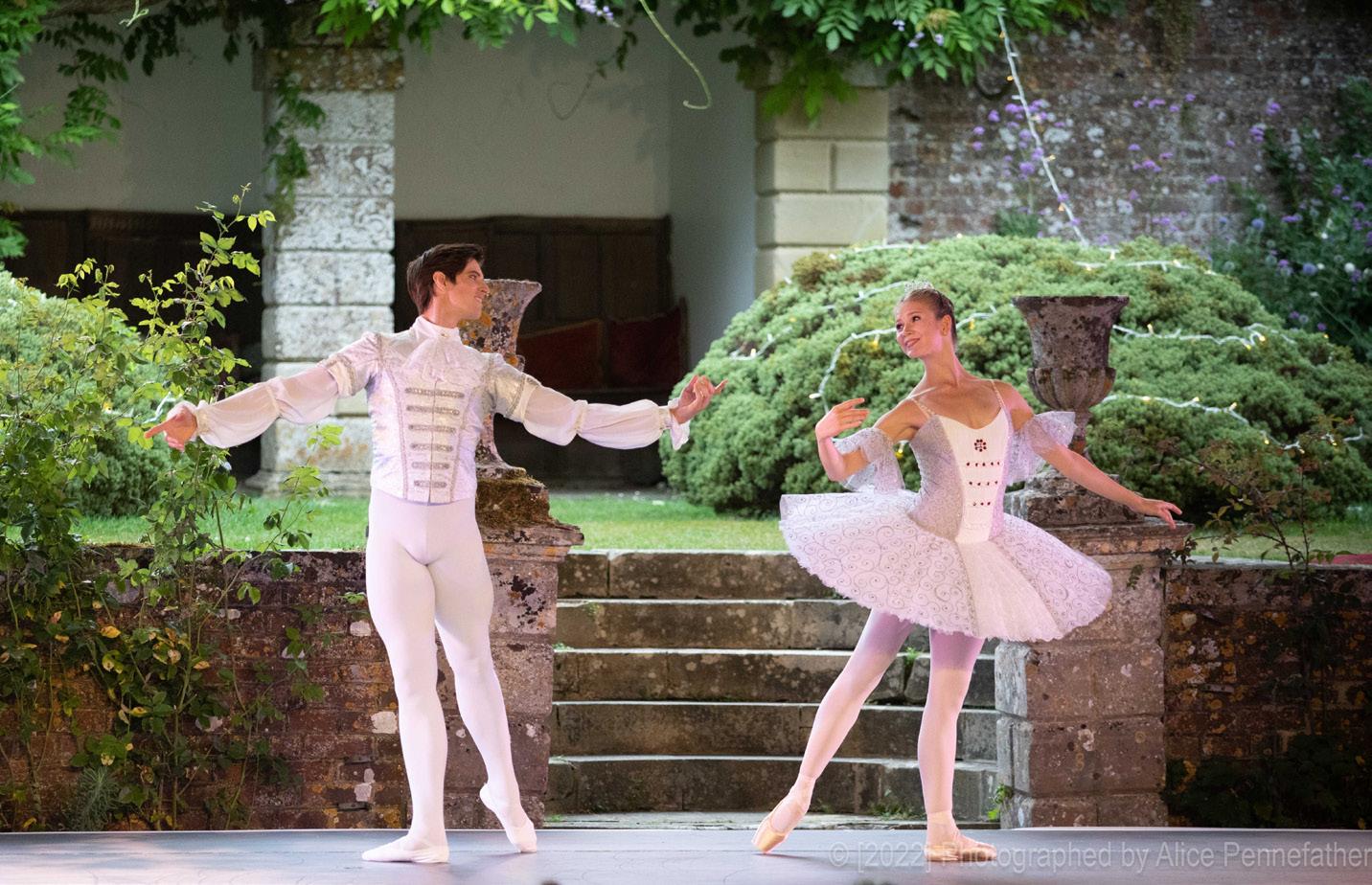
showstopper, the technically dazzling and witty 101 (a kaleidoscope of classic dance positions).
New to the Hatch audience were the young Paris Opera Ballet dancers Hortense Pajtler and Nathan Bisson. They opened the evening with Flower Festival in Genzano, a technically demanding pas de deux choreographed by August Bournonville (music by Paulli), evoking the charm of a Fragonard painting. Their second piece was the exciting and contemporary Triade (choreography Benjamin Millepied, music Nico Muhly).
With the long gap since the 2019 Ballet at Hatch, there was an inevitable break in fundraising for the Dicky Buckle Fund, supporting talented young
choreographers and dance education. This year there was only one new work commissioned by the fund – Opposites Attract by Fabian ReimAir, who also composed the music and danced the piece with Fernanda Oliveira. This was a muscular, visceral exploration of attraction, compulsion and repulsion as the two dancers pushed the physical boundaries of expression in dance. Their second piece was Three Preludes, choreographed by Ben Stevenson to music by Rachmaninov.
The final duo were Royal Ballet principals, the exquisite Japanese dancer Fumi Kaneko and the powerful and athletic Russian, Vadim Muntagirov – his jumps and leaps in the pas de deux from Le Corsaire were real crowd-pleasers, bringing gasps and cheers from the audience. The pair brought the evening to an elegant close with the Grand Pas Classique (choreography Victor Gsovsky, music Auber) –technically brilliant, if lacking the emotional bite of some of the earlier pieces.
It was wonderful to have ballet back at Hatch – a triumph for artistic director Matt Brady and his team, and a glorious evening for the capacity audiences over the three nights.
If you are interested in tickets for Ballet Under The Stars in 2023, please contact 01749 813313 or events@coventgardendance.com
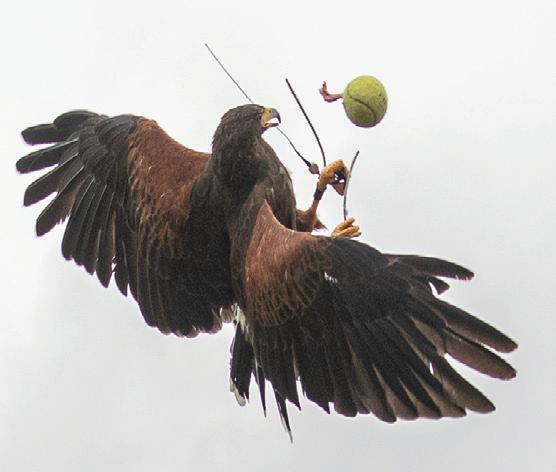
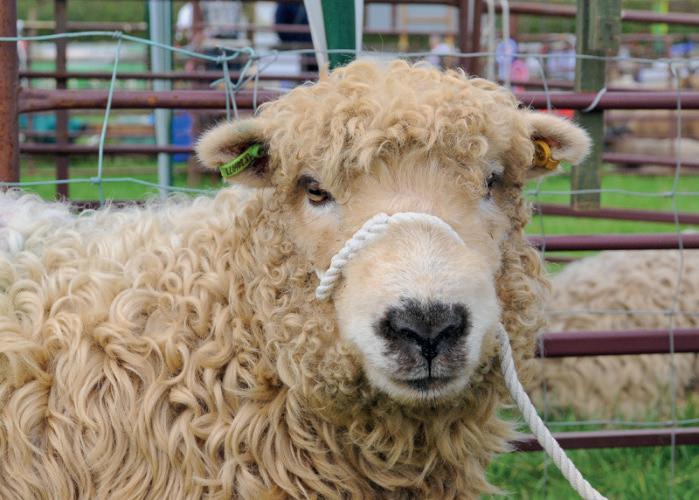
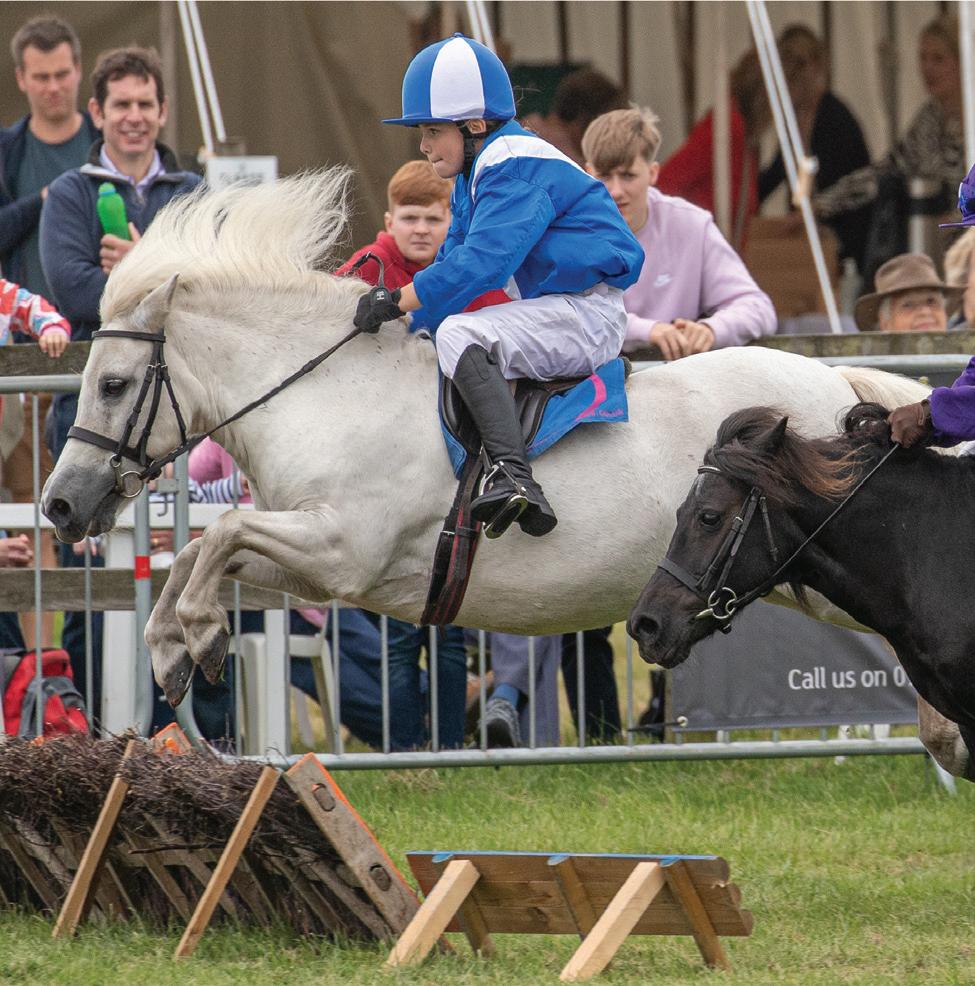

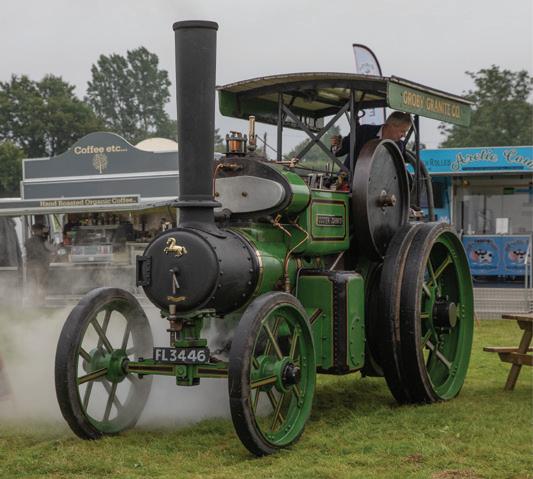
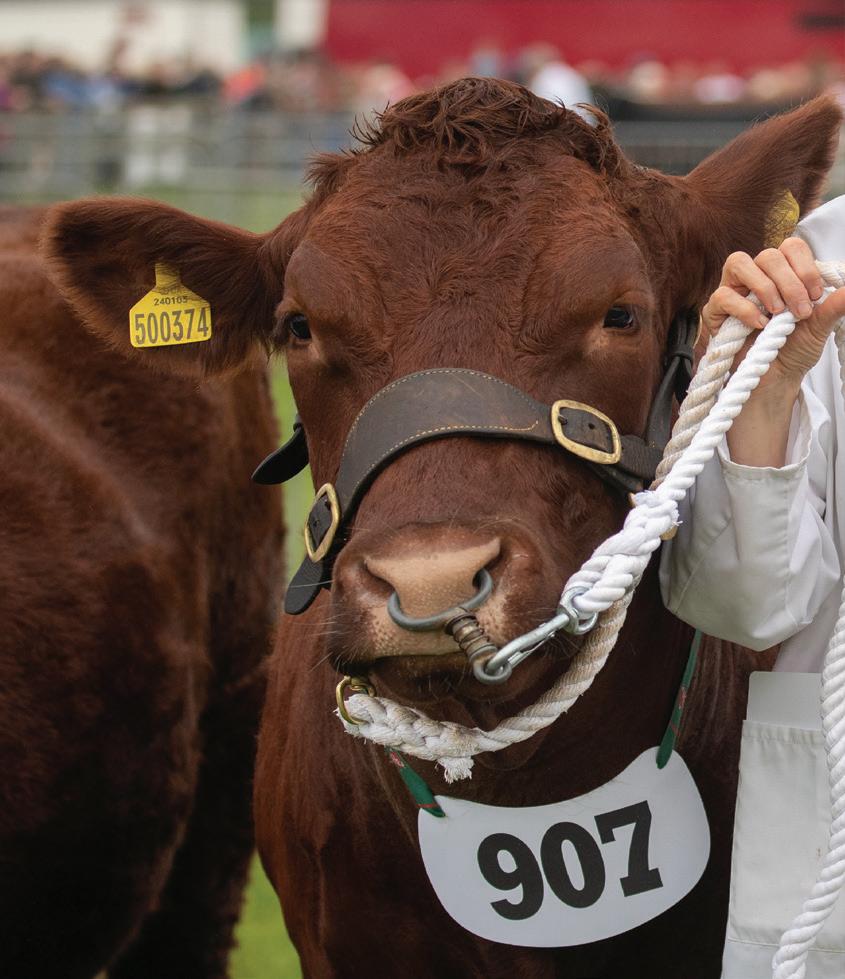










MOZART’s great operas are rightly considered among the finest works of the operatic stage and Dorset Opera Festival demonstrated again this year just why they are so loved and admired. Last year, in a scaled down post-pandemic festival, opera-goers were wowed by their first DOF Mozart – a sensual and stunning Don Giovanni. This year it was Die Zauberflote – The Magic Flute.
The brilliant English libretto, updated and moved to a circus setting, was witty and clever. There wasn’t a weak note anywhere, from the three clowns (usually the Three Boys) to the saucy Three Ladies and the mighty bass, Sorastro (a great performance from recent Royal College of Music graduate Ossian Huskinson.)
The Queen of the Night – here the star of the high trapeze (not to mention the high Cs) – was Hannah Sawle, prowling and snarling like a caged tiger, with the evil and lustful Monastatos (Aled Hall) as her knife-throwing servant.
The leads, dazzling soprano Jamie Groote as Pamina and Ted Black’s Tamino, with his gorgeous tenor voice, were convincing in every detail, and had real chemistry as lovers at-first-sight. The opera’s other lovers, Papageno and Papagena, were, of course, show-stoppers – Felix Kemp was hilarious as the love-lorn birdcatcher and Caroline Kennedy channelled Mrs Overall to brilliant effect as his true love.

Conductor Jose Miguel Esandi took the glorious score at an energetic and exciting pace and the whole performance was, simply, magic!
If Pamina and Tamino sizzled, the same could not be said for
Manon Lescaut and Des Grieux in the week’s other opera. Sadly, this production of Puccini’s tragic opera, based on the Abbe Prevost’s 18th century novel, fell flat, mainly because of the lack of any kind of credible relationship between the leads. The situation was not helped by a production that many in the audience clearly found baffling (it was obvious if you knew the story or if you had read the programme notes first –but how many people actually do this?).
When a director has a Big Idea, one thing is essential; the audience has to get it. Director Christopher Cowell had a big idea for Manon Lescaut – set the whole performance within the prison ship which will transport Manon – and Des Grieux – to exile in the French American colonies. So the action is seen in retrospect by the spirits of two (silent) doomed lovers (actors Iona Crampton and Eduardo Nunez), who are on stage throughout.
On the deck of the ship, patrolled by heavily armed guards, little groups of prisoners huddle in
misery. A ragged young woman is dragged on, followed by a priest (the Abbe Prevost, Tony Kent) and by an anguished young man. There is only a brief moment when the two ghost lovers actually touch, but their chemistry is palpable. The chorus of prisoners becomes townspeople, singers, servants and more, observing and interacting with the central quartet of Manon (the stunning soprano Anna Patalong), baritone Gyula Nagy as her gambler brother, Eddie Wade as Geronte, the old man whose mistress she becomes, and Todd Wilander as Des Grieux.
The absence of chemistry between the two leads – Des Grieux never seemed even to make eye contact with Manon –left a vast hole at the centre of the opera, which could not be saved by Patalong’s glorious voice and affecting performance, nor by Nagy’s fabulously pantomimic (but characterful) Lescaut. The chorus and orchestra, under conductor Jose Miguel Esandi, were on splendid form.
The Fine Times Recorder is for food, arts, travel, events, leisure and lifestyle in Dorset, Somerset, Wiltshire and just a little beyond ... “All in your own good time”
Dorset-born Mark Hix had fame, acclaim and six restaurants – until 2020 happened. He shares his journey back with editor Laura Hitchcock
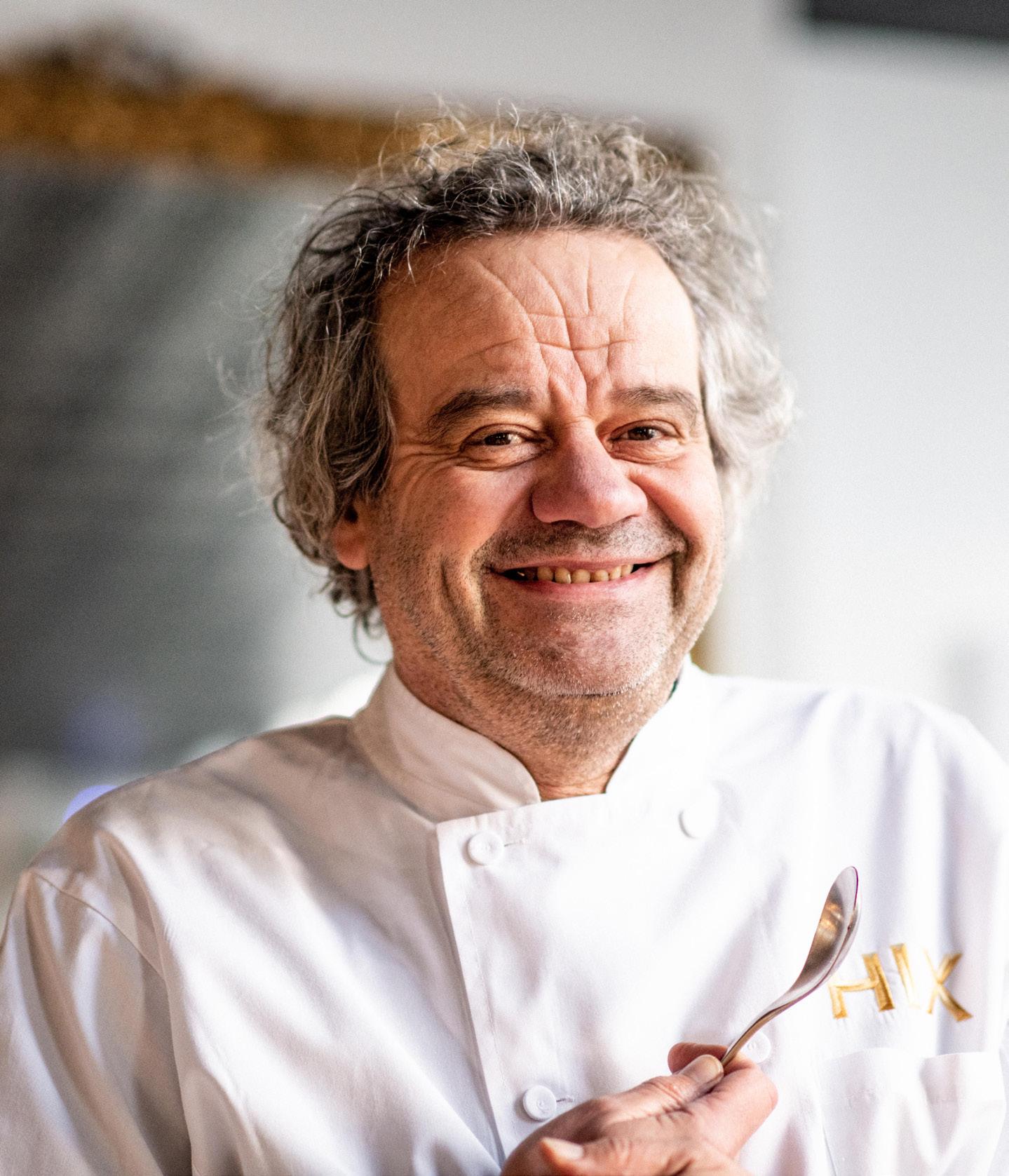
Mark Hix permanently relocated to Dorset at the start of the pandemic, coming home after spending his adult life in London – though weekends were always for his Charmouth home. He had his first head chef position at the age of 22, and has worked at both The Ivy and Le Caprice (becoming Caprice’s Chef Director in 1999). In 2008 Mark opened his first restaurant, the Hix Oyster and Chop House near Smithfield market.
He was awarded an MBE in 2017, and, along with numerous TV appearances, he writes weekly recipe pages for the Daily Telegraph and has his own show on Lyme Bay Radio.
In 2020, during the first stages of the pandemic, the Hix Restaurants (by then operating across four sites in London –HIX Oyster and Chop House in Farringdon, HIX Soho & Mark’s Bar, Tramshed in Shoreditch, and Hixter Bankside, as well as two sites in Lyme Regis, HIX Oyster and Fish House and HIX Townhouse) went into administration. Mark publicly noted that “this was a Board decision, and I have to point out, done without my support.”
Mark retreated to his house in Dorset “to survive lockdown and tend to the garden”.
Two months later, Mark – a selfconfessed eBay addict – started the search for a food truck.
“It’s moveable, I could serve what I wanted and the overheads would be minimal”. A black already-converted American Chevrolet ambulance popped
up – and he won the bidding. “My silly low offer was accepted within 24 hours”. He collected it in south London and the thinking time on the four-hour drive home was the start of a new beginning.
The Truck Arising from his love of fishing, Mark wanted to support the local fishermen while all the restaurants, shops and hotels were closed.
He applied for a licence to buy and sell fish, got a pitch at Felicity’s Farm Shop in Morcombelake and started
selling marine reserve fish and shellfish.
“I called it Hix Oyster and Fish Truck, as close as I could to the fish restaurant I had lost. The first week trading on the truck I took my ex-head chef from the Fish House, telling him “There are no wages, we’ll just split the profits,”. At the end of the week we each went home with 140 quid in our pockets. It’s what I used to earn when I was 19, but it was better than nothing.”
In July 2020, Mark rescued his Oyster and Fish House from the administrators, and was hired as the director of food and drink
and art curator for 1 Lombard Street’s reopening in London. “Maybe I needed the opportunity to return to basics: smoking salmon in my back garden, supporting honest local fishermen and feeding takeaway sliders to the local community from my truck.”
In December 2020 Mark purchased The Fox Inn at Corscombe, but just 18 months later, in the very week I interviewed him, Mark announced the closure of the pub: “I don’t need to tell anyone how hard it has been for the industry since Covid hit, and the challenges simply continue with rising costs and a difficulty to recruit like I have never known in my whole career.
“And so, with a heavy heart, it is time to permanently close the doors of The Fox Inn.”
1. What’s your relationship with the Blackmore Vale (the North Dorset area, not us!)?
I’m a West Dorset boy, born and bred in West Bay. I pass through the north of the county all the time, obviously, but home is here in Charmouth

2. What was the last film you watched?
To be honest I’m not a big film person. Recently I’ve got into Breaking Bad (yes, I know, I’m so
late I’m probably the last person to watch it!), and now I’m on to Better Call Saul. I like to watch some before I fall asleep (and usually have to rewind to pick up again the following day).
3. Favourite crisps flavour?
Cheese & onion! Though I do have a serious fondness for Frazzles. And Squares. The salt and vinegar ones that make your lips pucker up.
4. And the best biscuit for dunking?
A Hobnob! With or without chocolate, I’m easy. I found some mini ones recently, which are also really good.
5. What was the last song you sang out loud in your car? I never sing in the car!
6. Your favourite quote? Movie, book or inspirational? We won’t judge, but would like to know why.
“Work hard, play hard”
I’m not sure who said it, but it’s how I live.
(a little online research shows the phrase seems to have originated in 1827 and can be attributed to Canadian educator William Newnham from his essay ‘The principles of physical, intellectual, moral, and religious education, Volume Two’.

Newnham wrote that: “Whatever is done, it should be habitually done with earnestness; in every pursuit, exertion should be employed; work hard and play hard.”)
7. It’s Friday night – you have the house to yourself, and no work is allowed. What are you going to do?
I’m not actually one for staying in. So if the weather’s good I’d be off out fishing. If I’m at home then I would probably catch up on some gardening – it’s all a bit neglected out there at the moment.
8. What is your comfort meal? A bowl of pasta. I usually have venison from a friend once a month or so, and I make the trimmings into a ragu. I freeze it in portions, and then it defrosts in the time it takes the pasta to cook. Easy.
9. What are your top three most-visited, favourite websites (excluding social media and BBC News!)?
1. Ebay – for random stuff I don’t need.
2. Amazon – for random stuff I probably don’t need.
3. Facebook Marketplace – brilliant for even more random stuff … It’s a bit of a pattern, isn’t it?
(in an interview filled with thoughtful pauses and considered responses, this was an unexpectedly swift, unhesitating and definitive answer! - Ed)
11. What would you like to tell 15-year-old you?
“Work hard, don’t flit, and do some work experience in what you choose”
Sticking to one thing would have made life easier. I was working from the age of 11 – not uncommon then but not something you see nowadays, really, and there’s no replacement for a decent work ethic being instilled.
Fishing! I caught a sea bass this morning. It’s my way of relaxing, I love it.
13. Cats or dogs?
Neither. I have had cats, but to be honest I just don’t really… care that much? We don’t fit.
14. What’s your most annoying trait?
I’m super tidy. Potentially obsessively so. Everything has a place and it must be in it. The sink must be empty. But I don’t personally think that it’s annoying at all!
15. If you had to be shipwrecked on a desert island, but all your human needs – such as food and water – were taken care of, what two items would you want to have with you?
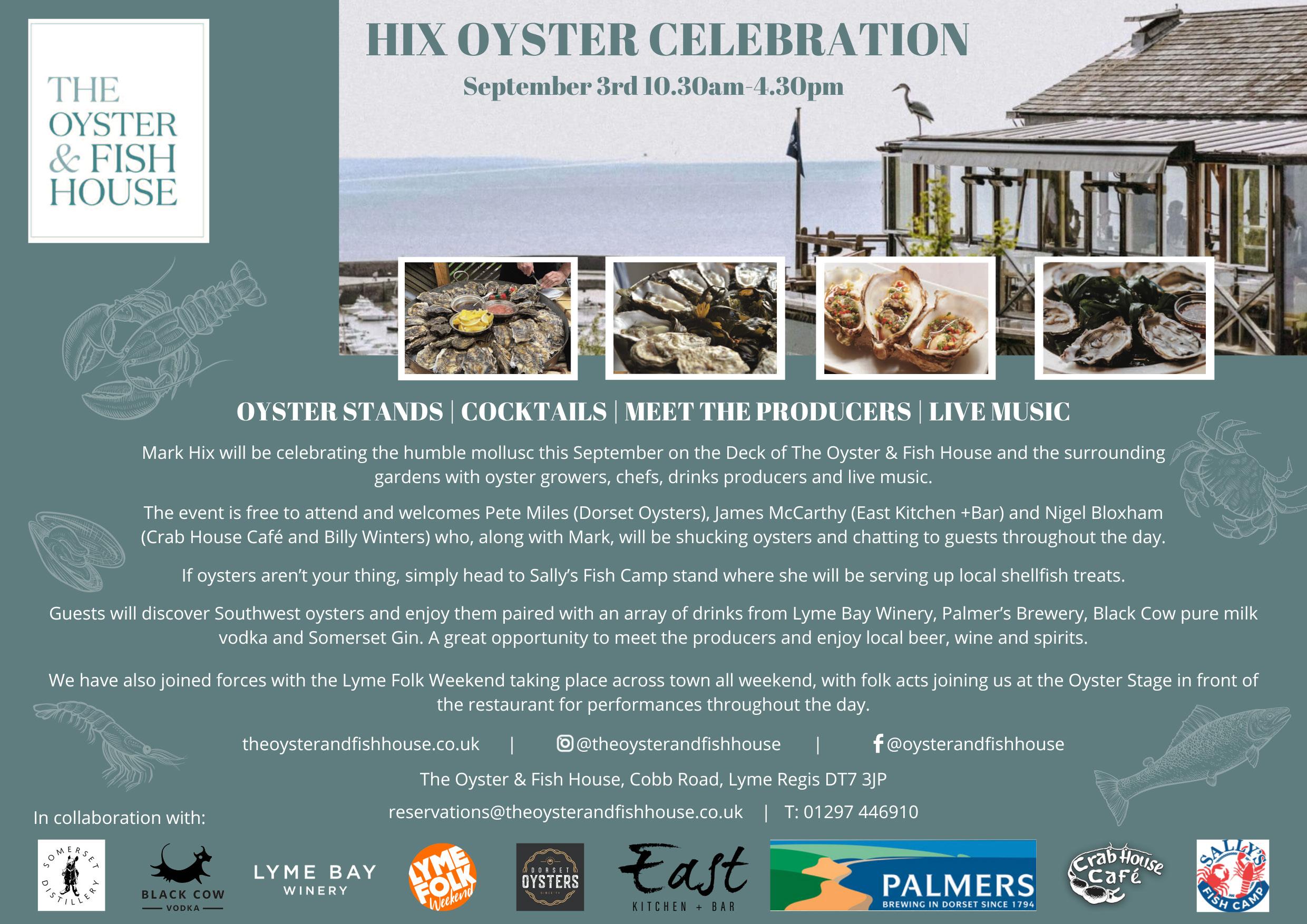
A fishing rod and my Cobb Grill. (not a super-expensive chef kit, the grill is currently just £99 at GoOutdoors! - Ed)
16. Chip shop chips or homebaked cake?
Home-baked cake – you can
never rely on chip shop chips. Actually – and I know it’s a slight stretch of the question – my top choice would be my chilli cheese cornbread. Delicious, and also makes a brilliant gift. Can I cheat with that as my cake?
17. What was the last gift you gave someone?
I bought a piano for my daughter Isla. She’s a keen pianist, so I get a beautiful piece of furniture, and she has a piano whenever she comes to stay.
18. What would you like to be remembered for?
What I’ve achieved in hospitality – but also my failures. You learn so much from failing.
19. Your perfect breakfast?
Corned beef hash.
Or maybe brik (pronounced ‘breek’), a Tunisian dish of eggs in fried filo pastry. I’m happy with either, served with a large pot of coffee, thanks!

Laura Beddow is a Dorset councillor, a parrot rescuer, and dreams of an itinerant life playing her viola around a campfire with a cider in her hand

Councillor Laura Beddow covers the ward of West Purbeck, about as far as you can get from the Blackmore Vale while still staying in Dorset. But she’s also in the Dorset Council Cabinet, and is Portfolio Holder for Culture, Communities and Customer Services. And if, like me, you have no idea what that actually is, Laura’s happy to explain:
‘Just think ‘museums and bins’ and you’ve got it! It’s basically anything that the public will directly use – it’s such a varied remit. I deal with Parish and Town councils. The protection of the razor clam beds off West Bay. All household waste and recycling (actually I’m a completely boring recycyling nerd now). The Arts Development Company (did you know that Dorset is the only council in the country that works with an arts company to deliver its cultural strategy?). Records and archives… No day is the same, that’s for sure.’
Among local politics, Laura’s known as a straight talker; sometimes causing ripples
as she cuts to the heart of issues and focuses on finding solutions:
‘I feel like it’s just really important for us as a council to translate the local-governmentspeak for residents. That’s
literally our job. Instead of sending out two pages of information about refreshing the library strategy, what people really want to know is “are there any changes to opening hours or staffing? Are there any closures?” And that’s it.’
In an interesting, wide-ranging and often off-topic conversation, I discovered that her fantasy Cabinet to run the country would include Optimus Prime as Secretary of State for Transport (‘I mean, he’s literally a lorry. He totally understands the brief’) and Martin Lewis as Chancellor.
When Laura’s not out admiring the inner workings of the
council’s recycling technology, she’ll be found at home looking after a menagerie of broken animals. ‘Current count is three rescue dogs, a rescue tortoise, some rescue rabbits … and there’s often a broken limpy parrot in the house.’
Laura’s not joking – she has an aviary in the garden and works with Birdline Parrot Rescue, taking in rescued parrots and nursing them back to health. Along the way she gets sidetracked by non-parrot rescues; a friend recently handed over a baby dormouse which she had to feed with an eyedropper, and a dodgy-footed seagull named Steven has just been released ‘I just seem to collect random animals. We stick them in a safe space, feed and look after them, and then release them when they’re ready.’
And so to Laura’s eight music choices, along with how and why they stuck in her life:
Well, come on. Why wouldn’t you? Frankly it could have been any Joni Mitchell song. I love her, she’s incredible. But this one in particular – I know it’s
a breakup song, but it’s the ultimate love song too.
This one’s a sad one for me, despite the fact that it’s so aggressive and life-affirming.
Nearly ten years ago my daughter was diagnosed with leukaemia. As a terminally ill child she was offered a ‘wish’ and she chose to go and see P!nk in concert at the O2 in London. It was a brilliant, special night; what an incredible show it was – she’s such a great performing artist, not just a terrific singer.
When Issy died, her friends were really struggling. We decided we wouldn’t have a funeral, and instead we would have a
memorial party with balloons and sweets and music.
I’m not religious at all, but our local vicar was fabulous and she wore a spotty onesie and silver wellies to take the service. This is mine and Issy’s song, and of course we played it that day.
This is just me as a young teenager – that age when you’re starting to work out who you are, what you’re going to be about. My friends were all in bands, and we were the grungy kids getting into Nirvana, painting our Doc Martins. This was the song all my friends learned, and we went to grotty little gigs at local youth clubs and it was completely beautiful. I saw the Chilis recently with my own 20-year-old, and they’re still amazing. I could have picked any Chilis song really, but this one in particular is just my grungy little teenager heart.


I started playing violin at the age of five – I wasn’t brilliant so I switched to the viola (I worked out that viola players are more rare, so you can get away with being less good). I joined the Dorset Youth Orchestra and was a total band geek.

My granddad’s name was (genuinely) Ivor Head, and he loved this piece of music. When I was about eight I got to see Nigel Kennedy play, during his amazing punk classic era. The concert was brilliant – it opened my eyes to the fact that classical music could be fun and COOL –and he played this piece. I queued up afterwards to get his autograph, and asked him to sign my ticket for my grandad, who would have loved to hear him play but was just too poorly to go to the concert. Nigel Kennedy asked what my grandad’s name was, and when I told him he tore the ticket in half and wrote ‘Ivor half a ticket from Nigel Kennedy’.

I just … really like this. Amy Lee has such an amazing voice, so other-worldly.
Sorry, there’s no big story to share with this one. I just love it.
This is ALL about that fiddle playing! The Levellers always show me the life I thought I would have as a teenager. An itinerant wanderer, sitting around a campfire playing the
Now I’m a Tory politican.
It didn’t quite pan out, did it?
But a part of me still believes I could totally do this.
Another amazing voice from the 90s – and really it’s the evolution of the Joni Mitchell track. It’s another break up song (aren’t they actually the ultimate love songs?), but it’s amazing. The lyrics are so carefully chosen and placed. It’s casual, slightly ethereal, and yet it’s so well constructed. I have an absolute horror of trite pop rhyming, and this is the exact opposite.
I had to – and yes, it could have been any Bowie.
I was born and brought up in Lulworth Cove, and I’m sorry to say I got to the age of 15 without knowing Bowie at all. But in those days Lulworth was a small village, and we used to just gather and hang out together – no age groups, it was just a big sociable village community. We would drag an old cut up oil drum to the
beach for barbecues (yes, way back in the days before I myself had to propose a ‘no disposable barbecues’ rule for Dorset), have a few drinks, the local who ran boat trips from the cove would take kids out on water skis and an inflatable doughnut …
One night we were on the beach, and this song was playing. I just thought ‘wow. This is actually amazing. I’m on my beach, my parents are over there, my friends are here, I have a drink in my hand, the stars are bright …’ It’s not what the song is about, but when I hear it, it’s just everything that was growing up in a small seaside village.
And if a giant wave was washing in, and Laura could only save one disc?
I’d save Joni. Obviously. Laura’s luxury item?
A blanket. And no, not for any of its incredibly practical uses, because that would break the rules:
‘I tried to think of something clever and unusual but everything is better if you can tuck yourself in. Also, when I sleep, even on the hottest of nights, I have to have my feet tucked in. Because monsters.’ And the book Laura would like to take with her?
Good Omens by Terry Pratchett and Neil Gaiman.
I mean, I have every single book Terry Pratchett wrote, but this one is the Best Book Ever.
The relationship between Neil Gaiman and Terry Pratchett is really interesting, and the combination of the two of them in this book is pure magic.
My ten-year-old asked me recently why I loved Terry Pratchett ‘because reading’s a bit boring’. So I read him Johnny and the Dead – now he gets it.
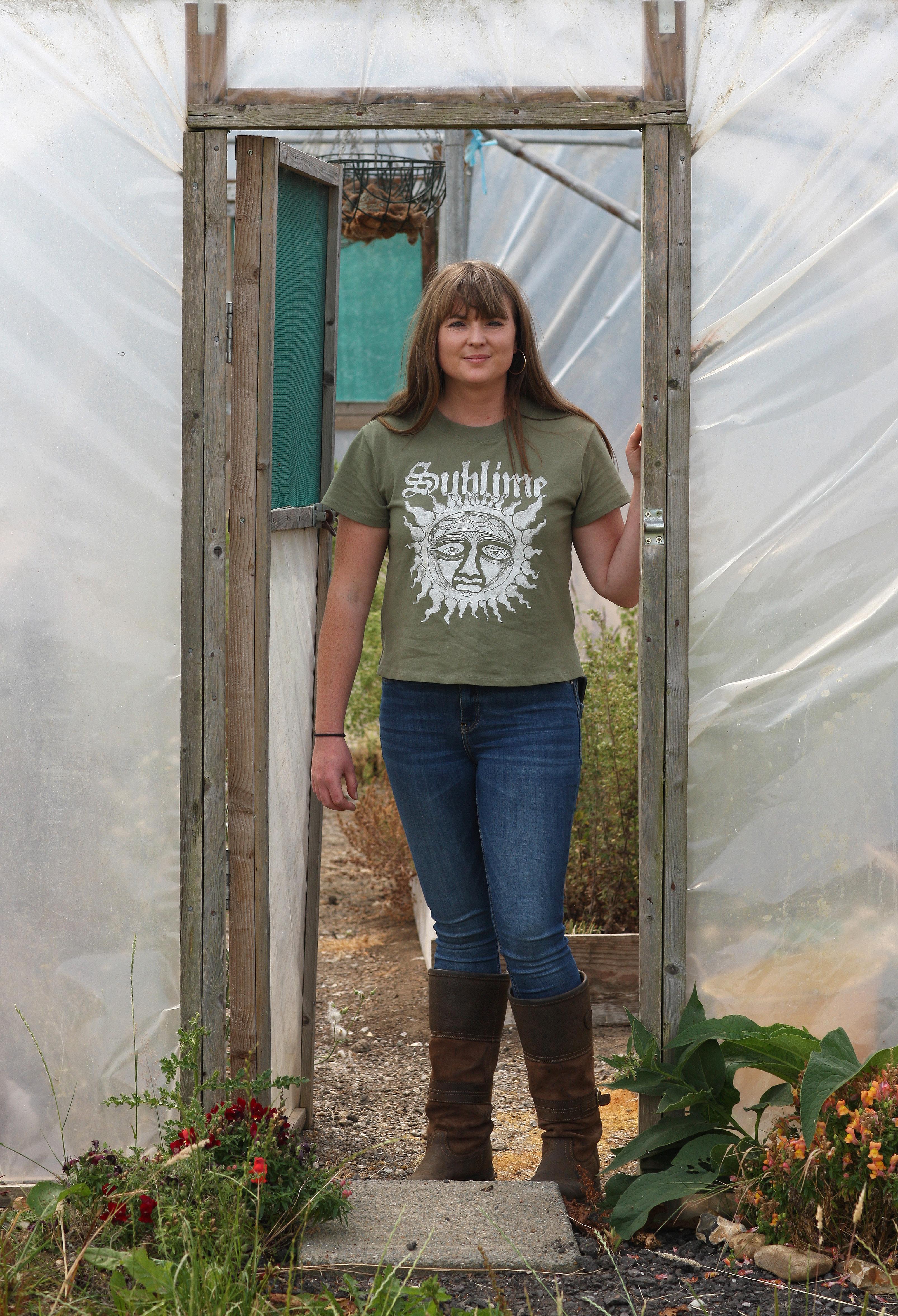
Sophie Baker is a regular face at farmers’ markets and rural shows across the region.
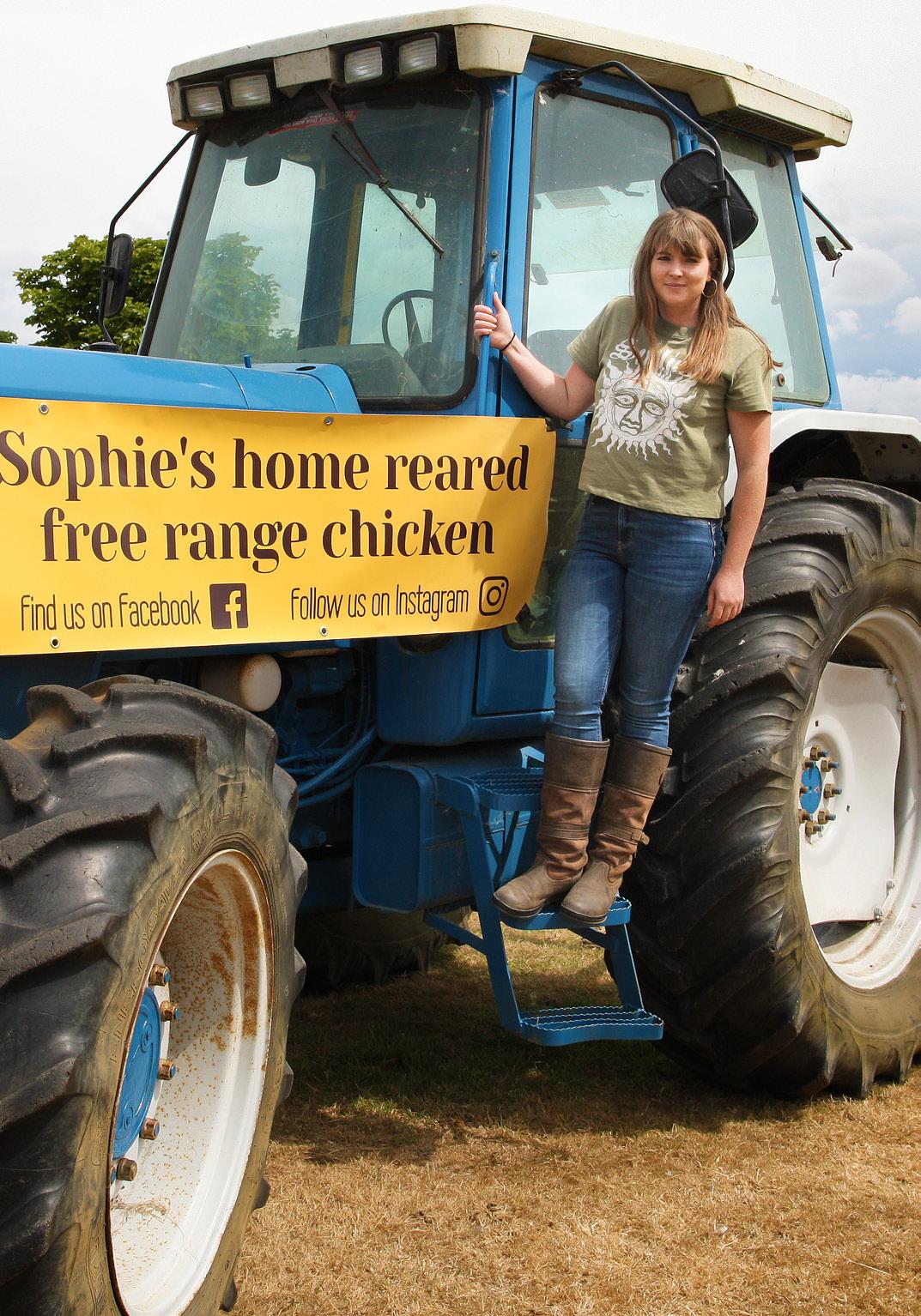
And she stands out.
Not only because her home-made, award-winning sausages are delicious, but also because, at just 26, she’s one of the youngest local producers on the scene – and one of very few females in the meat industry.
The Advertising Standards Authority would agree ‘Farm Girl Sausages’ lives up to its name. Sophie is most certainly a girl and she runs her business from a smallholding in Holt, near Wimborne. On 15 acres, Sophie raises 150 chickens from day-old chicks to slaughter. Her lamb is from Quarry Farm in Shaftesbury and pork is sourced in her own village. She’s just started selling whole roasted chickens and has a brilliant line in tasty burgers and BBQ food.
All her products are gluten-free and contain only natural ingredients. She also offers delicious plantbased and vegan options and the recipes are all her own. Herbs for her gorgeous sage and pepper sausages are grown in her own polytunnel, as are the tomatoes and basil for other great flavours. Apples for pork sausages are picked in her garden and she’s just started keeping bees for her new honey-flavoured products.
Leaving school at 16, Sophie (a keen horsewoman) worked at breaking-in horses and at a local meat factory. She explains: ‘I had lots of ideas on how products could move forward from traditional to more trendy. I knew there was a growing market for gluten-free and rusk-free products, that people also wanted different flavour combinations and vegan options. When the factory closed, I thought why not start up my own sausage-making business?’
It’s no surprise that Sophie has entrepreneurial drive and vision. Her whole family are selfemployed in businesses as diverse as selling boats, running a caravan park and maintaining farm machinery. Sophie says: ‘I’ve always admired people like my mum, dad and brother who run their own small businesses. It’s been part of my growing up and I’ve seen first-hand how much hard work it is.’
Her boyfriend, also self-employed, supports Sophie fully in the long hours she’s working. Summer is a key time, with food festivals and country shows every weekend, as well as her regular weekly stalls at Shaftesbury and Salisbury Farmers’ Markets. It’s a seven-day working week.
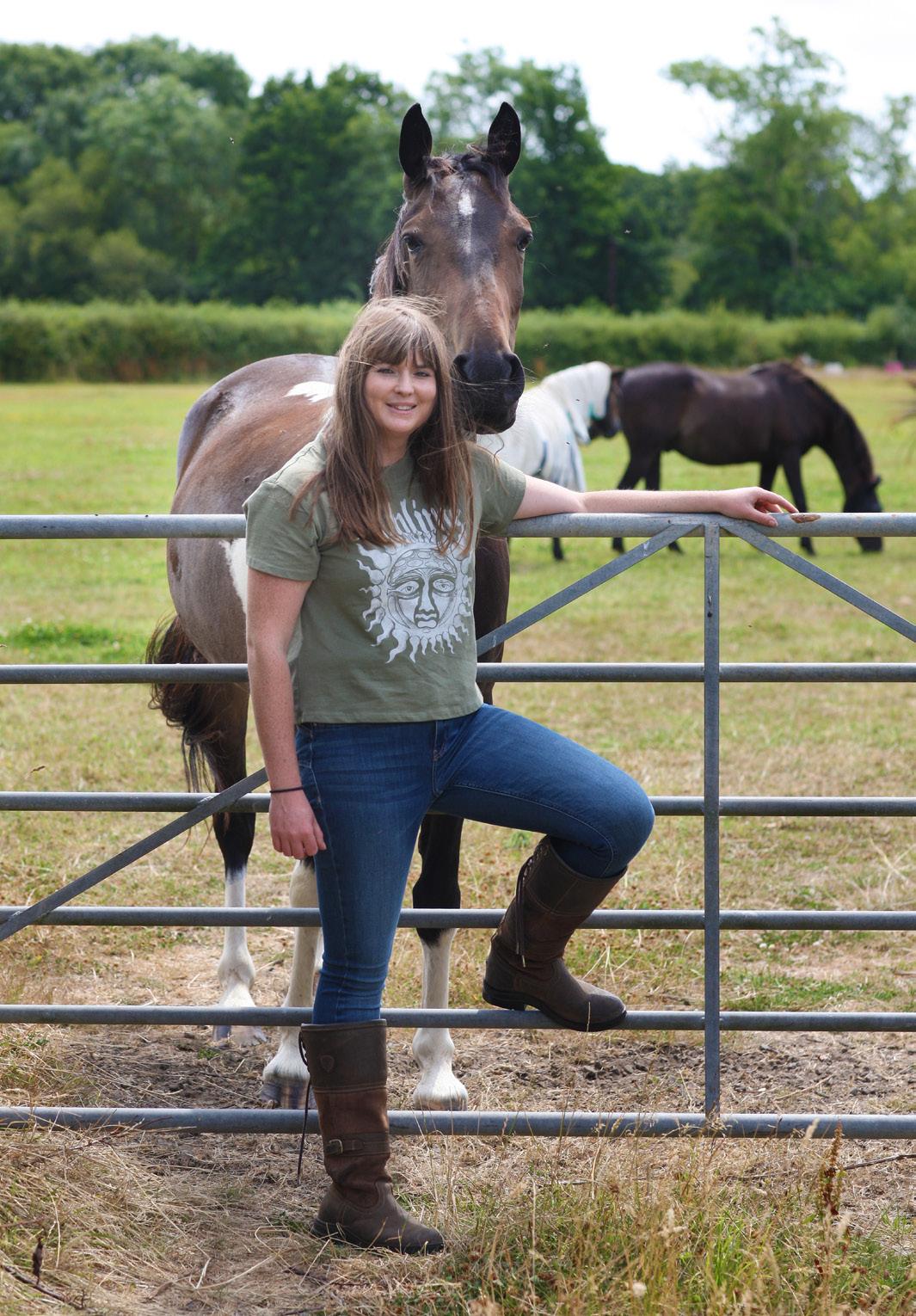

‘Don’t sell the sausage. Sell the sizzle.’ Sophie Baker is managing to do both brilliantly with her award-winning sausage business, reports Tracie Beardsley
“I make around 300 sausages for a market. For festivals, it’s more like a thousand. I’m up at dawn tending chickens, then making sausages and products from mid-morning onwards. Radio is my soulmate at the moment.’’
Clearly passionate about her food provenance and her environmental footprint, Sophie is working towards the coveted organic certification from the Soil Association. ‘I’ve got through the mountain of paperwork,’ she explains, ‘and I’m now in what’s called a conversion period with the land. I’m so excited. I know a lot of customers want organic products. My customers are my free market research. I offer samples on my stall and get immediate feedback.’
She adds: ‘I’m inspired by the producers I meet at farmers’ markets – I have free business mentoring every week! Kensons Farm in Wiltshire has been organic since 2001 and I really admire their ethos. They encouraged me to get onto social media to promote my products and this has really helped grow my business.’
Sophie now produces videos and recipes for social media and customers can order products online and pick up directly from the farm.
‘I love showing customers the chickens and my setup here so they can see exactly where their food is coming from.’
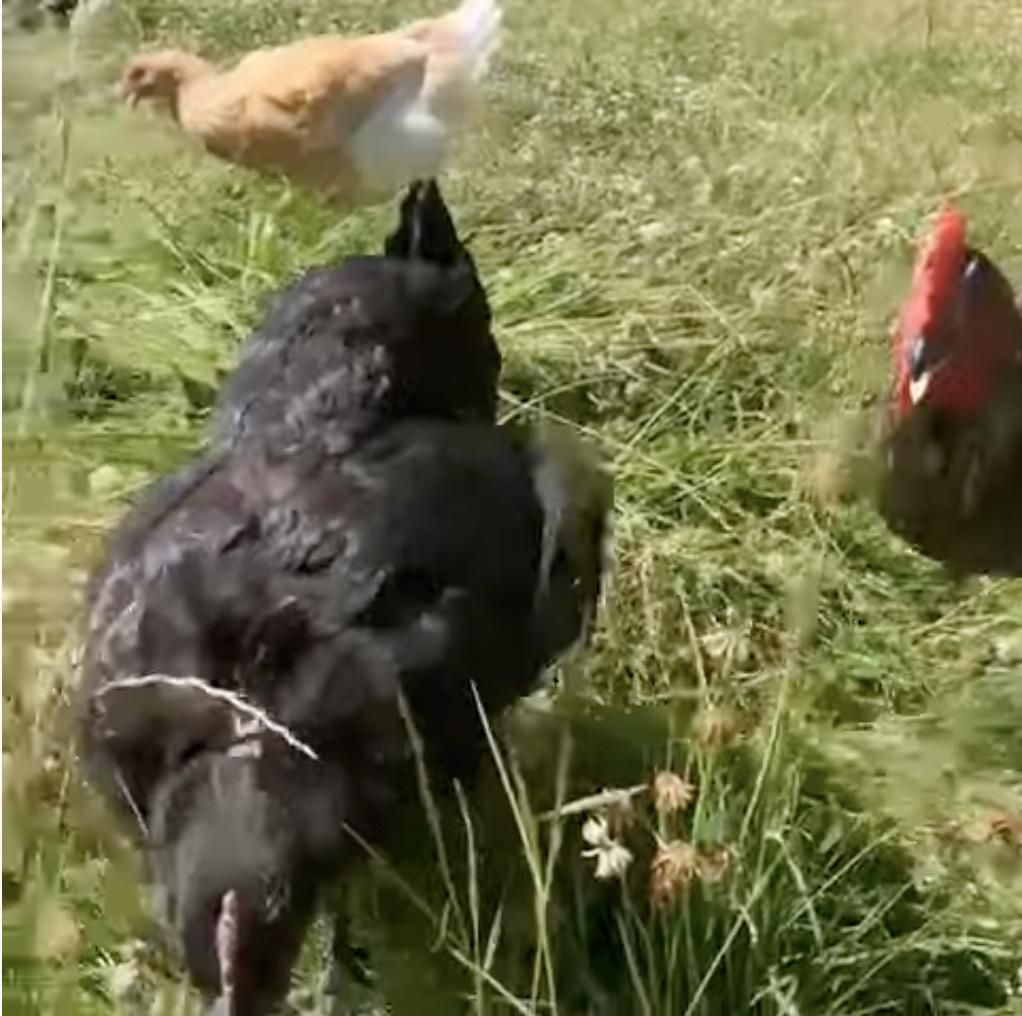
Sausage-making workshops at her farm may be on the cards in the future. That’s really selling the sizzle!
Shop for Sophie’s produce online at FarmGirlSausages.com
You can see Sophie – and sample her wares – at the Gillingham & Shaftesbury Show on 17 August. Look out for her bright yellow tent!
Sophie uses all local ingredients –apples for pork and apple sausages are picked in her own garden

A-list dinner party guest? Emily Pankhurst – what an incredibly brave woman!
Cookery books – they help me with new seasonings and ideas. My favourite chef is Hugh Fearnley-Whittingstall. His recipes are simple, fresh and with lots of ingredients from the garden.
In this hot weather, it has to be sweet chilli and lime – I like the combination of sharp and zesty flavours. Chicken and Marmite is another favourite – marmite works so well in sausages.



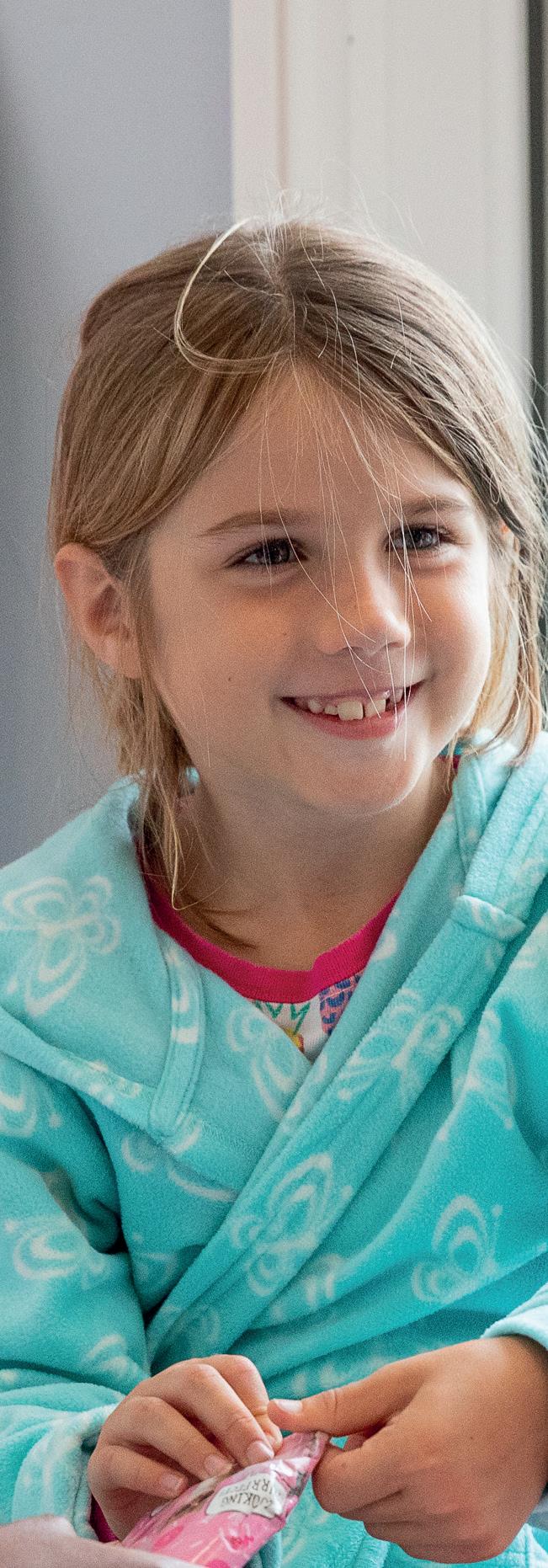



The change in the way we consume our news has lead inexorably to a political fatigue that challenges politicans, says MP Simon Hoare

In a few short weeks I shall be serving under my fourth Prime Minister in seven years. Of itself, that is quite a statement. Political stability has been something of a hallmark of the UK over the years. A steady-as-she-goes approach. This got me wondering whether or not this is an exceptional period that proves the rule or a new set of rules which will govern and shape politics. Of course, there have been two seismic changes in the UK. The 2016 EU Referendum was momentous by any definition. It would change how politics was done, alter business models and challenge personal political affiliations across the country (see Red Wall election results of 2019 as firsthand proof). No sooner was that general election over, my party returned with an incredibly commanding majority and normal service resumed, than Covid hoved into view with all of the health and economic impacts that we know so well. As a result of both of these, and other events, I cannot think of a time when politics has been less sure of itself and when the electorate has been in such a state of fluidity when it comes to its thinking. These twin challenges will continue for a while yet.
As well as the (hopefully) one-off events mentioned above, there are other major influences on politics; one in particular which has permanently changed us. Not that long ago we sourced our news and information from newspapers, radio and TV. The news was broadcast at around 1pm, 6pm and 10pm. The Today Programme and Newsnight bookended the daily news menu. Not so now. Newspapers aren’t news any more – they are commentary pages on what happened yesterday, trying to add interpretative value to stuff you already know.
And how do you know it? A 24-hour news cycle and social media feeding us with an unremitting stream of news and views as and when it happens – now rather than yesterday’s news. So hungry for talking heads has this news-hydra become that almost anyone can become an expert. Virtually everyone has the potential to secure Andy Warhol’s 15 minutes of fame.
Twitter, Facebook and others provide a hugely important outlet for commentary. Just reflect on how many times a day the BBC and others will read out or have on screen the Tweet of a politician or opinion former. I still remain slightly staggered when, on a few occasions, I see a Tweet I posted on an issue flash up on the TV screen. And social media is having an effect on how politics is done. It is a rolling opinion poll – one wrong word and the pack are on you. One poor interview and you’re social media fair game for a cycle or two. And then of course we have to overlay the pernicious ‘fake news’ or ‘biased media’ narrative of the shameless populists and their acolytes.
‘I don’t know who to believe any more’ is an increasing refrain. The challenge for politicians of all stripes is to answer that challenge – to be serious in our endeavours, respectful of each other and honest with the country. If this is achieved then we can, I believe, deliver the political stability of which I spoke at the top of this column, notwithstanding the impact of major events and the ever-growing demands for news, comment and opinion. I think there is an element of political fatigue across the country – serious government for serious times will restore our energy levels.
One wrong word and the pack are on you
A recent film was an unsubtle look at what those in power are (not) doing about the current climate emergency, says Ken Huggins of North Dorset Green Party
Surely there’s no longer any doubt; we humans are both the cleverest and the stupidest species on earth.
The satirical film Don’t Look Up portrays the absurdly suicidal responses of politicians, major industry and the media to news that an asteroid will shortly destroy the earth. It would be funny if it didn’t so accurately portray our current world. It’s not a subtle film, but the time for subtlety has passed. For decades, scientists have patiently reported the disastrous consequences of our fossil fuel addiction, but they have been repeatedly undermined by greedy, dishonest decisionmakers. Little wonder many are now taking direct action and
risking prison to get the crisis taken seriously. Politicians lie about the seriousness of the situation and avoid telling the truth for fear of losing votes. Polluting industries protect their massive profits by funding climate denial stories and greenwashing their activities to appear to be taking action. Watch the BBC series Big Oil vs The World for proof of the cover-up. And finally, corrupt media persist with climate denial. Some of it is subtle, like coverage of the recent record-breaking heatwave showing happy crowds on a beach – “its only nice sunny weather”.
Failure to take adequate action is resulting in more extreme
heatwaves, wildfires, droughts and flooding around the world. And it’s just the beginning. It will get worse. How much worse will depend on what we do now.
In 12 years of government the Tories have scrapped zero carbon building regulations, pulled the plug on railway electrification, undermined the solar panel and onshore wind industries, encouraged fracking, subsidised fossil fuel production etc. ...
None of Dorset’s Tory MPs attended the recent emergency climate briefing given to Parliament by the govt’s Chief Scientific Advisor.

We are being failed disastrously, and will pay a high price unless we take action.
Now.
The worry of the Australia deal, swinging politics and the ever-more-terrifying cost of living – Mike Chapman speaks for Liberal Democrats across the Blackmore Vale
What is happening to our democracy? The Australian trade deal has been formalised without any democratic scrutiny of any kind – not a single parliamentary vote. It’s even worse when you realise it is likely to form a template for other such deals. Britons may gain as consumers and a few exporters and services companies may benefit, but most of us are likely to be exposed to an increase in cost-driven, lowerstandard competition as a result, especially in the agricultural world. The level playing field of the EU’s Single Market has gone.
That the Brexit wonderland was voted in by a majority of about 2.7% of the electorate is bad enough. But now we are about to witness a lurch to the right due to just 0.3% of the electorate; the 150,000 or so Conservative Party membership. This may lead to a lurch to the left in a subsequent
general election, if the polls are anywhere near correct. Pushme-pull-you politics as always. We ought to know better by now. We ought to drive for a better consensus and be led by people with real skill and understanding rather than dogmatic, careerdriven professional politicians.
15 per cent mortgages?
Still, not to worry. We are told that somewhere out there a magic tree is bending under the weight of luscious moneyfruit – ready for picking as early as September. It will then be fertilised with loads more tax-free magic money, which apparently won’t even attract higher interest rates.
What a difference a few years make. My first mortgage was up around the 15 per cent interest mark. There was just no money for anything else much. Apparently, though, economic fundamentals don’t apply these days if you wish hard enough. Mind you, we may all
need a bank loan soon just to pay the energy bills.
And there’s the rub: if all it takes to re-budget your household is an adjustment here or there, then fine, you carry on.
The cry from the streets, from the working majority and from the vulnerable, however, is that with everything else going up sharply, nothing coming down and the fuel bills doubling, maybe tripling come January, ends cannot – cannot – be met, inevitably leading to disequilibrium, debt and a great deal of unhappiness, here in rural Dorset as much as anywhere.
We are going to be at the Gillingham and Shaftesbury Show on the 17th - we want to listen to local hopes, fears, gripes and groans but also to visions and ideas. We want to find that common ground and a forward view that everyone can get behind. See you there!
Though an inland town, Blandford still has a duty to contribute to ocean recovery, says Labour’s Pat Osborne – and it can start with the Stour
This month I’d like to take the opportunity to talk about some of the work being done by Blandford Town Council’s Climate and Biodiversity Working Group to promote marine citizenship and community custodianship of the River Stour. The Stour has a very special place in the hearts of Blandfordians, connecting us to one another through a shared sense of place, belonging and identity. The Stour also connects us to the wildlife and ecosystems that it supports, providing generations with the opportunity to live alongside otters, swans, kingfishers and other creatures thriving in their natural habitats. It links us to all
the other communities that have built up along the banks on its journey from Stourhead to the sea. And through connecting us to the sea, the Stour connects us to the rest of the world.
At this month’s town council meeting I proposed a Motion for the Ocean, which was developed for Blandford Town Council in partnership with marine biologist Dr Pamela Buchan. The motion recognises that we need ocean recovery to meet our net zero carbon targets, and we need net zero carbon to recover our ocean.
It also recognises that inland communities, like Blandford, have an important role to play
in ocean recovery by acting as the custodians of the rivers, waterways and tributaries that run through our towns and villages on their way to the sea.
As a town council, our powers are clearly limited, but the motion recognises that there are things that we can and should do to contribute to ocean recovery. These are sentiments echoed throughout Blandford by community groups like Blandford War on Waste.
The fact that the motion was passed unanimously by the council sends a clear statement of intent: ‘This may be a drop in the ocean, but it’s our drop and we’re going to look after it.’
social homes and affordable rental properties for Dorset’s working families and young people.
• Protection for Dorset’s unique natural environment and Greenbelt.
• Action on the Climate and Ecological Emergencies.
• Necessary infrastructure including public transport, health and education services, and utilities.
Dorset CPRE and Dorset Deserves Better Alliance ask for more consultation as council delays Local Plan, says Rupert Hardy, chair of North Dorset CPRE Dorset Council (DC) has secured extra time to prepare its new Local Plan; the government has agreed the Council’s request to extend the deadline to 2026. Dorset CPRE and Dorset Deserves Better now call on the Council to use this time to consult and work openly with communities on a Local Plan that responds to Dorset people’s concerns, priorities and needs. DC’s statement to Cabinet on 26 July indicates that they will take more time to consider the new Local Plan for Dorset, as it will set the pattern of housing and other development for the next 15 years.
Dorset CPRE and Dorset Deserves Better welcome the delay and the Council’s aim to secure protection for Dorset from speculative development in the meantime. The removal of the ‘duty to cooperate’ with neighbouring authorities also means it does not now need to make up for a shortfall of homes from the Bournemouth, Christchurch and Poole area.
The Council’s statement summarises the key messages it received from the unprecedented 9,000 responses to consultation on the first draft Local Plan. Local people said loud and clear they want a Local Plan which delivers: • the right development in the right places, and of the right quality.
• Lower housing numbers based on recent data, not the outdated assumptions currently being used.
• More truly affordable homes,

Dorset CPRE shares these concerns and priorities. The list sets a mandate for Dorset Council to develop a genuinely local approach to the Local Plan for Dorset, including the key issues of housing numbers, locations and affordability.

We look forward to DC discussing with our communities what housing numbers and locations they now have in mind. The Council’s reference to ‘more focus on new or significantly expanded settlements to help deliver the longer-term growth needs of Dorset’ will ring alarm bells for somes, particularly given concern regarding the 3,750 homes proposal for north Dorchester. DC referred earlier this year to 22,000 houses as opposed to the earlier DC target of up to 39,000. This independent lower estimate of Dorset’s genuine and sustainable needs was supported by Dorset CPRE, Dorset Deserves Better and many others. Since then, population projections have fallen further.
DC now say that Dorset can be a pilot for a new national approach to Local Plans, including ‘national development management policies’ and ‘streamlined processes’. It will be vital that national systems do not contradict local communities’ needs and priorities.
Peter Bowyer, Chair of the Trustees of Dorset CPRE, says ‘We call on the Council to listen to our communities and stand up for the priorities and concerns that local people clearly expressed in consultation on the first draft Local Plan. We look forward to joining in a positive and constructive discussion with the council about the Local Plan that Dorset wants and needs’.
Giles Watts of the Dorset Deserves Better Campaign says ‘We welcome Dorset Council’s announcement which supports many of the issues we have been asking for. We applaud the council’s decision to listen to the concerns of local people and change direction in a way which we believe will be very positive for the future of Dorset. Nevertheless, we still have some concerns over the lack of emphasis on brownfield developments first and the impact of new greenfield developments.
We believe that rewriting the Local Plan is a huge opportunity for the Council to progress a radically different and exciting vision of the future based on renewable energy, green jobs, care for the natural environment and, ultimately, supporting the needs of Dorset people.’.


Livestock and agriculture are rightfully the heart of one of the region’s most celebrated rural days out, the Gillingham & Shaftesbury Show.
Taking place on 17th August at Turnpike Showground near Motcombe, the committee behind the show believes showcasing agriculture to its 30,000 visitors is their priority. The 2022 show will bring the much-loved Grand Parade of Livestock, sponsored by Woolley & Wallis, back to the Main Ring for the first time in over 15 years. The Gritchie Brewing Co Main Ring will see the show’s champion cattle and sheep parade together – allowing the crowds to enjoy the best of the best from the days competitions, including rare and minority breeds. It’s a reassuring move, and against the prevailing trend for rural shows to lose their traditional agricultural business focus as they lean towards becoming ‘attractions’ for their thousands of visitors.
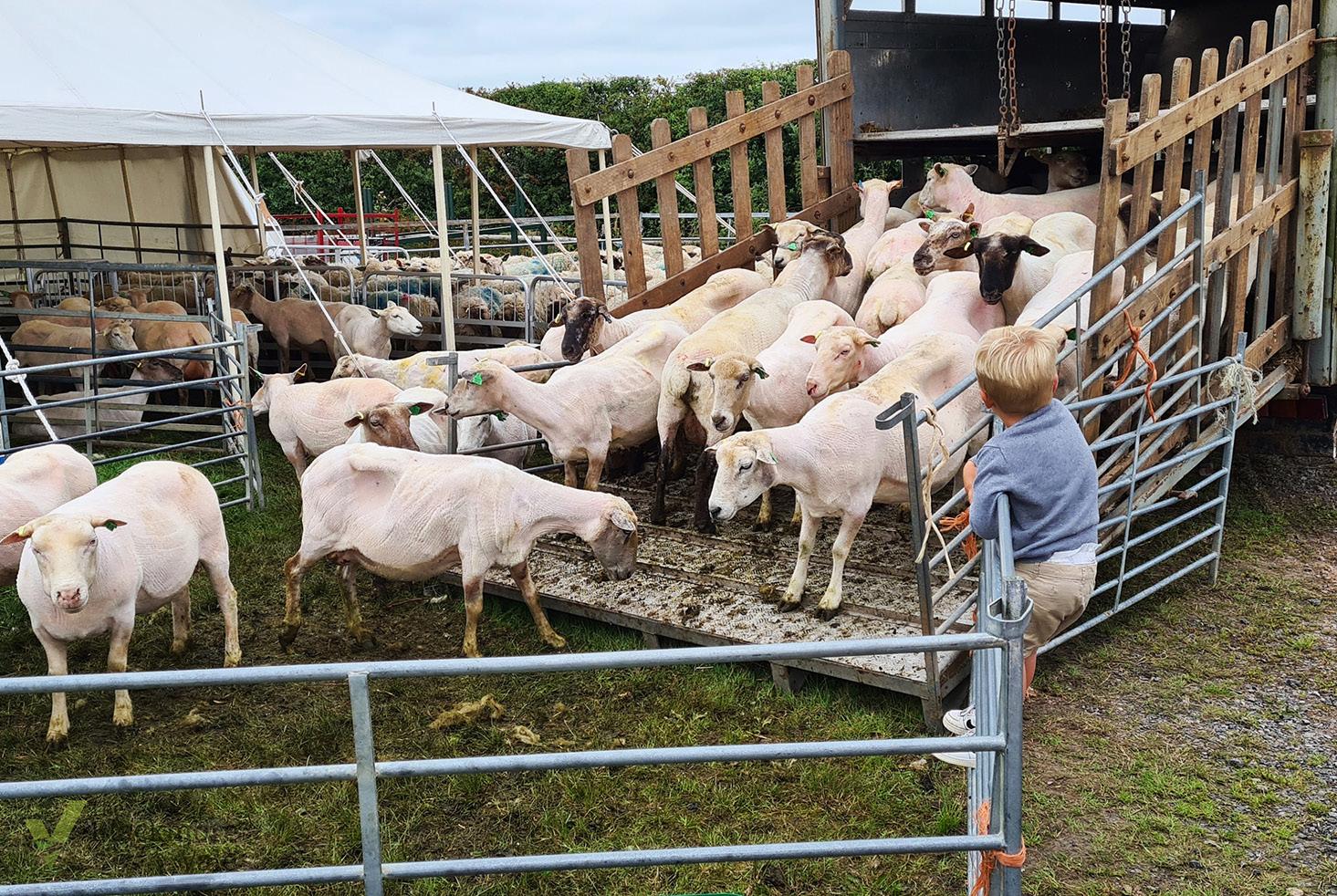
Giles Simpson, local farmer and agronomist who is the newly appointed Show Chairman said: ‘This spectacular parade sums up what this agricultural show
is all about. Our aim this year has been to put livestock and agriculture truly at the heart of the Show. This is an event where business gets done in the agricultural sector, and this year it will have agricultural and rural businesses on all four sides of the ring.’
This year, the show welcomes over 85 agricultural businesses including machinery dealerships, buyers, suppliers, agents and farmers - it’s a key date in the rural calendar for agricultural

businesses to come together for networking and business opportunities.
The Food and Farming Area combines entertainment with education on all things to do with dairy and beef farming.
James Cox, Show Organiser, explained: ‘From field to fork, we want to give visitors a unique insight into the facts and myths about this industry which is worth £112 billion and employing over four million people.’
The evolution of farming is also celebrated with the Heavy Horse Village and Steam Section – twice as big as last year. See the gentle giants who worked the land for millennia as they are put through their paces.
Follow through to the noise and smell of the steam engines, and the rapid revolution of modern farming machinery that we see in the fields today.
(do come and meet the BV team - we’re Stand E13!)
Tickets are on sale now –book early to save. Adults £14, Children £3, Family £32
A young fan of the sheep at the G&S Show
The agricultural machinery aisle at the G&S Show 2021 All images: Courtenay Hitchcock
Sturminster Newton was once home to one of Europe’s largest cattle markets. In the late 1990s the market site was sold for development, the closing of the cattle market ending a 700-year tradition of livestock trading in the town. One of the other claims to fame Sturminster had was as home to Sturminster Creamery, makers of awardwinning Sturminster Cheddar and other cheeses. Following these damaging closures a public meeting was held where the town decided an event to celebrate cheese was one way to keep Sturminster Newton on the map. In 1999 the first Cheese Festival was held – it lasted four days and was a wholetown event, from tours of the Creamery to a tea dance in the old Sturminster Hall. There were three scout marquees on the recreation ground hosting local food producers and crafters (and a fashion show one evening!).
Fast forward to 2022 and the Cheese Festival is still going

strong. It is now a two day weekend, with some rather larger marquees, and it takes over the whole of the recreation ground on Ricketts Lane. This year the show will feature 21 Cheese Producers and 47 Artisan Food & Drink Producers, showcasing the best that the West Country has to offer. Naturally there will be a huge variety of cheeses on offer, and you can sample them with an array of chutneys, bread, biscuits ... and of course follow up with some sweet treats of jam, cake or chocolate. Perhaps finish off with some locallydistilled gin, vodka or wine from a Dorset Vineyard. The Craft Tent will be home to jewellery, portraits, photography, home scents, wood turning and more, with more stands outside, including plants and garden furniture as well as craft demonstrations, not forgetting the local charities and other organisations which are represented too. Add to the mix some children’s entertainment (including free Punch & Judy Shows and entertainment from Strawberry Jam), live music, the Real Ale & Cider Tent and an array of outside catering to choose from (yes, including
The Cheese Festival 2021 Image: Courtenay HitchcockCheese Toasties!) there is something for everyone. And you never know who you might see –the founder of the world’s largest greenfield festival has been spotted at the Cheese Festival in the past.
If you fancy a short stroll then take a break to wander down to the Town’s historic 16th century mill which still grinds wheat for flour. It became an international star during the first lockdown when it leaoped into action for a short time, once again producing flour commercially. Then back to the Festival for some liquid refreshment or maybe an ice cream before one last wander around the food marquee.
Find out more at www. cheesefestival.co.uk and buy your tickets online. Earlybird tickets purchased before 10th September are £7 (£8 on the gate). Children under 15 go free. (Free parking is available in the field adjacent to the site). You can also keep up with all the Cheese Festival news on Facebook and Instagram.
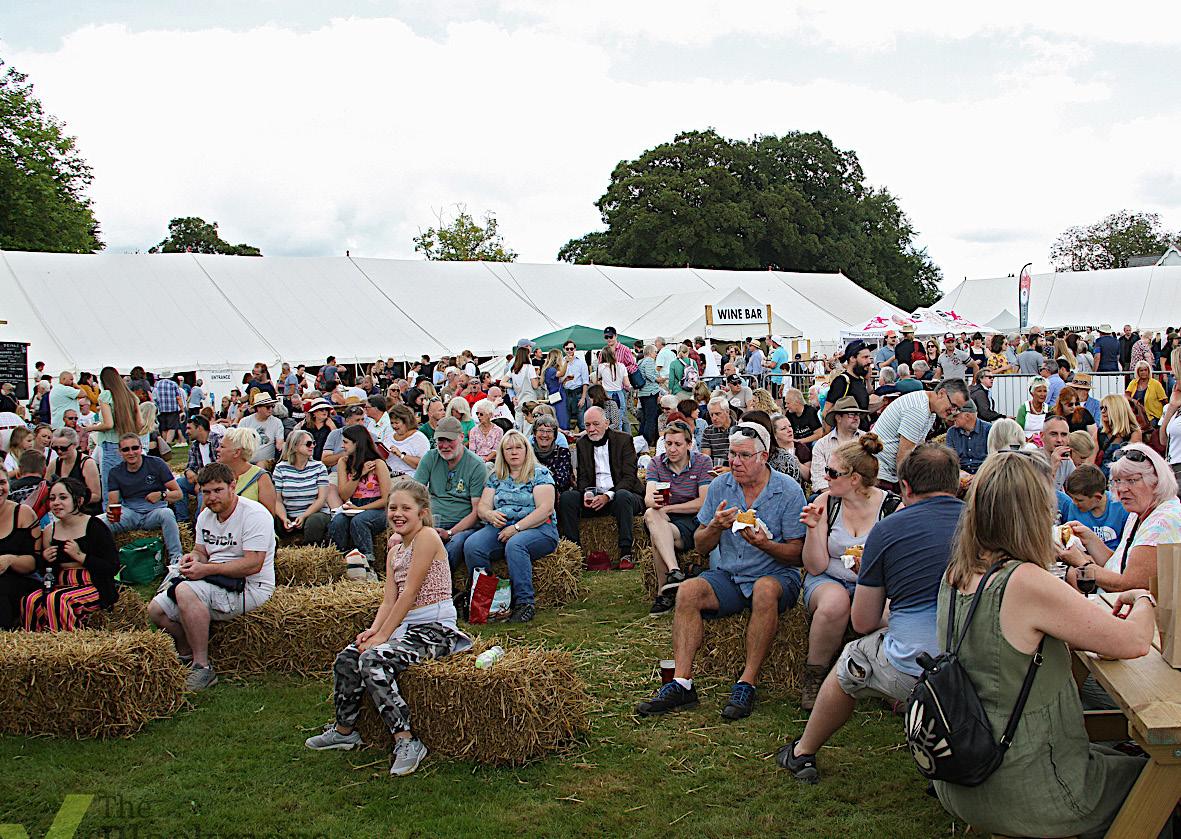

The not-for-profit team behind Riversmeet already run the town’s lesiure facilities, so when Alan Waistell proposed a new inflatable play as a much-needed facility that could re-use an empty building itseemed like a perfect project. The next step was actually getting the building ...

‘We can’t thank Dextra enough’ said Alan ‘As one of the major stakeholders, the Dextra team came and had a look at what was the empty Legends club - he’d never been inside. He looked around and said “you want
this?!” It was in a sorry state inside, having been a nightclub for a long time and then empty for a few years. He said “Dextra will support you, you’ve got it –but you do the work!”
The team knuckled down, filling a total of 19 skips before the new flooring could be applied.
‘I’ve been a project manager for 30 years, and this is by far the toughest I’ve ever worked on’ said Alan. ‘The sheer amount of manual work involved in getting the building ready. The cost of materials and labour steadily increased by circa 50
per cent over the 16 months. We managed to only go 10 per cent over budget, though. The only thing that didn’t change price was the £80,000 inflatable itself. Just waiting for it to arrive from China was stressful, with no idea of where the ship was, or if the inlfatable was even on it.’
On 23rd July, Space Inflaters finally opened its doors. Unusually for a soft play, the fun isn’t limited to those under 12.

A group of ladies from the Super Seniors Sessions at Riversmeet were the first to try out the enormous new inflatable –and they had a blast as they rediscovered their youth. Parents are encouraged to play with their kids; soft play no longer means sitting on uncomfortable chairs drinking very bad coffee for hours while the kids have the fun:
‘Actually our coffee’s amazinglocally roasted, properly brewed. I insisted on it!’ said Alan.
The only rule currently is that no unaccompanied adults are allowed - you really must bring a child with you!
Gillingham’s largest charity has opened Space Inflaters, Dorset’s new inflatable play centre in the old Legends Building.
Space Inflaters is now open seven days a week, 9.30am to 6.30pm. Sessions are 90 minutes long (extendable during quiet periods), and can be booked via the website (walk ins are welcome, but numbers are limited so at busy times you may have to wait). Pricing starts at £5 per child off peak (£3.50 for under threes, who have their own play area), and £1 per adult. The cafe serves freshly prepared pizzas, butcher’s burgers and sausages, jacket potatoes and sandwiches all using locallysourced produce where possible.





Alan had a final comment urging people to come ‘Space Inflaters provides a brilliant activity for the whole family, of course, but also by using it you are supporting a genuine local community charity - we purely work to meet the needs of the local area, and to ensure that excellent leisure facilities remain available to all.’
When the lights go down, the lasers come out and the music goes up!
The main inflatable area is open to everyone over three years. No upper age limit!
As well as bouncing there are interactive games to play too





The Child Okeford Art Trail is a showcase of work by 19 local artists at five venues throughout one village. Painters, sculptors, jewellers,
textile artists and potters will show and sell a variety of work. Art Trail leaflets with maps will be available in local shops. Why not walk the whole
Art Trail and visit the venues throughout the village?
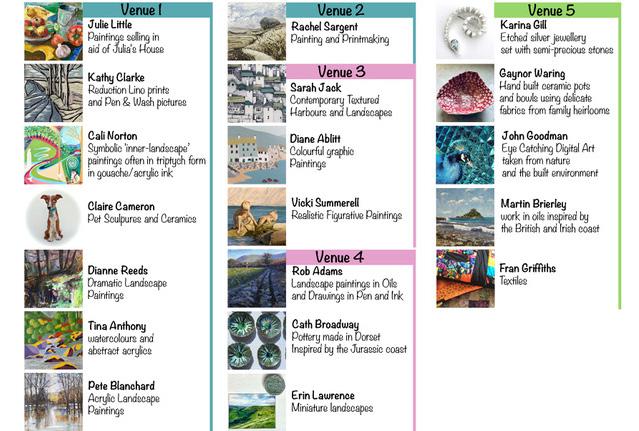
Free admission, Friday 26th to Monday 29th August, 11am to 4 pm.
01747
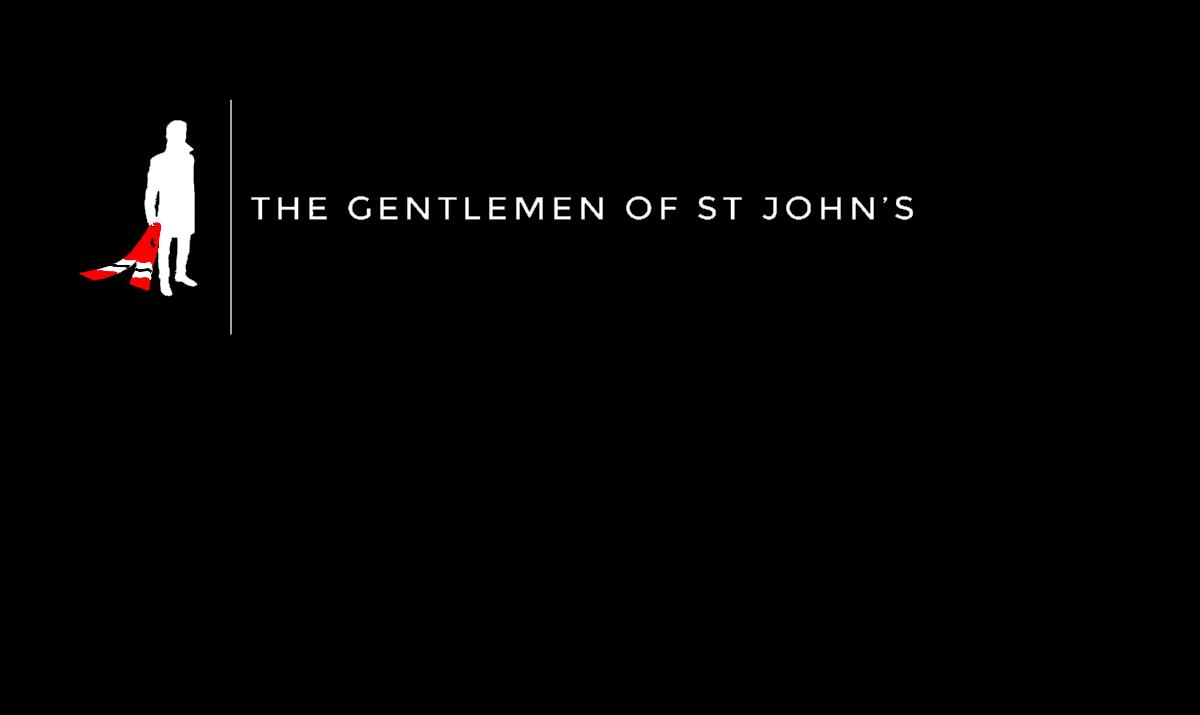



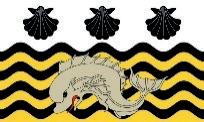












































































































































































































Smedmore House, one of Dorset’s finest Georgian manor houses, is holding an open day in aid of Wessex Cancer Trust on Sunday 25th September between 2pm and 5pm.

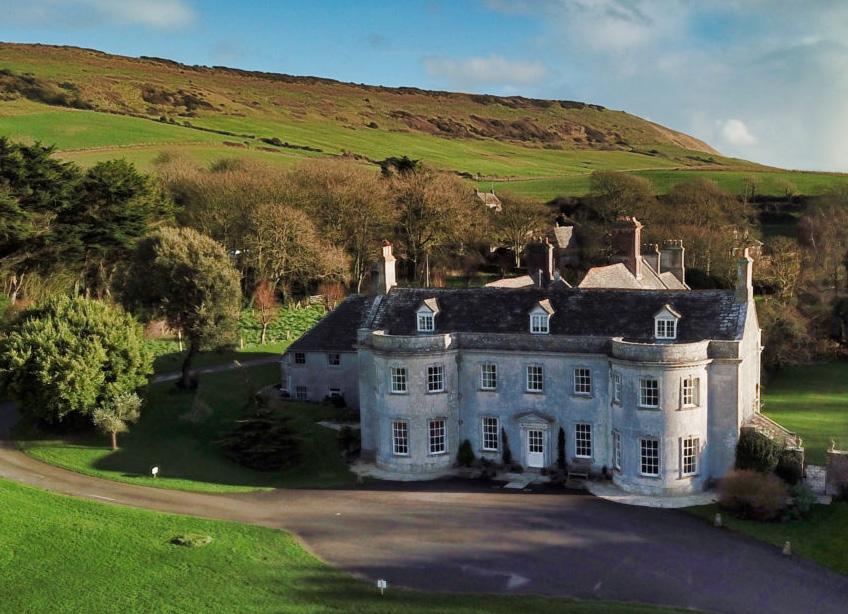
The house occupies two acres of walled flower gardens, orchards and a Mediterranean garden near Kimmeridge Bay. Guided tours of the house will be led by well-known historian, Dr Philip Mansel, joined by members of his family who are familiar with the house’s history and contents. As well as touring the house you will be able to see where Napoleon sat when he visited St Helena and a display of vintage Morgan Cars.
Dr Mansel says: ‘We wanted to do something to help raise awareness and funds for this wonderful charity. Cancer affects many of us and Wessex Cancer Trust is there when people most
need support. Smedmore House is a hidden jewel on the Jurassic coast, so please join us for a wonderful afternoon for this most worthwhile cause.’
Tickets are £6 on the door, and house tours are £4.50. Children
under 16 are free. Dogs are welcome on leads. Smedmore House is in Kimmeridge, BH10 5PG. For more information and directions visit www.smedmorehouse.com/ or telephone 01929 480719.
Bring friends and family to Springhead on Wednesday 10th August. Explore the picturesque lakeside garden with its chalk stream, natural springs, wooden boardwalk and bridges, and the wonderful views of Fontmell Down.
There will also be the opportunity to visit the charity’s recentlyrestored kitchen gardens, see the renewable energy installations in action and buy plants from a
stall. You are welcome to bring refreshments or a picnic with you; there will be no cafe but Purbeck ice cream will be on sale and the toilets will be open. Dogs are welcome if kept on leads and there is assisted wheelchair access.
The gardens will be open from 11.00am to 3pm. Entry is free (donations welcome, proceeds help us to maintain Springhead and fund our charitable activities).





In this month’s Then and Now, Roger Guttridge visits Halstock to share the macabre story of how a pious Dorset girl came to lose her head
Halstock’s Quiet Woman pub in 1910. Picture from Lost Dorset: The Villages and Countryside, by David Burnett, from the Barry Cuff collection
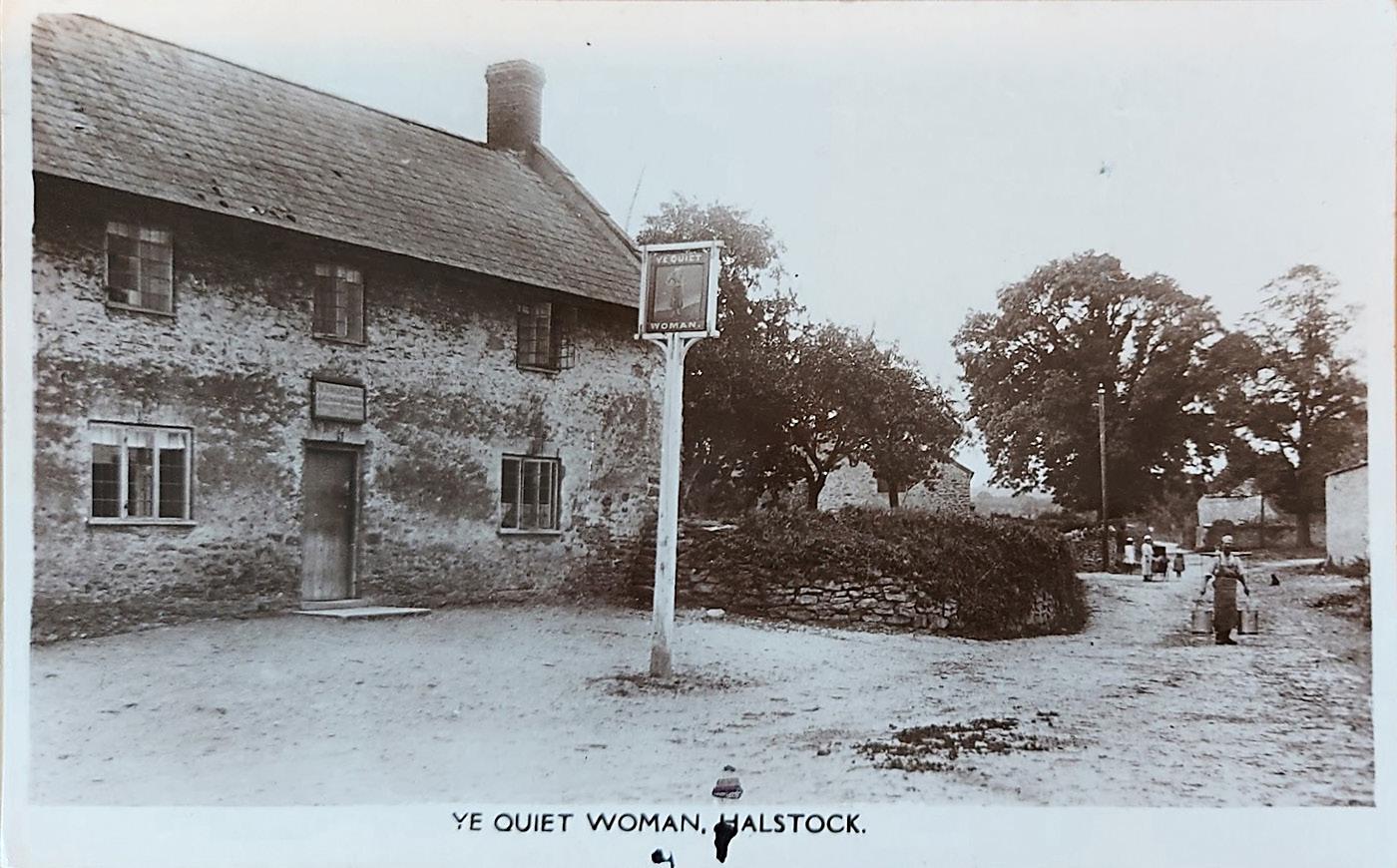
Her remains are buried in Sherborne Abbey but St Juthware really belongs to the West Dorset village of Halstock, where she’s euphemistically remembered as The Quiet Woman.
She has a guest house, a former village pub and a former rectory named after her, while a chapel in St Mary’s Church is dedicated to her memory. There’s even a street called St Juthware Close. But the reason for her fame and quietude is all too macabre.

It was just cheese Juthware (sometimes written as Juthwara or the modernised Judith) was born in the late sixth century AD, when Halstock apparently lay on a route regularly trodden by Christian pilgrims.
The Catholic Readings website describes her as a ‘British virgin from Dorset’ and a ‘very religious girl’, who prayed and fasted often
and gave alms to the poor. But for some reason she also fell out of favour with her stepmother. The story goes that after her father’s death, the heartbroken Juthware complained of chest pains. Her jealous stepmother suggested that applying two soft cheeses to her breasts would alleviate the symptoms.
Said stepmother then told her own son, Bana, that his pious half-sister had fallen pregnant, possibly to a passing pilgrim that she had befriended.
It wasn’t true, but the shorttempered Bana interpreted the soft cheese on Juthware’s undergarments as evidence of breast milk.
He flew into a rage and cut off his sister’s head with a sword.
He flew into a rage and cut off his sister’s head with a sword.Quiet Woman House B&B today
The incident happened at a spot to the north of Halstock that is still known as Judith Field.
According to the legend, a spring instantly appeared at the spot and Juthware’s decapitated body picked up her head, walked to the Saxon church and placed it on the altar.

In the reign of the Saxon King Ethelred the Unready (978-1016), her remains were moved to Sherborne Abbey, where she is depicted on the great east window as well as in the Sherborne Missal (see image above).
Until the Dissolution of the Monasteries in the reign of Henry VIII, St Juthware’s tomb was a place of pilgrimage where miracles are said to have occurred.
According to Catholic Readings, St Juthware’s feast day is 1st July but others suggest it’s 13th July, 18th November and 23rd December.
Take your pick!
The saint is also remembered in Cornwall and Brittany. Her sisters are said to have fled to Cornwall in fear of their brother. One of them was also canonised and is known as St Sidwell.
In Brittany, tradition has it that Bana repented, became a monk and founded the monastery of Gerber (later renamed Le Relecq).
The Halstock guest house known as Quiet Woman House (image opposite) was formerly a pub called The Quiet Woman, which closed in
the 1990s.
The building dates from about 1700 and was originally single-storey with a thatched roof. An upper storey was later added and thatch gave way to slate.
Thomas Hardy fans will recall The Quiet Woman pub in The Return of the Native.
Hardy himself said his Quiet Woman was an amalgamation of the former Duck Inn at Norris Mill, Puddletown, the old Red Lion at Winfrith and the sign from an inn ‘some miles to the north-west of the present scene’ – Halstock certainly fits that geographical description.
The Silent Woman at Coldharbour, near Wareham, on the other hand,
was known as the Angel Inn until 1930, 50 years after the publication of Hardy’s novel.
The postcard (image opposite top), bearing the 1910 picture of The Quiet Woman was written by a kinder ‘Big Bruvver’ to his sister, ‘Wippet’, in Blackheath, south-east London.

He told her: ‘This will give you some idea of the type of village I have to hunt out – miles from anywhere.
‘You can’t see the sign very well but her gory head is tucked under her arm – a good example of the brand of wit I have to put up with down here.’
1910 postcard from ‘Big Bruvver’ to ‘Wippet’
(see full postcard message below)
Juthware’s decapitated body picked up her head, walked to the church and placed it on the altar.
St Juthware’s beheading and subsequent walk to the altar as depicted in the Sherborne Missal, which the British Library has digitised. See it on p.489 here
The latest Winterborne Kingston dig reveals the lifestyle and habits of our Dorset forebears more than 2,000 years ago, says Roger Guttridge
Fresh insights into life in Dorset more than 2,000 years ago are emerging following the latest Bournemouth University archaeological dig on the chalk downs near Winterborne Kingston.

Since 2009, students and volunteers have carried out 11 excavations on eight sites at North West Farm.
‘The earliest thing we have found is Bronze Age from 1400 BC and the most recent has been post-Roman at about AD 500 – so almost 2,000 years of archaeology,’ says Dr Miles Russell, Bournemouth University’s senior lecturer and archaeological field work director.
The digs have captured the public imagination and more than 1,000 people turned out for the latest open day on 3rd July.
The main feature this year was 65 Iron Age pits dug into the chalkland, with depths ranging from 1 metre to 2.5 metres and dated to 100 BC and earlier. They are sited within a banjo enclosure of banks and ditches, so-called because it is shaped like the musical instrument with a long neck or entrance as well as a circular enclosure.
The banjo dates from 300 to 100 BC and was probably used to contain cattle.
Two roundhouses were also found but the floors have been destroyed by ploughing.
It’s thought the pits were originally used as sealed underground larders for storing grain, meat and dairy produce. But they also appear to have found a second purpose.
‘Many contain animal bodies that had been dropped in before the pits were back-filled,’ said Dr Russell.
‘We think they put animal body parts at the bottom as offerings to the gods.
‘We have found sheep, cattle and horse bodyparts but with the flesh still on them and the bones still articulated.
‘We have also found the complete remains of a few dogs, which may have been hunting dogs or perhaps guard dogs. Britain was known for its hunting dogs.’
The animal parts date from about 100 BC, around the time when the pits were abandoned and 150
years before the Romans arrived. Dr Russell says the latest discoveries are leading to a better understanding of rituals of that period.
‘The majority of the animals we’ve found were not butchered for meat,’ he says.
The 2022 dig also uncovered five human burials from 100 BC to AD 50, bringing the total from all sites excavated to about 60.
The five were all buried near the top of the disused storage pits. This was after the site was abandoned, suggesting that the bodies were brought there by people living nearby.
‘Dorset was almost the only place in the country where they buried
“Dorset was almost the only place in the country where they buried their dead in the Iron Age”Dr Miles Russell describes the latest dig to some of the open day visitors All images: Roger Guttridge
their dead in the Iron Age, so we’re able to get information about health, nutrition, injuries and age at death that we don’t get anywhere else,’ says Dr Russell.
The human remains have been taken to the university to be studied before being reburied close to where they were found. The archaeologists are still uncertain about how people on this well-drained chalk downland obtained their water.

The bones of hundreds of frogs found at the bottom of some of the pits imply that there must have been ponds or some other regular water source nearby.
Yet no clay-lined ponds have been found, suggesting that the locals may have had to fetch their water from the Winterborne stream more than a mile away.
‘It’s something we have been unable to resolve,’ he says.
It’s assumed that the frogs were attracted into the pits by dampness or water at the bottom, and having got in, they couldn’t climb out.
Together, the North West Farm digs are contributing to a potential re-writing of the presumed history of the area at
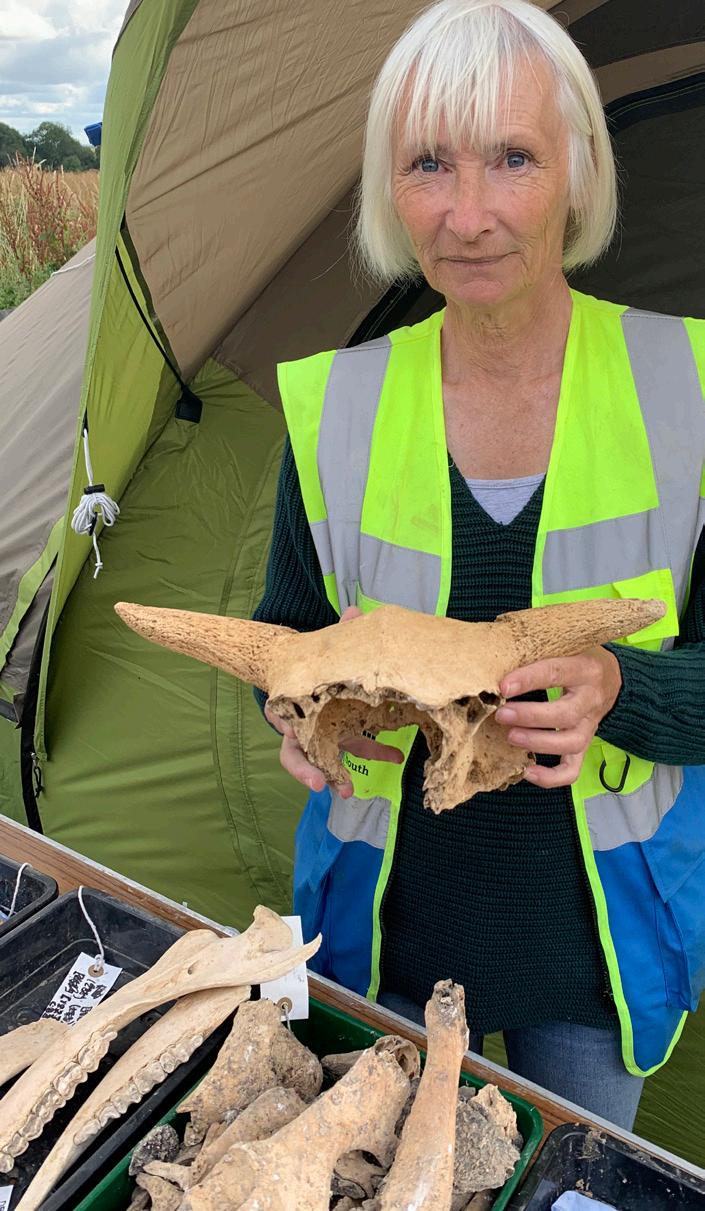
and before the Roman invasion in AD 44.
The traditional assumption is that the local Durotriges tribe lived in hillforts such as Maiden Castle, Hod Hill, Hambledon Hill and Badbury Rings and fought to defend them against the invading Romans.
‘But the evidence suggests that the hillforts were mostly abandoned 100 years before the Romans arrived,’ says Dr Russell. ‘What has been interpreted as evidence of battles might simply have been target practice.
‘There was something happening at the big settlements with
hillforts, and some of the big banjo enclosures are coming to an end at the same date. Nobody knows why.’
The archaeologists expect to return next year to an area with so much archaeology that Dr Russell says it would ‘take centuries to dig it all’.
Finds on adjoining sites in previous years have included Iron Age roundhouses from 100 BC and a Roman villa close to the graves of five people who may have been its owners.
‘Of the 700 villas excavated in Britain, so far no others have produced a burial ground,’ said Dr Russell in 2014.
“Traditional assumption is that the local Durotriges tribe fought against the invading Romans. But the hillforts were mostly abandoned 100 years before the Romans arrived.”
Bournemouth Univeristy students Katie Spurgeon (left) and Katrina Tomlinson excavating a 2.3-metre pit
Pither with a cow’s skull and horse mandibles recovered from the pits
Many thousands of years ago, cave art provided some of the earliest depictions of the horse.
Although these wild animals were probably hunted for meat, once horses began to be domesticated their likeness also appeared in Egyptian, Roman and Greek art, their anatomy and movement being studied in detail.
The numerous rough but exquisite sketches of horses produced by Leonardo da Vinci have a magical lifelike quality, and his perseverance to capture detail shows the challenge of the subject matter.
Horses move so quickly that many early artists struggled to understand and depict the different gaits; George Stubbs even dissected a series of horse carcasses to greater understand their anatomy. However, in 1878, pioneering photographer Edward Muybridge took a series of images of a rider on a galloping horse, the photographs confirming that, at the gallop, all four hooves may simultaneously be off the ground and not extended – as sometimes depicted in earlier paintings.
In order to convey the accuracy and beauty of a
galloping horse, I believe one must have a passion for the animal – and artist Katie Scorgie has spent most of her life surrounded by horses, riding from an early age.
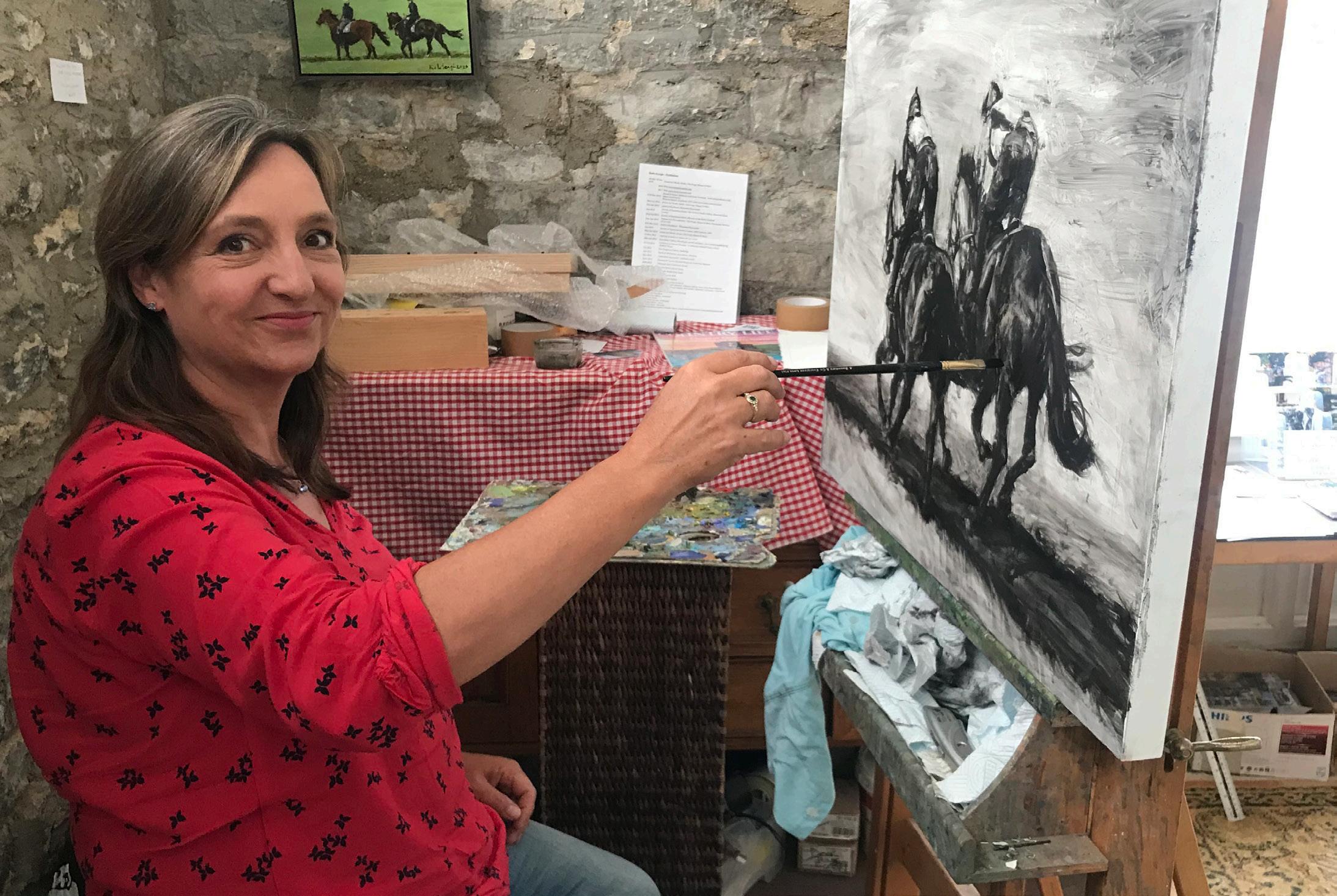
I interviewed her at her home in the old Blacksmith’s Forge at Hinton St Mary which is also her studio. The rough-hewn stone walls were lined with studies of racing and military horses, polo ponies, dogs and the occasional landscape. Through Katie’s accurate drawing and fluent handling of the paint, each scene is brought vividly to life.
Although she is known as an equestrian artist, I would hesitate to label Katie as such. During our long and wide-ranging conversation, it became clear that she is seeking to emerge from that description.
As a little girl I too was fixated on ponies; as a six year old, I shared the same excitement for her weekly riding lessons that Katie describes: ‘My mother had always loved horse racing and my
Edwina Baines visits equestrian artist Katie Scorgie in her Dorset studio to discover her intriguing change of directionKatie Scorgie in the Old Blacksmith’s Forge studio at Hinton St Mary Image: Edwina Baines
‘I would get a knot in my stomach because I knew I should be painting’
parents had shares in racehorses right up to the present day – even though my mum is now 90! It was her dream to have horses, so perhaps I was fulfilling her wishes. We had a Connemara pony and a cob when my father retired and we moved to Dorset. Horses are quite spiritual. Touching a horse is therapeutic. It’s like a comfort blanket.’
Although she applied to art college, Katie ended up doing a secretarial course before working for the Jockey Club and in the City for several years, returning to Dorset at the weekends to team chase on Coriander, her mare. She managed to buy a flat in London with her sister, but her passion for riding continued; she started training as a point-to-point rider and ended up spending seven seasons in the saddle, notching up a win and some sound results. What better way to study the action of a galloping horse?
In her late twenties Katie moved out of London and began to reconsider the future. It was a turning point in her life and she told me that when anyone talked about art: ‘I would get a knot in my stomach because I knew I should be painting. I had neglected any drawing during my time in London. But I realised that the time was right and finally I
decided to go to art college. I was offered a place at the University of Plymouth in Exeter. I was the only student to have a pet racehorse! Although I was mainly painting landscapes at that time, in my final year I worked on some atmospheric monochrome images from my racing days.’

After graduating, Katie sold her London flat and was able to buy a cottage in Hinton St Mary where she continues to live and paint. However, with two teenage daughters, an ageing mother in need of care, two horses, a dog, a cat and a household to
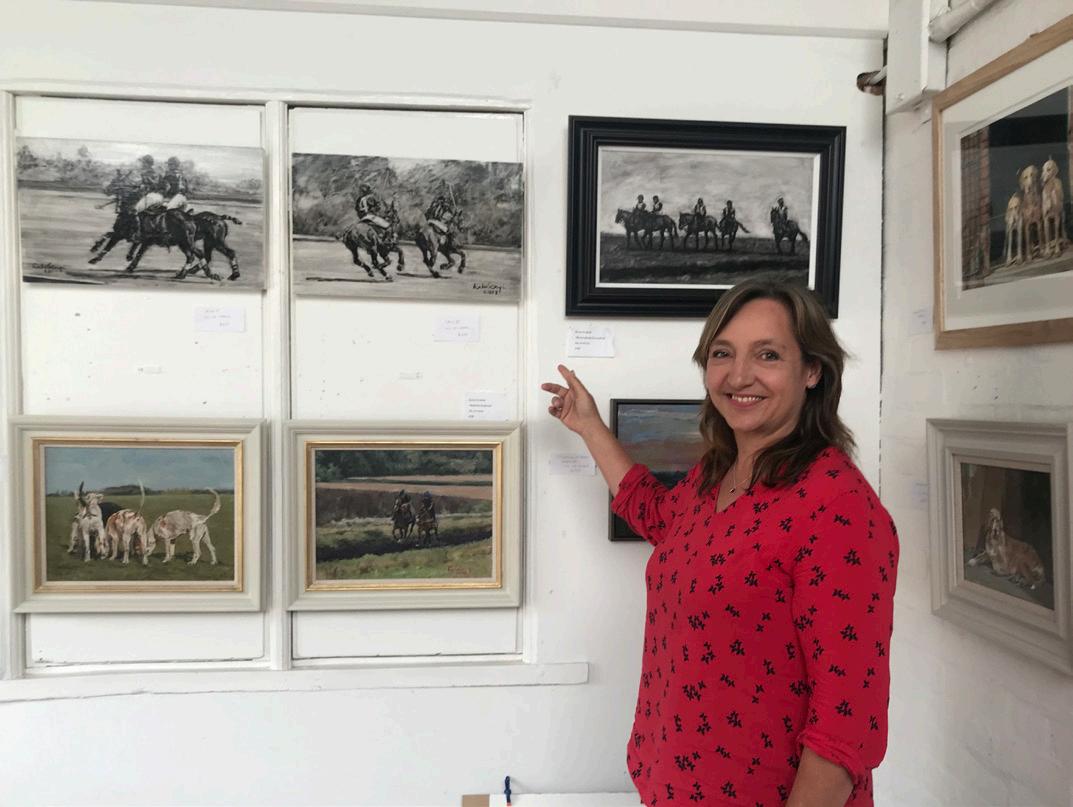
‘When people look at my work, I want them to think they could be there in the moment’
Katie Scorgie in her studio Image: Edwina Baines
run, life is a constant juggling act. Understandably, these numerous commitments sometimes keep her away from her work which is why she says:
‘I love a deadline which forces me to put one foot in front of the other and make my way to the studio.’

Additionally, Katie runs
life drawing classes on the last Friday of every month at Marnhull Village Hall. Recently she even welcomed a work experience pupil from

Sturminster Newton to join her for several days to absorb life in a professional artist’s studio.
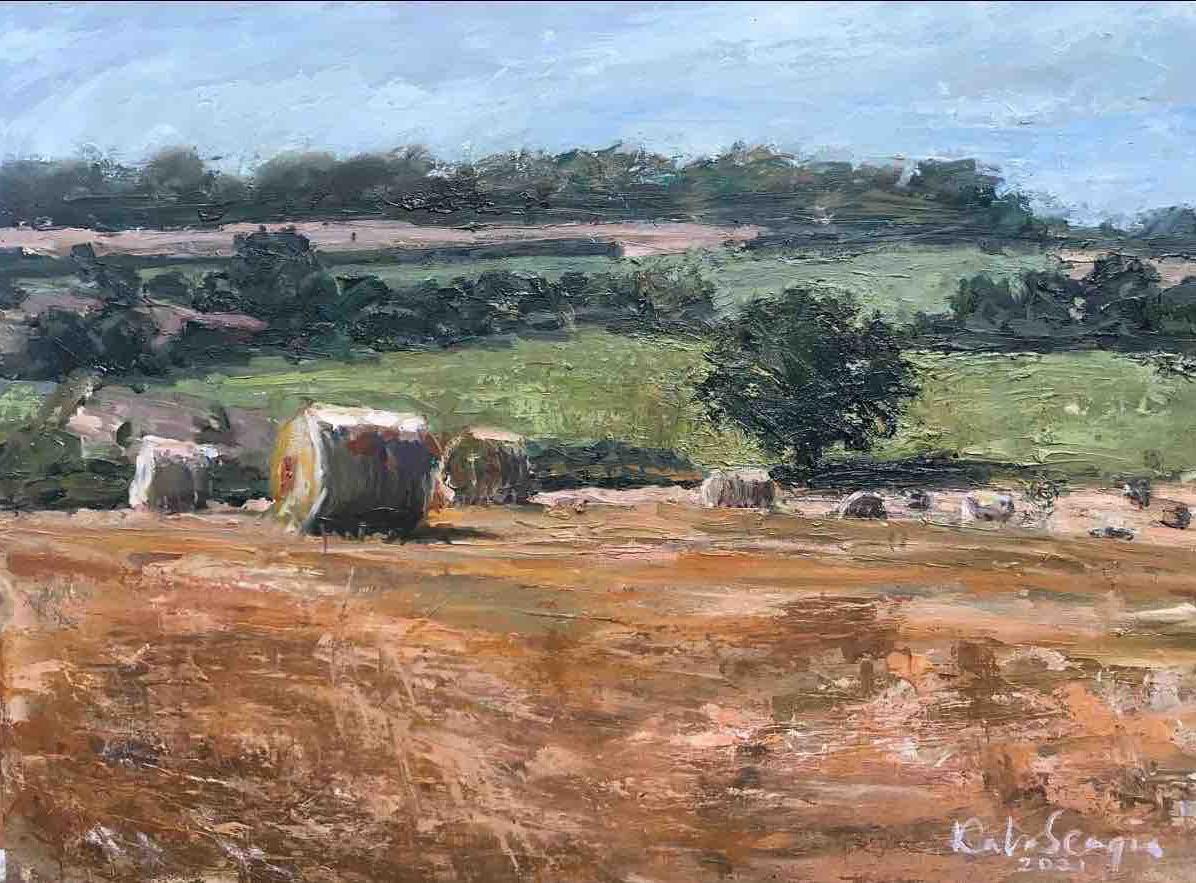
The Forge is open daily for visitors and Katie has recently taken part in the successful Dorset Art Weeks. Much of her work comes from commissions of landscapes, equestrian-themed work and dogs. Several years ago she was lucky enough to be introduced to the Commanding Officer of the Household Cavalry Mounted Regiment. She was then able to visit the Hyde Park Barracks as an artist in residence, culminating in an exhibition at the Barracks, attended by ‘a smattering of royalty!’. A series of prints from this time has proved to be popular – especially since the Platinum Jubilee celebrations.
Katie went on to explain:
‘Recently I am beginning to feel
more drawn to the landscape. My style lends itself to the freshness of plein air painting and I want to do more of that. I have recently returned from a three-day, action-packed working holiday in Lundy, gathering material for a series of paintings which I have been asked to complete of this beautiful place. I loved it there, it’s so remote. I walked a great deal and made lots of sketches. I am hoping to return to Lundy as this type of work has given me immense satisfaction. When

people look at my work, I want them to think they could be there in the moment and enjoy the painting in its own right.’ Kate’s affinity with horses will always remain – but the dramatic skies, spontaneous brushstrokes and freedom of expression in her recent landscape work will perhaps mark an intriguing change of direction.
Katie’s studio is usually open on weekdays between 11am and 3pm, and by appointment.
katiescorgie.co.uk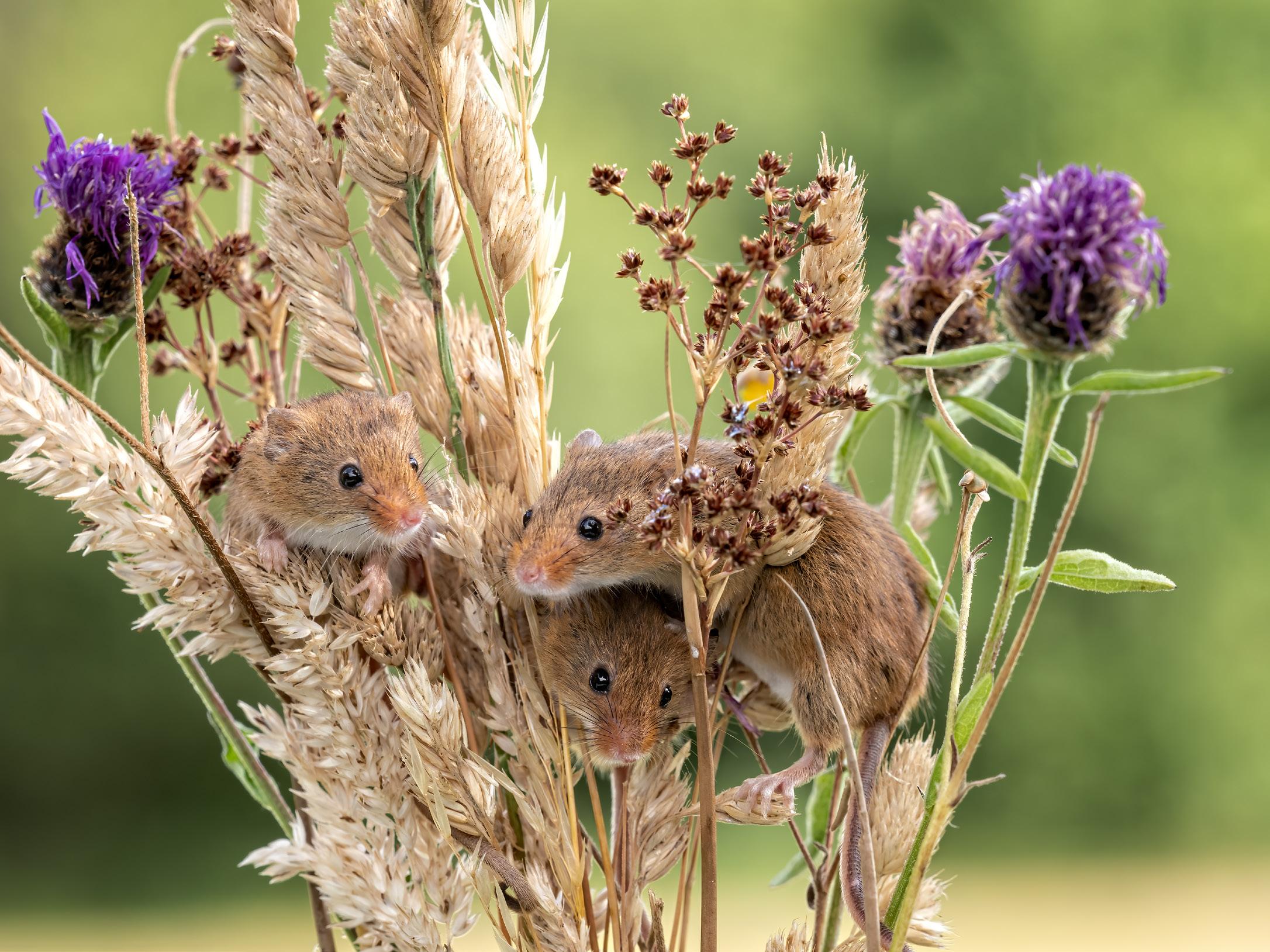


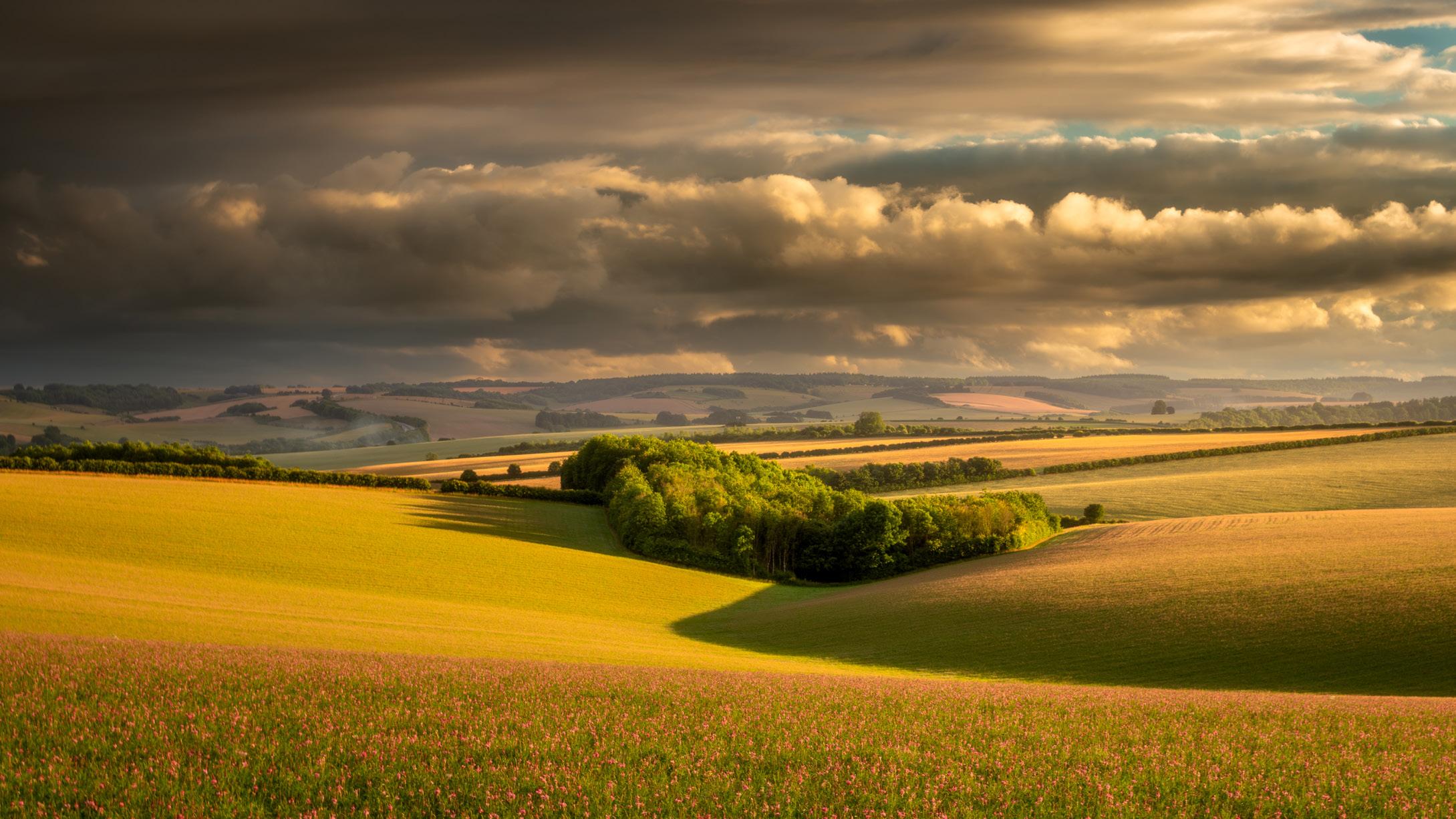
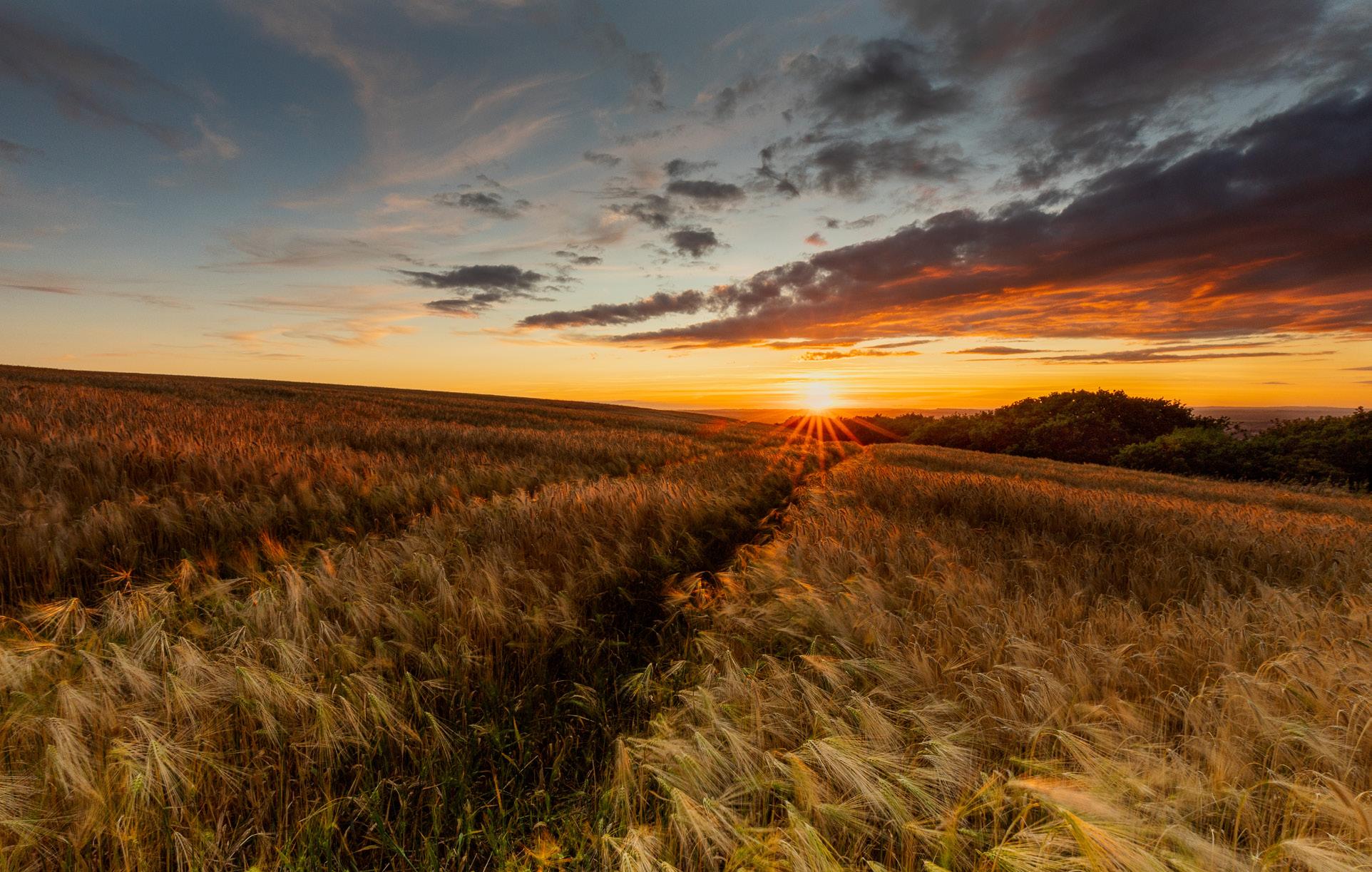
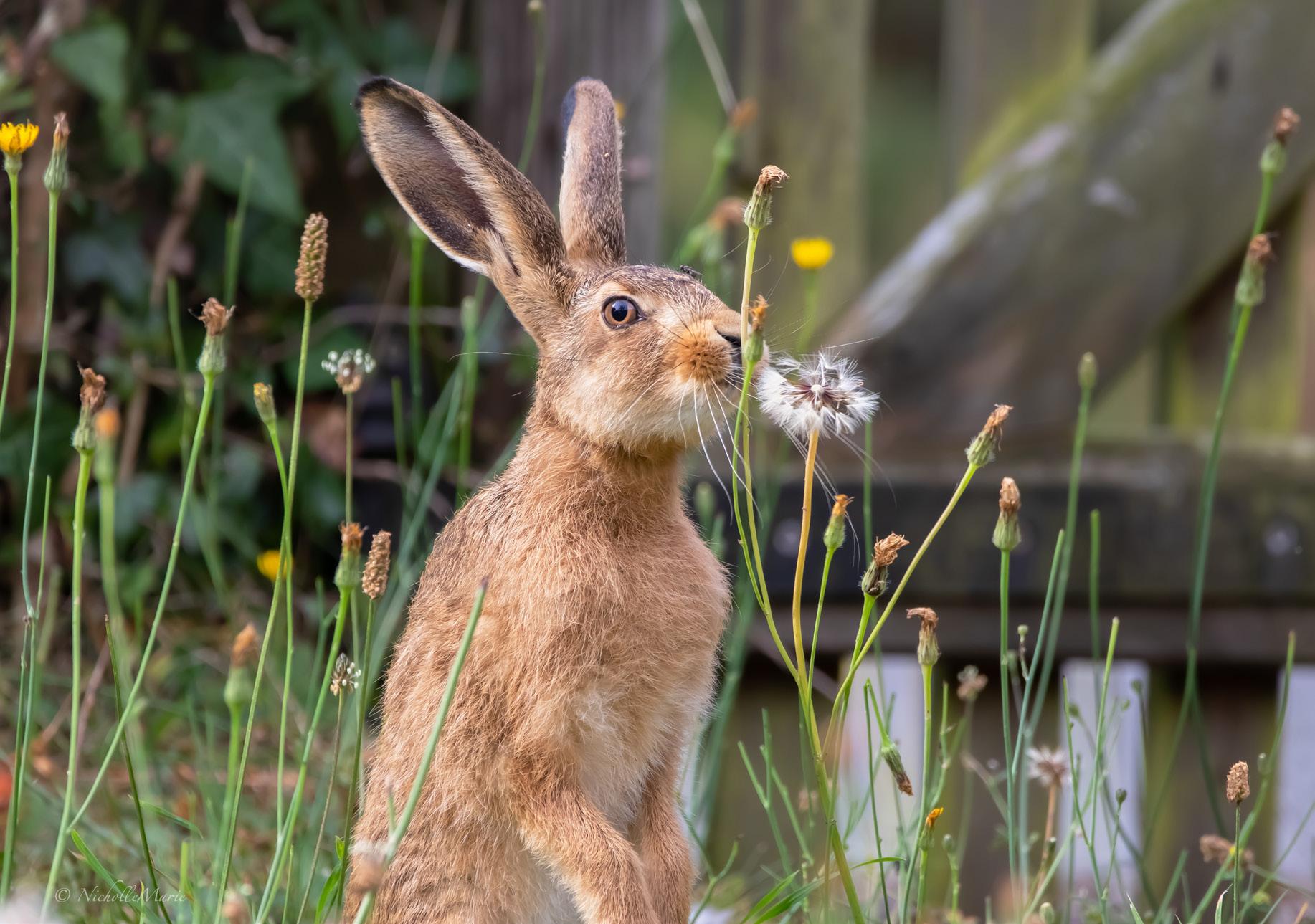
This month our submissions pile was the largest – and best – we’ve ever had. We simply couldn’t fit in everyone who deserved to be featured, so we have created a gallery on our Facebook page of the entire shortlist –please do go and enjoy them all. We welcome photography submissions from readers - the only rule is that they must have been taken locally in the last month. Our cover shot is usually selected from our submissions pile.


If you’d like to join in, please do one of the following:
Use #BVPhoto and tag us on Instagram (@theblackmorevale),
Share it in the BV community Facebook Group
Or simply email it to
Meadow grasshopper Martin ShawKiss chase Tracy Whincup READER’S PHOTOGRAPHY

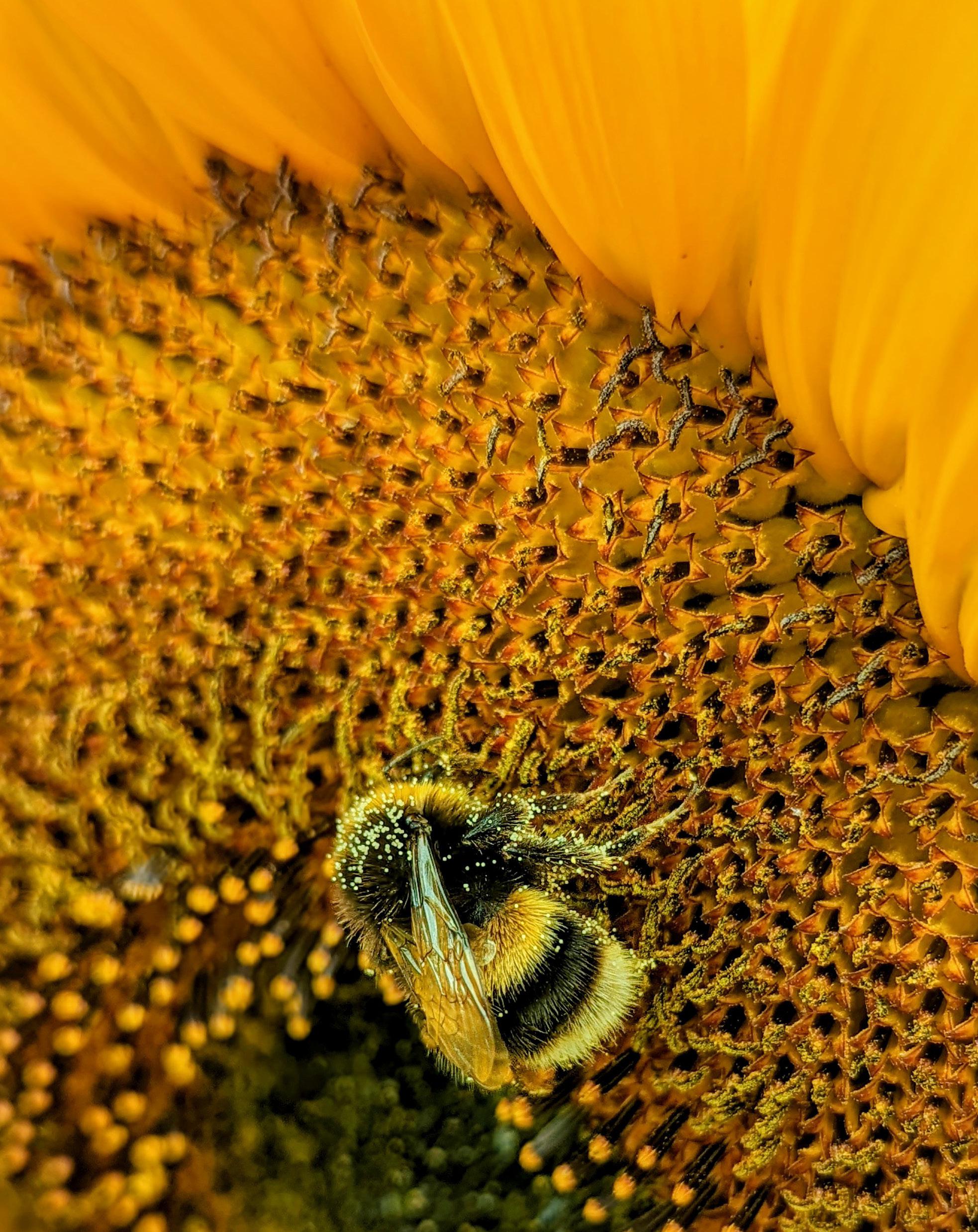
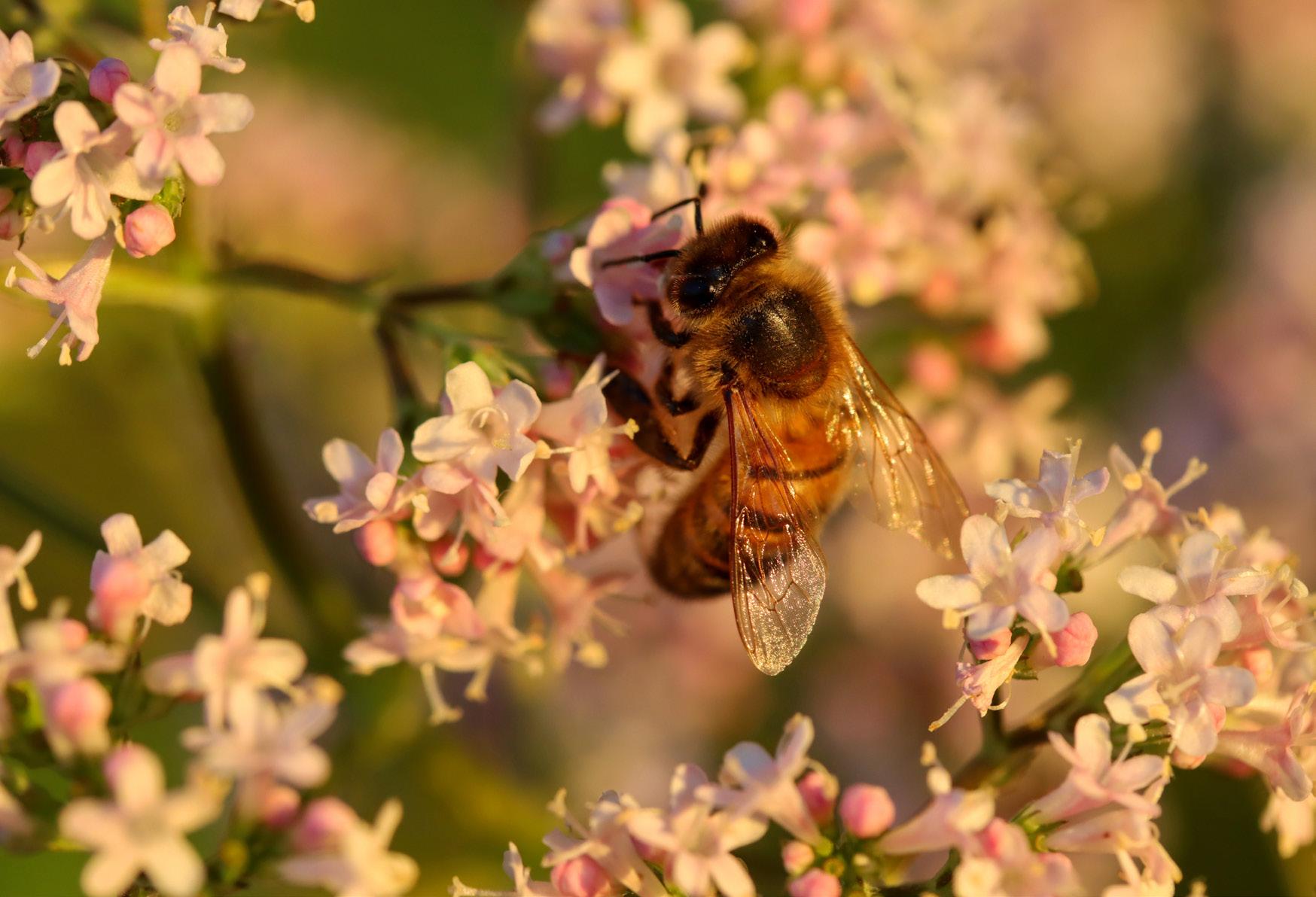
Summer really has begun! If you have decided to avoid airport stress and spend some time in the garden reading (or indeed to brave Heathrow) then I have some excellent summer reading picked out for you, and all are £2 off the marked price. Please do visit the shop or website for a broader selection. Wayne
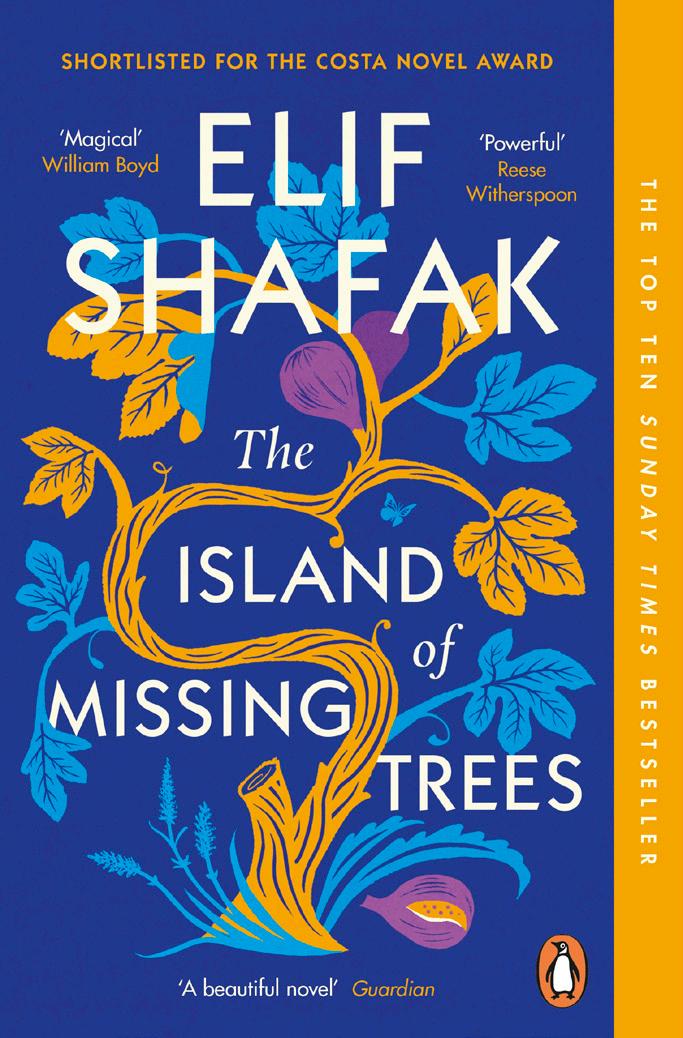
A tale of love and division moves between post-colonial Cyprus and London, exploring themes of generational trauma and belonging. Shafak tells the moving story of Kostas and Defne Kazantzakis, young lovers in a painfully divided postcolonial Cyprus – one Greek and Christian, the other Turkish and Muslim – and the emotional price they continue to pay after moving to England. A beautiful novel made ferocious by its uncompromising empathy.
Silverview – John Le Carré Julian Lawndsley has renounced his high-flying job in the City for a simpler life running a bookshop in a small English seaside town. A Polish émigré shows up at his door with a lot of knowledge about Julian’s family history.

The great spy novelist’s final fulllength book is a precision-tooled cat and mouse chase from a bookshop in East Anglia to the old eastern bloc. Crisp prose, the heady sense of an inside track on a shadowy world ... all his usual pleasures are here.
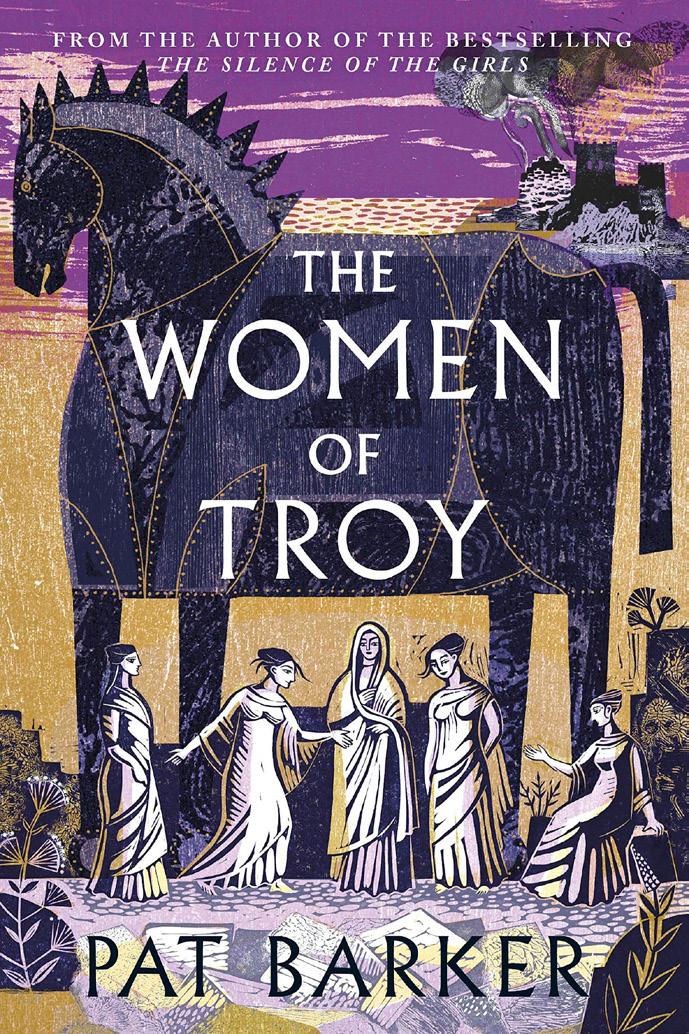

In the sequel to her retelling of the Iliad, The Silence of the Girls (told from the perspective of captured queen Briseis), Barker moves on from war to its aftermath.
Clearly and simply told, with no obscurities of vocabulary or allusion, this novel sometimes reads like a children’s version of the legend of Troy. But its conclusions are definitely for adults – merciless, stripped of consoling beauty, impressively bleak.

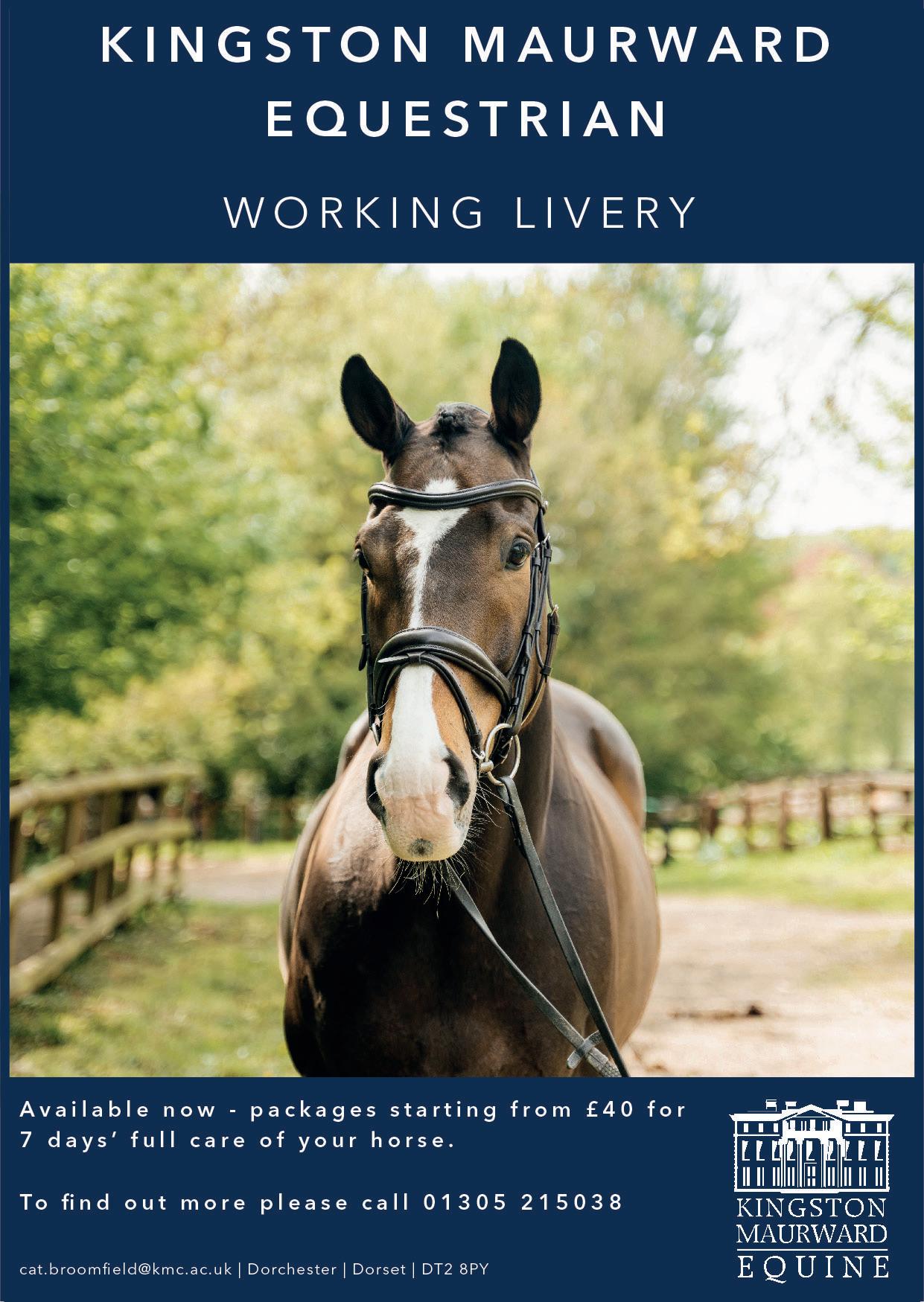
Breeding from your mare is a step many owners consider – Sara Greenwood shares the pitfalls and her experienced tips to make it work
Your children have finally left home, and you are left with the lovely mare the whole family has enjoyed riding or competing. What do you do with her? For many, the first answer is ‘let’s breed from her!’
But this isn’t (or shouldn’t be) a snap decision and there’s a lot you need to think about.
Consider why you are breeding from her – is it just because you don’t know what else to do with her? Or you want something to sell? Or perhaps you want something for the future? Also think about the practicalities –have you got the land and stabling required for more horses? Will you be foaling her or will you be sending her away to stud to foal?
Finally, and perhaps this is the most important, consider her temperament. Her conformation. How is she put together, how sound is she? Will any of her bad points come through to the foal? Can you even tell when she is in season?
No doubt one of the reasons you ever considered breeding from your mare was that you watched a stallion parade and saw a
Poddy as a foal with her mum All images: Sara Greenwood
beautiful one. But just like the mare you need to consider his temperament and conformation too. Have you seen any of his progeny? What has he done in his life?
famous! All went well and lovely Poddy was the result. I loved the foal so much that my mare went back to Skippy. Sadly, this was without a happy ending – we had a dead foal.
However, Poddy was the start of a dynasty. As a four-year-Poddy was the start of a dynasty – and her last foal was my superstar
Now – are you going to send her to the stud for natural covering, or will your mare stay at home for artificial insemination?
Or perhaps you might consider embryo transfer. Each has advantages and disadvantages, and all need to be researched and considered to work out which is the best option for you and your mare.
Having read all that, you may be thinking HELP! So many questions to be answered.
I started breeding horses about 40 years ago using a friend’s Thoroughbred mare – who had already had a few foals. I took her to Skippy (a well-known Irish Draught), but before he was


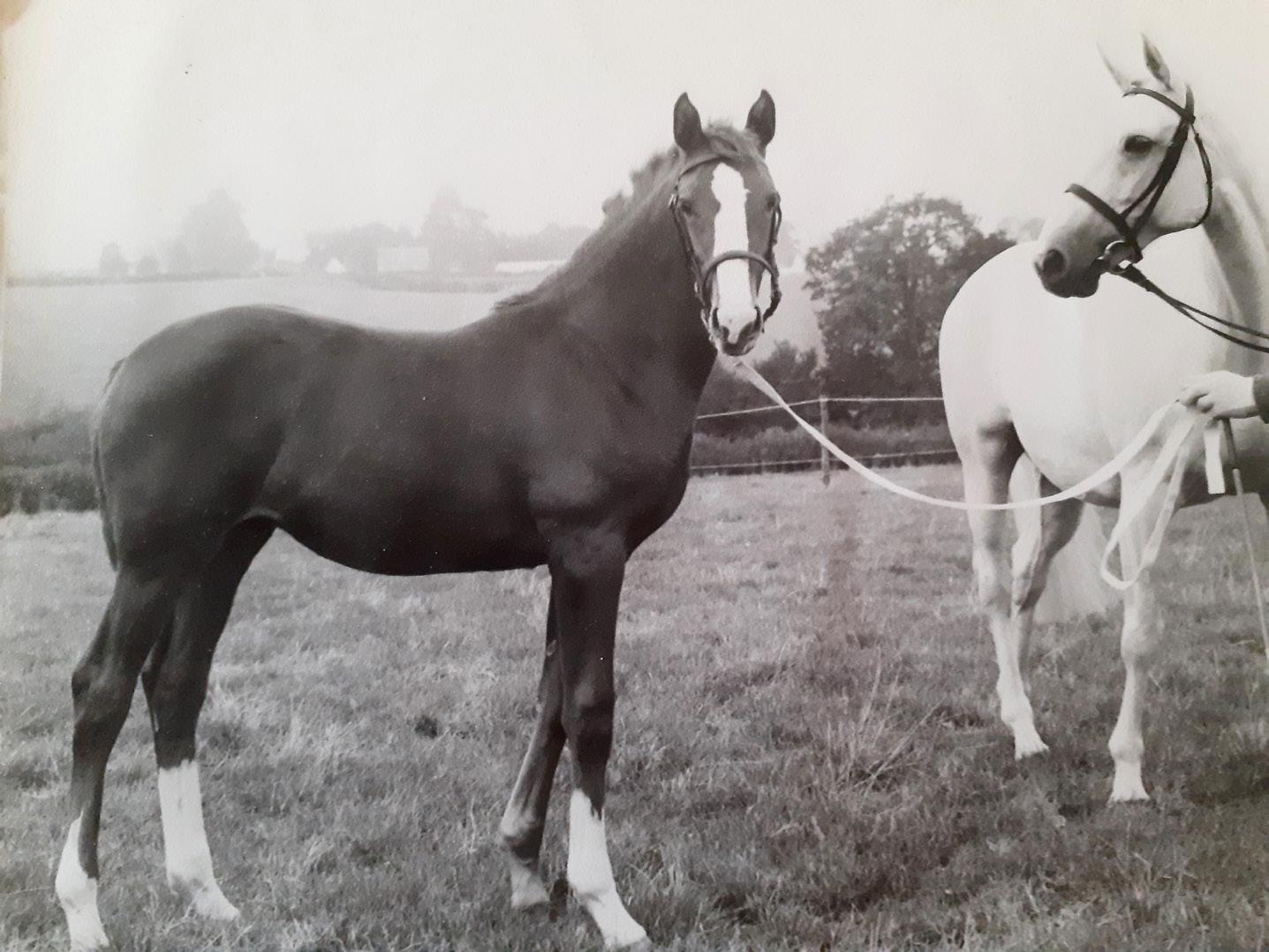
old she had a foal by National Trust (a Thoroughbred) while I was pregnant. Some years later, having been a wonderful hunter, competition horse and great for leading the children’s ponies from, she had two more foals. They weren’t all successful but the last one, from Relief Pitcher, was my superstar, who took both daughters to BE Intermediate and retired as the family’s hunter.
Since then I have bred five foals with another mare. We lost one to a lightning strike, one was beautiful and enjoyed dressage so I sold him, one is utterly non-competitive but moves beautifully and is a lovely hack, another is tricky but talented and my last one, by a Connemara, is a star – anyone can ride her.
Having started with Skippy the Irish Draught, I put his offspring Poddy to three Thoroughbred stallions - National Trust, Past Glories and Relief Pitcher.
With the second mare I bred from I deliberately went for the power and movement of the Warmblood, which is what the mare lacked. This was not such a success due to their temperaments – although we still love them, we have to find the right job for them.
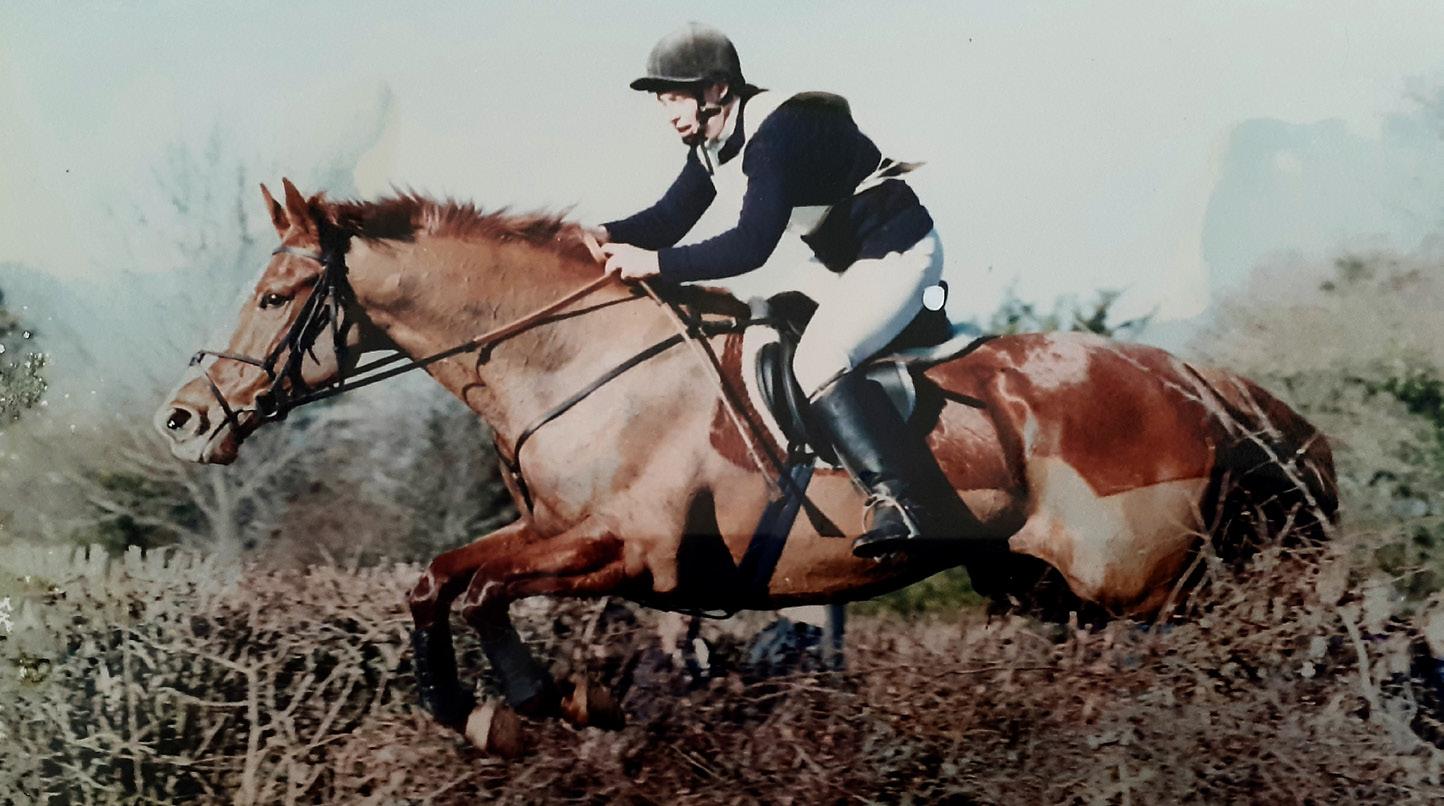
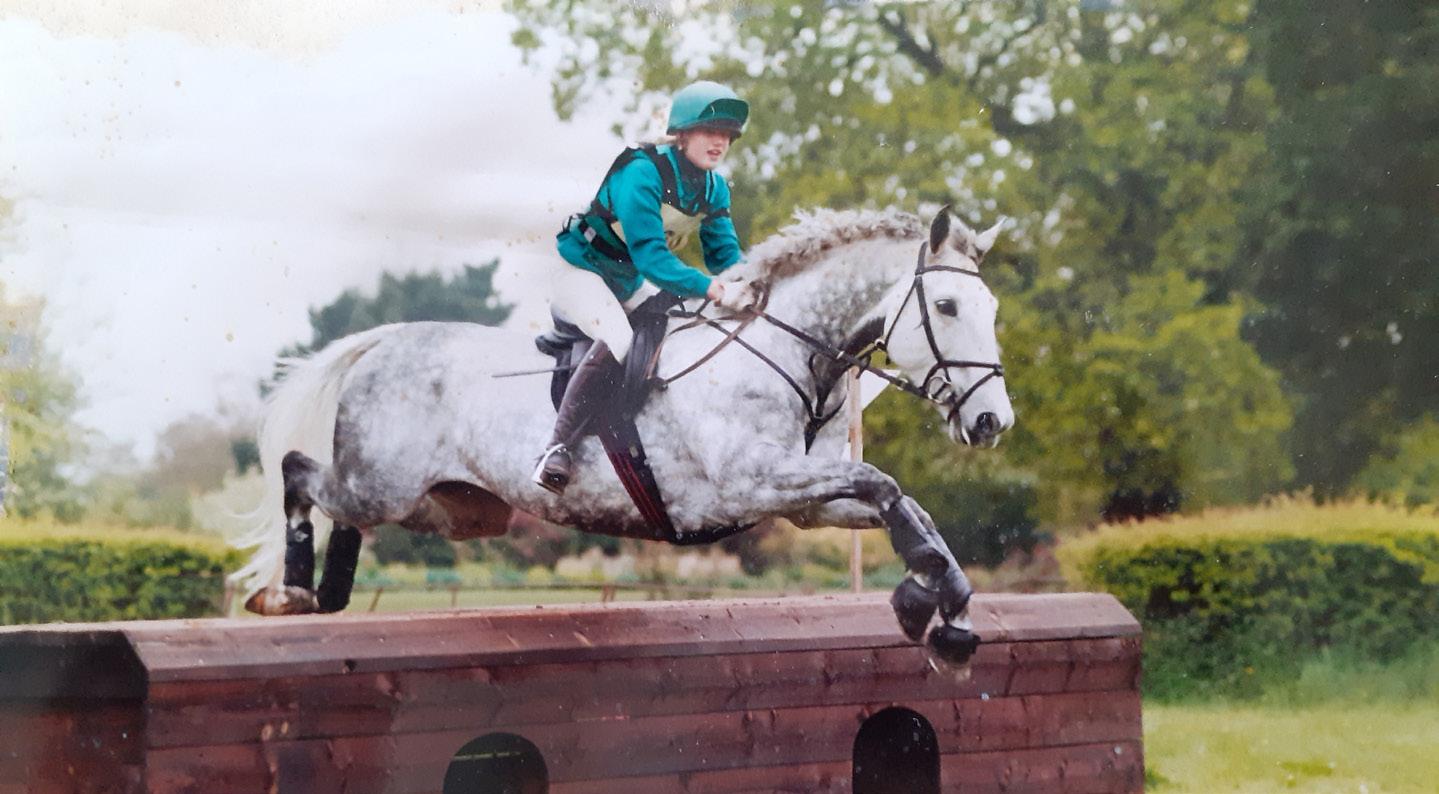
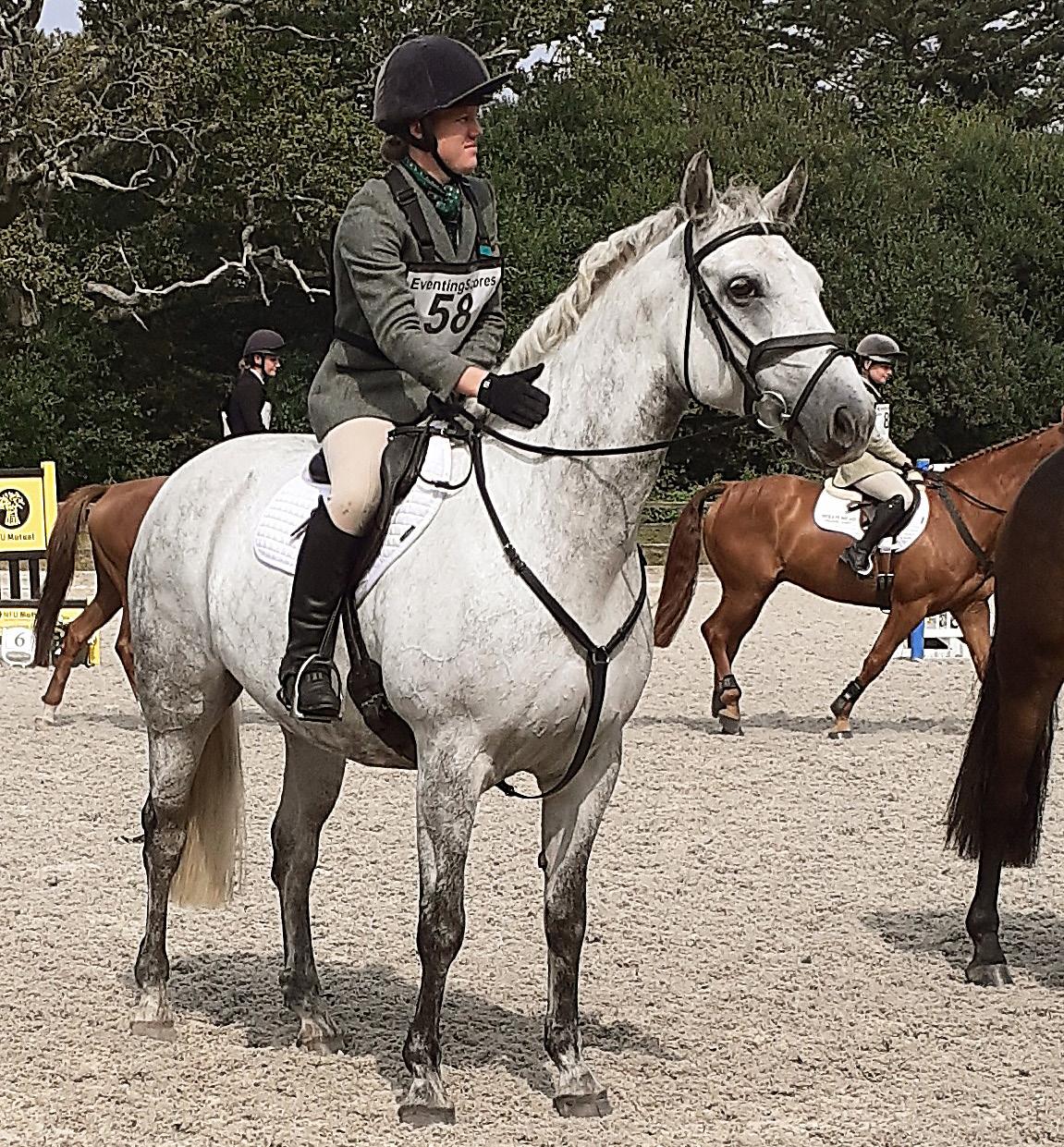
Lastly we opted for the Connemara, which definitely produced the best all-rounder. I would have loved to have used Relief Pitcher again, but he had just died and Thoroughbreds only used natural covering then. This year we are trying to get one of the Warmblood mares in foal to an Irish Draught but sadly it’s not currently happening (watch this space for future breeding programme!).
My conclusion? Breeding is not all happy and easy, but we have so many happy memories. It can be very expensive unless you do everything yourself, and a good vet is the most important thing.
Someone wants to know where her hard feed is please.
All images: Lucy Procter
provides concentrated nutrition without unwanted calories, and ‘balances’ a forage-based – grass or hay – diet.
The mares without foals at foot, or mares with older foals, are all now on a daily cup of balancer. The mares with younger foals,

Feeding different diets to a range of growing foals and mares living in the same field is an art form which Lucy Procter has mastered It’s relatively quiet on the stud, with the mares and foals out grazing all day and night. Despite the lack of rain, we still have just enough grass for them to get the majority of their feed through grazing, but we are supplementing with what is termed ‘hard feed’ – energy rich grains and pulses with carefully balanced vitamins and minerals. Traditionally, hard feed would have consisted of ‘straights’ – rolled oats and barley with no additives. But modern feed companies now manufacture balanced all-in feeds. They come as a muesli-type mix, or an extruded cube. In recent years ‘balancers’ have been introduced, which are a popular way of feeding horses which are in light work and would get too fat on the recommended amount of hard feed. Feeding a balancer
who are still drinking a significant amount of milk each day, are being fed a calorie-rich stud nut, in much greater quantity than the balancer feed, to ensure an adequate milk supply for their young foals’ needs.

As the foals get older, their feed requirement comes increasingly from grass and hard feed more

than it does from their dam’s milk, leading to the point at which they will be weaned, between five and six months old. All the foals are being fed hard feed in a creep feeder, which means that we can provide calorie rich hard feed to the growing foals, whilst their dams are fed a balancer. The creep feeder is too low for the mares to enter, but the foals happily duck under the rails to get their breakfast (opposite)
Work-wise, we’ve been concentrating this month on backing and bringing on four two-year-olds and two threeyear-olds. One of the three-yearolds, a Montmartre gelding, is being aimed at the new Junior National Hunt Development Hurdle Races, which start in October. The second gelding by Black Sam Bellamy, being bigger and what we would term more ‘backward’ will shortly be turned out in a field for the summer to mature, and will come back into work in the autumn with the aim of getting him ready to race in the spring.
The two-year-olds are having eight weeks of walkering (exercise on a mechanical horse walker), lunging and long reining with the aim of getting them well-handled and partially backed before being turned away again until next spring, when they, in turn, will also be fully backed and ridden away in preparation for the Junior National Hunt Development Hurdle Races, autumn 2023.
This new programme of Hurdle races, designed to help the development of Jump horses in Great Britain, was announced last November. Entitled Junior National Hunt Development Hurdle races and open exclusively to three-year-olds from October to December and
four-year-olds from January to April, the races will be run from early-October 2022 to the end of the 2022/23 Jump season. They will be open to horses that have not previously competed in a Flat race, or a Jump race (except for a National Hunt (NH) Flat or Junior NH Development Hurdle Race).
Each racehorse will be restricted to a maximum of four starts in the series.
Richard Wayman, Chief Operating Officer of the British Horseracing Authority said at the programme’s launch: ‘By adding these races to next year’s programme, we’ll be able to gain a much better understanding of the impact of providing young jumping horses with the opportunity to start their careers at an earlier stage. Such an approach is already well established in France and to some extent as part of a vibrant point-to-point scene in Ireland. We hope that owners and trainers ...[will] view them as an ideal opportunity for the right sort of jumping horse.”
Bryan Mayoh, Chairman of the Thoroughbred Breeders Association National Hunt Committee, said: “We have long believed that differences in upbringing, rather than in breeding or environment, is the principal reason why French-bred Jump horses have outperformed those produced in Britain and

Ireland. The impact that Irish four-year-old Point-to-Points are now having on the successes of Irish-trained horses, supports the hypothesis that Jump horses need to be backed and taught to jump earlier than has been traditional in Britain.”
So, we will pre-train our Montmartre for another few weeks, before he will be sent to our trainer, Kieran Burke, in Dorchester, to do the final fittening and race preparation work, aiming for a run midOctober at Newton Abbot.
Horses being horses, we just have to keep our fingers crossed that all goes well in the next few months – just getting a racehorse to a racecourse is an achievement in itself, running well is the bonus we are always dreaming of.
It’s not been all work this month, however. We joined in with Racing Staff Week, held nationally to celebrate the role of all stud and racing staff who work tirelessly in all weathers, by hosting a staff barbeque. After we had eaten, we loaded the truck up with staff and bottles of Monopole to raise a glass to the mares, who are the source of everything The Glanvilles Stud does – our take on the local tradition of ‘wassailing’, but with champagne and thoroughbreds!
The weather forced a change in the yard schedule, says Toots Bartlett, but it was an opportunity to discover how the horses might cope outside the UK
Wooza! What a heatwave! July consisted of many (many...) early starts and late finishes in order to work around the heat. With temperatures rising as high as 38º on the yard, my team and I began our days at 5am in order to be on the first horse by 5.30am. This meant we were usually able to have the whole yard ridden by 11am and out of the sun before the days reached peak temperatures. With very limited shade in our fields we felt it kinder for the horses to remain in the cooler barn, and we attached fans to all of their stables to help. Electrolytes were added to all the horses feeds to help maintain hydration, even if they were on a light exercise day. Whilst making sure we were safe and sensible, we did utilise the heatwave whilst maintaining the horses’ fitness plan, to see how they coped and performed in extreme heat. This was a really good gauge for us to know how they would react when competing abroad. Top tip – for any horses that might not be keen to drink a lot in the heat, cutting up apples and carrot and placing them in the water is a great way to encourage hydration. We also monitored each horses temperature throughout the week.
Only a few events for team TB during July. A trip to Cheshire to the beautiful Somerford Park resulted in Freestyle R producing another double clear at 3* with a fabulous dressage of 26, giving him another chance of an International win.

However, the ground was still extremely hard and he is such an exciting prospect now that he is producing such consistent top quality results, I chose to save him for another day and not run to time cross country.
Our New Zealand horse Equador MW had his first event in the 2* and gave me a brilliant clear cross country. He then followed it up by jumping double clear round our first Intermediate together, to finish eighth at Upton House. Lastly, Six year old Cor Y Taran has made the step up to Novice level and in style!
We have a fabulous four year old in for schooling livery; already standing at 18hh, Lippy is a big friendly giant. He has
an exceptional brain and loves to learn. I find it incredibly rewarding riding the younger horses. Small things like doing a whole schooling session without them picking up the wrong canter leads feels like such a big accomplishment, it leaves me with a big smile on my face for the rest of the day!
We had a lovely girl from the high school join our team for two days work experience, which is a great way to gain an insight into how each yard is run and just how much work goes on behind the scenes.
In very exciting news (to me!) team TB welcomed a rather special new addition. With the growing number of horses it
Freestyle R enjoying his off duty time
Equador MW jumped double clear round the 3* showjumping course at Burgham International horse trials


was time to upgrade the lorry to a 26 ton beast – something I never thought we would have! It is slightly intimidating at the moment, and it will definitely make the narrow lanes of Dorset look even smaller. But I am so excited and so grateful. I am sure I will eventually adapt to sitting so high up! As I write this we are on our way up north to Northumberland to Burgham International horse trials, where we have two horses in the 3* and one in the Novice. Fingers crossed they might have had some more rain then the south!
(Update from Toots on the Burgham results: ‘It wasn’t the best weekend – Equador MW jumped double clear round the 3* showjumping, but I had a fall on Freestyle R early on the cross country course which cost us a third place in the 3*. It was another great run for Taran in the Novice, but no placing!’)


I was 11 when I first heard a bat. A friend had invited our family to a BBQ and as the sun set and the adults got tipsy, bats appeared. Except I didn’t see them, I heard them. Their high-pitched squeaks and squeals were so loud they seemed to pierce holes in the cooling September air as the bats weaved around my head, catching mosquitoes.
I asked my dad what the bats were saying, and I remember him laughing and telling me, ‘You can’t hear bats.’ And that’s what I believed for the next 30 years.
We have 18 species of bat in the UK, and most are in dramatic decline thanks to modern farming practices killing their food and humans excluding them from roosting in our houses. The one you’re most likely to come across is the pipistrelle. These tiny bats only weigh between 4-7 grams, have a jerky, erratic way of flying and can eat up to 3,000 flies a night. Although they can see quite well, they navigate and feed in the dark by shouting at very high frequencies and waiting for

The next time I heard a bat, I was on a bat walk organised by Dorset Wildlife Trust. We each had a bat detector, a black box which looked like a small transistor radio. When tuned to the right frequency, the detector allowed us to hear the echolocation calls of the bats as pops, whistles and slurps. It was magical. Although my dad was right about most things, he’d been wrong about bats. Children, and some young adults, can hear the lower parts of their ultra-sound calls.
However as we age the cells in our inner ear become less sensitive and we lose that range – and the ability to hear the bats shouting. So this month, on a warm evening after the sun has set, take your children or grandkids for a walk in the countryside and get them to listen for bats. Although you probably won’t hear them, it may be your child’s only chance to experience this unforgettable sound with their own ears.
To help bats thrive in the future, go to the Bat Conservation Trust website at bats.org.uk
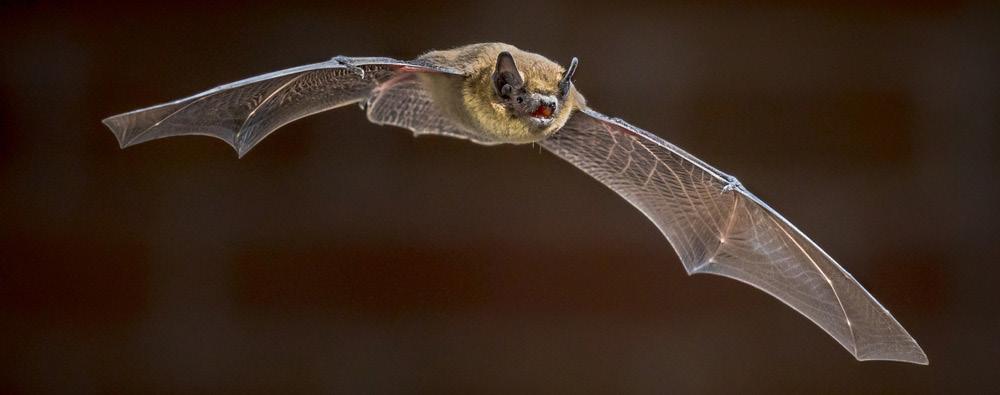
hear the echolocation calls of the bats as pops, whistles, and slurps
When she was young, wildlife writer Jane Adams was told ‘you can’t hear bats’ – and believed it for 30 years ... But you can.
Can you hear the bats?
The pipistrelle bat is one of the most common in the UK


Trail cams have captured sightings of two beaver kits, says Hazel Ormrod from Dorset Wildlife Trust; for two weeks it was thought there was only one
Dorset Wildlife Trust has been closely monitoring the pair of beavers released into an enclosed site in West Dorset last spring. It has been clear that they formed a strong bond, and the sighting of a kit during July caused much excitement, being the first beaver kit born in Dorset for more than 400 years. Discreet observations finally bore fruit almost two weeks later when trail cameras captured images of two young beaver kits and their mother (see the video, right).
Seeing the first kit was an incredibly exciting moment for the team behind the project –breeding is a clear indication that the adult pair are healthy and happily settled in their Dorset surroundings. Staff and volunteers have been closely monitoring the pair of Eurasian beavers as they have worked to build dams, creating the watery woodland and deep pools in which they feel secure. While the trail cams have only identified two kits so far, it is still possible that there are more as beavers can have up to four kits in a litter. The team is watching patiently – the beavers are rather elusive and it’s difficult to get them on camera at the same time!
Eurasian beavers were once native to Dorset, and common across the UK, but were hunted to extinction for their fur, glands and meat in the 16th century.
They are social animals who live in small family groups, typically consisting of an adult pair and two generations of young. Mating occurs once a year in the winter months between December and
February, and if successful, after a gestation period of around 105 days, the young are born during spring. Beaver kits are born fully furred and with the ability to swim, and normally stay close to their parents as they are very vulnerable to predators. For the first
two to three weeks, kits feed on their mother’s breast milk, but within six weeks they will begin to venture outside the lodge, exploring their parents’ territory while foraging and feeding on tree leaves, shoots and aquatic plants.
Beavers with benefits Beavers have the potential to make a huge difference to a natural environment by increasing biodiversity as well as providing other, wider, benefits for humans such as storing carbon in the wetlands they create and reducing flooding downstream by slowing the water flow. The Dorset Beaver project is a five-year scientific study, in partnership with the University of Exeter and Wessex Water, to assess the potential
impacts of re-introducing beavers on the environment and to raise awareness and understanding of what it means to have these influential mammals back in our county.

•
Beavers are large, semiaquatic rodents – the second largest rodents in the world, after the capybara of South America.
•
Contrary to popular belief, beavers are herbivores – they don’t eat fish! They prefer to snack on herbaceous vegetation and aquatic plants in the spring and summer before turning their attention to trees and their bark, leaves and shoots in the autumn and winter months.
• Beavers live for an average of 12 years.
• There are two species of beaver: Eurasian beaver (Castor fiber – the species we have in the UK) and the North American beaver (Castor canadensis).
The beavers are rather elusive and it’s difficult to get them on camera at the same time!by Carl Mintern
Those of us with younger children will be only too aware of the need to fill voids created by the school summer holidays. And what better way to occupy them than with excursions out into the vast array of public footpaths and woodlands that surround us in the Blackmore Vale? And if it’s your own free time that needs filling with something healthy and rewarding?
Well, the sentiment stands! We spend so much of the year here in the UK dreaming of what we will do in the heady days of summer – let’s not let it slip past us without really making the most of the opportunity a little sunshine and and open space afford.
Back to the elder I want to start this month by revisiting a plant I discussed last month – the elder (Sambucus nigra). If you took my advice in
July, you have already harvested the flowers and are no doubt sipping on some delightful homemade elderflower cordial while reading this edition. Well, now we return to this bountiful plant for our second elder shopping trip of the season – to harvest the berries.
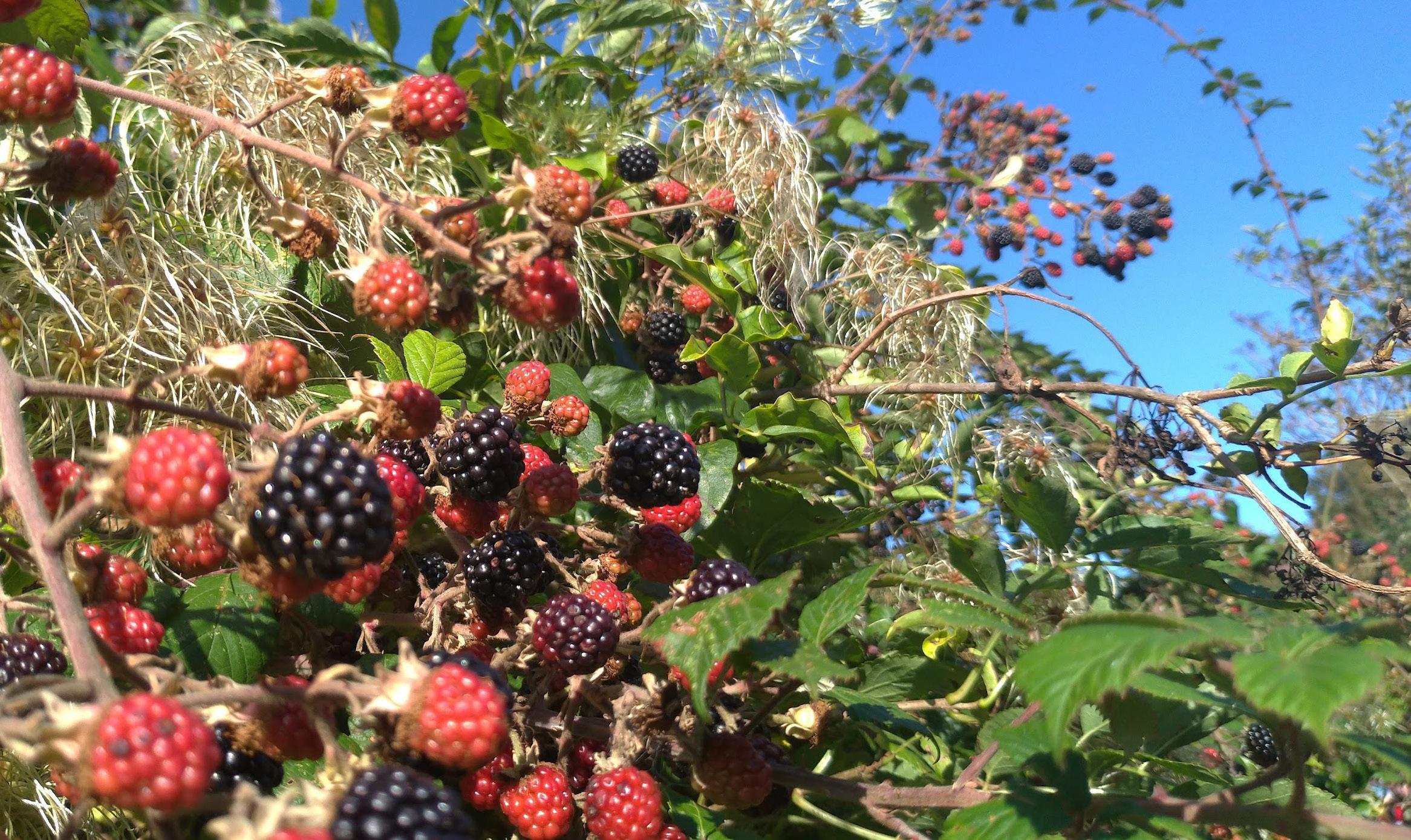
As stated last month, elder is one of the most abundant hedgerow harvests we have, with many landowners opting to use it to form the hedges that border our country roads. As a result, Elderberries are extremely abundant and very easy to find. They can be used for jams, jellies and crumbles but these juicy, sweet berries can also make liquor and syrups (our nutritionist Karen Geary shared her recipe for elderberry rob last year. She calls it a ‘nutrient bomb’ and suggests taking a daily spoonful during cold and
Used for millennia, the elderberry’s distinct flavour can also make a simple puree to serve with meats.
Be aware that all parts of the elder are mildly toxic when raw, so be sure to cook them, (please see last month’s column for my slightly extended thoughts on this). Elder trees have feathered leaves that grow in opposite pairs along the stem with a terminal leaf. The berries are deep purple and formed from the same sprays of flowers we target earlier in the year.
Next, I wish to continue my crusade against boring-looking salads and bring you the common primrose (Primula vulgaris). A plant most walkers will already be familiar with, primroses don’t tend to grow in shade, so be on the lookout for sunlit areas of meadows and forest clearings.
The whole plant is edible; the
I continue my crusade against boring-looking salads and bring you ... the primrose
roots, stems, leaves and petals have all been consumed for culinary and medicinal purposes by our ancestors, as they contain a wealth of vitamins and minerals. Their petals are yet another way to brighten a salad, although these are more likely to have been found in spring. But in August the roots can add a crunch and the leaves can also be included.
Be aware that if you plan on harvesting roots, you will need the landowner’s permission. To harvest the rest of the plant, our rights are protected in statute, which allows us to forage the four Fs, – flowers, fruit, foliage and fungi – on public land.
Finally this month I want to talk to you about a plant many people think they know ... but I assure you, most do not.
When I am out leading foraging walks, I know from the look on people’s faces that no-one wants to ‘learn’ about blackberries.
Everyone has been picking them since childhood, collecting them from the hedgerows with their parents.
So stick with me – there is a secret layer to be uncovered here that will change your understanding of this quintessential foraged harvest. When out picking blackberries
Elderberries can be used for jams, jellies, syrups and robs, as well as a purée for meats.

we have all eaten a tasty fruit straight from the bush and remarked to our fellow pickers ‘try these, they’re delicious!’, only to follow up a few minutes later taking another from a different spot just a few metres away and finding it so tart it makes our eyes water, or so bland as to be inconsequential.
“try these, they’re delicious!”, then just a few metres away finding one so tart it makes our eyes water
So what is going on here? I have heard many versions over several years of how the taste is being affected by the weather, or the soil conditions, or some other capricious act of nature affecting
Primrose may not be in flower in August, but don’t ignore its potential for your salad
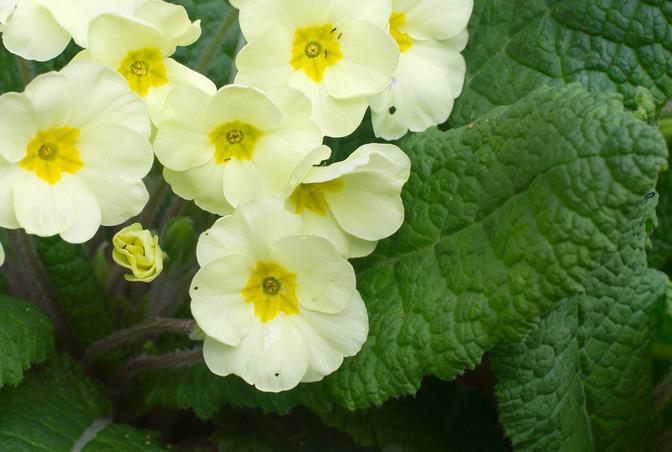
this plant this year. In fact, this seems to be the prevailing thought among most novice foragers. However there is a far more interesting and predictable component to this mystery.
Vegetable gardeners are familiar with the idea of picking a specific variety of plant to grow in their garden – we choose to grow a certain tomato variety for its giant fruit, small fruit, yellow fruit, blight resistance or huge yields ... and yes, of course they all taste different.
You may be surprised to learn, though, that we also have hundreds of varieties of blackberries growing wild in the UK. It naturally follows then that your hedgerow harvest contains a huge variation in flavour!
So, what can we learn from this? I would suggest that instead of a haphazard wander along a hedgerow, try making a blackberry map and marking the locations of the tastiest fruits.
Harvest from those plants every year, and you can reliably collect the perfect fruits for eating fresh with desserts while avoiding the sourface lottery!
This brilliant walk circles around from the beautiful West Dorset village of Halstock (with its legend of The Silent Woman, St Juthware - featured on P.46), taking in Corscombe as you follow the ancient paths of this quiet, untouched part of the county. This is an absolutely gorgeous walk through quiet Dorset countryside – the area feels remote and peaceful, with swathes of farmland, deep holloways between ancient hedgerows, wide views and the permanent accompaniment of wildlife.
The route is well signed the whole way – though in the height of summer there were naturally some overgrown sections that required a little nettle beating!

We have always created and recently walked the routes we feature (See all previously published routes here), so you know you can trust them. We aim for unpopulated routes with no roads and BIG VIEWS! You can see all our routes (including many not published in the BV) on Outdoor Active here, and all include a downloadable gpx
All images Laura HitchcockThis was our lunch spot – shady grass, that view and the cows and a fox for company
There are no stiff climbs and yet the views are still rewarding
The walk is rich with lush Dorset meadows
Big skies, wide views and easy paths. This walk is an actual corker!

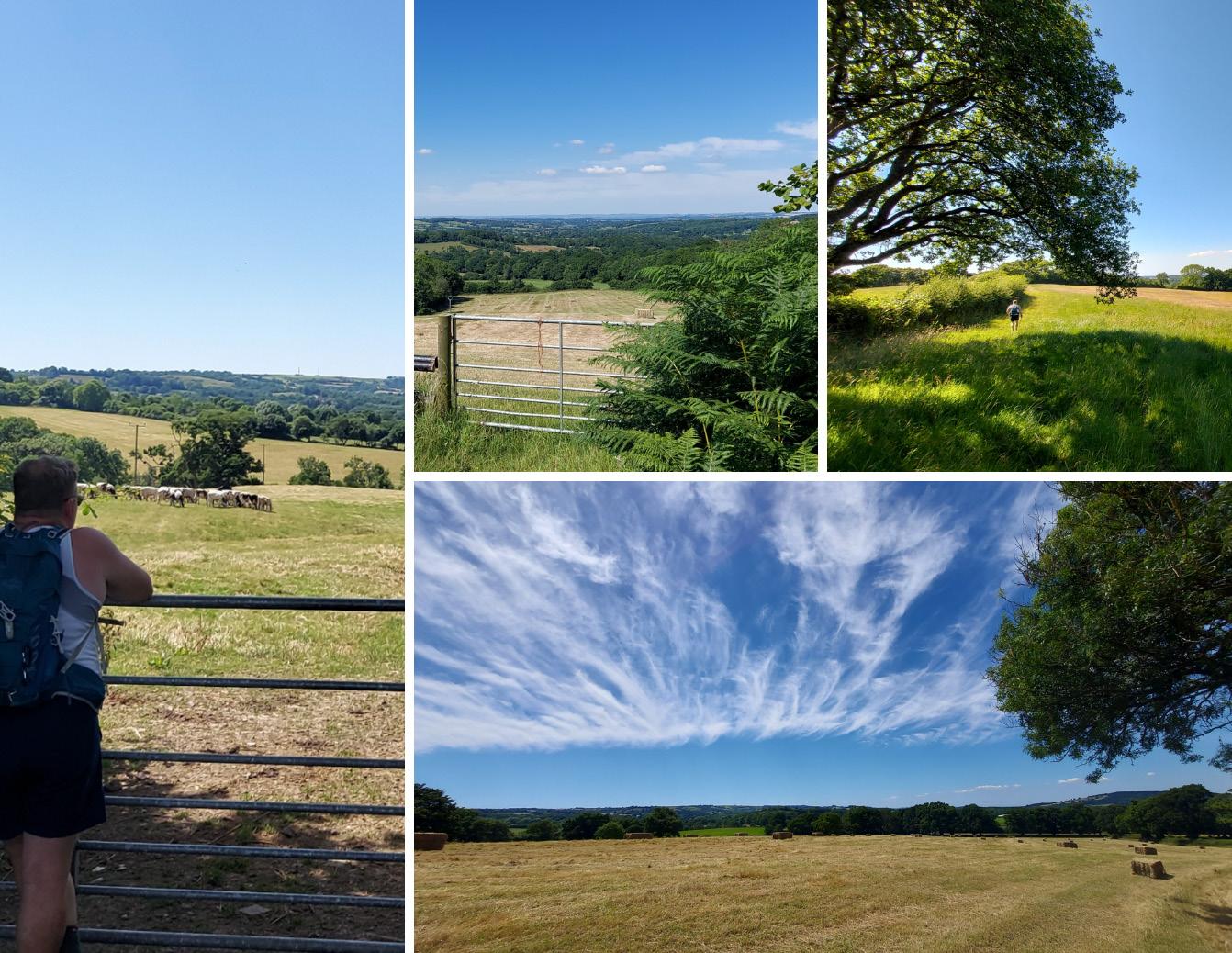

Biennials were always a bit of a mystery to me before I started to sell my flowers. But they really aren’t that mysterious and once I got my head around the fact that you sow the seed in one year and they flower the next, it’s easy. If you were to plant an annual now, it would flower in late summer – and would be a very disappointing plant rushing to complete their life cycle before the days get shorter and the threat of frost looms. The definition of a biennial is a flowering plant that takes two years to complete its life cycle. Since growing flowers for sale, I have learned that if you sow your biennial seeds now, they are big enough to plant out in the autumn, when they will have the chance to develop and grow a healthy root system to survive the winter, all being well. Then when it warms up again in the spring and the daylight hours increase, they are ahead of the game, ready to start the growing season. They tend to flower when the spring bulbs have finished and before your autumn-sown annuals, filling that lull after the bulbs are over.
Ones to look out for The biennial family of flowers seems to be quite a nostalgic group of plants – think wallflowers, for example. And no, don’t think of those horrid orange, yellow and brown tones like a 1970s swirly carpet. There are some beautifully coloured varieties that really are worth growing. Look for the sunset series, in particular the apricot, although it does seem rather hard to find the seed (which I see as a good indication that
offers
it is tip-top!). The sugar rush series is another good variety; they have the added bonus of smelling glorious as you brush past them on a warm spring day. Another biennial to look out for and sow is hesperis (sweet rocket – pictured above); white or mauve and also scented, but a member of the cabbage family so watch out for hungry pigeons (I’m writing from experience – I had to put a net over the bed one year, it took me forever to work out what was eating them).
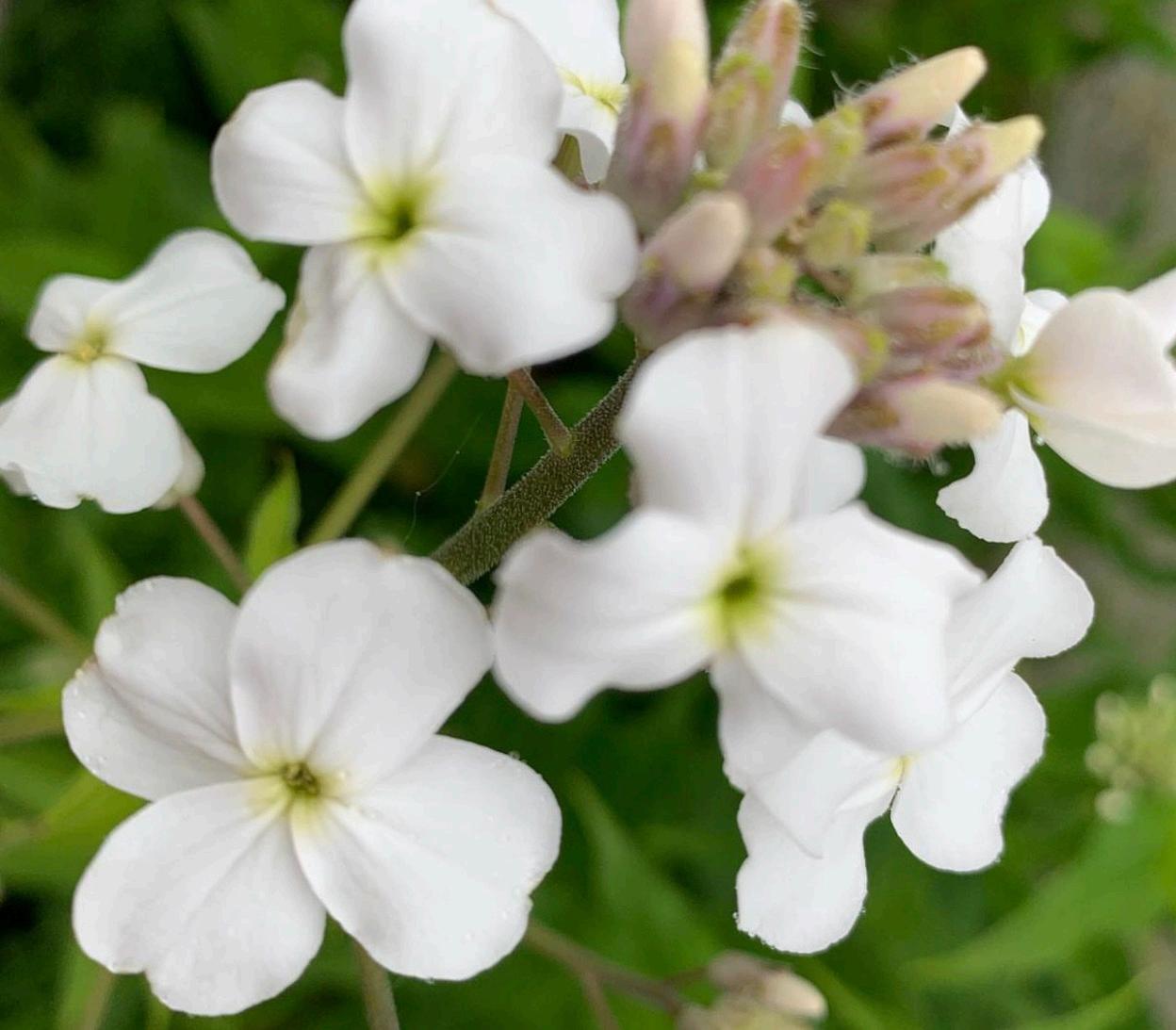
Old-fashioned pretty Honesty is another pretty white flower, but resist the urge to pick it and instead wait for its prized seed heads. Peel the papery case off to reveal a lovely silvery disk like a coin – no wonder this plant is often called the money plant. It is very popular for Christmas wreaths and dried flower arrangements as well.
Foxgloves are also a nostalgic and popular biennial. The last biennials that I grow myself are in the dianthus family. Sweet Williams – they are a cottage garden favourite for good reason. Easy to grow, they smell amazing and they make great cut flowers too. Look out for a variety called Sooty which makes a nice contrast with the ones that have an eye. As a bonus, they are all great for pollinating insects, too.
Another seed to sow and try is wild carrot – you can get a beautiful purple variety. The more common white variety has, in the centre of each flower, a dot of blood red which legend says is a stain from when Queen Anne pricked her finger while making lace.
So why not try planting some biennial seeds this month and being a patient gardener? I promise you won’t regret it.
for further details.
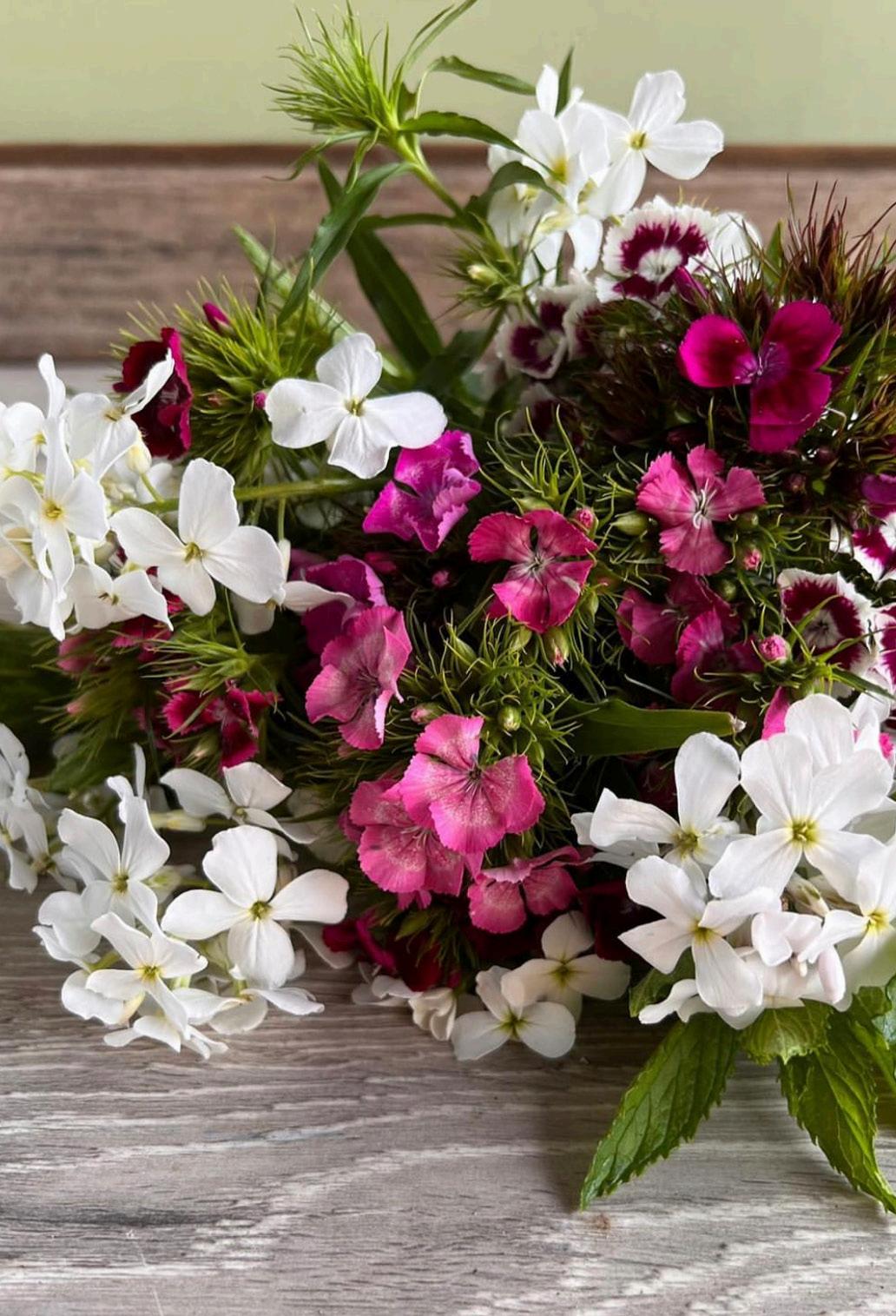

It’s an exciting month at Thorngrove as we look forward to The Gillingham & Shaftesbury show! As in previous years, we’ll be there; it’s without a doubt one of our favourite events in the calendar. If you’re attending the show, please do stop by and see us. We’ll have a huge range of beautiful plants for sale, but will also be on hand for advice and a natter, to talk about our shared love of plants and gardening. Last year we were over the moon to win First Prize for Best Small Stand, which was so humbling given the breadth of amazing local businesses on display. We know it will be the same this year, and we can’t wait to see what everyone brings along, and are looking forward to seeing you all there.
Throughout August we’re hosting Summer Crafts for Children, so if you’re looking to keep the little ones busy during the holidays, bring them along to get creative with some pot decorating! Check our website and social media
for full details. Hanging Basket workshops will be returning soon, too, and keep your eyes peeled for the reveal of our big Christmas event … yes, Christmas – it’ll be here before we know it!

We also wanted to send huge congratulations to our graduating Employ My Ability students. The end of July saw our ‘Leavers’ Day’ celebration of games, karaoke, barbecue, and certificate ceremony. Thorngrove continues to provide a unique environment for learning and work experience for young people with SEN. For more details, just visit: https:// employmyability.org.uk/
And finally – we’ve launched a huge summer clearance sale. Now’s the time when we start making room for new stock and potting up new plants.
There’s plenty of summer left, of course, and many of our plants can still find a spot in your summer planters and borders, but time waits for no gardener,
and the seasons roll on.
As for what’s looking good right now, nursery manager Mark Hoskins recommends “Hydrangeas, particularly Paniculata varieties such as Silver Dollar and Hercules, and Hydrangea Annabelle which has huge flowers in shades of white, pink and green.”.

We’re open seven days a week, and the Secret Garden Café is always worth stopping by (if things are a bit hot, it has a fully climate controlled interior). Visit Thorngrove this August!
thorngrovegardencentre.co.uk

It’s a busy changeover month at Thorngrove, says Kelsi-Dean Buck, with a big summer sale, fun events and graduation dayHydrangea paniculata Silver Dollar
This year’s Employ My Ability graduate Maddie Walters
Like every gardener, Barry Cuff has been struggling with July’s drought – despite having a well on the allotment, he has felt the effects on this month’s harvest
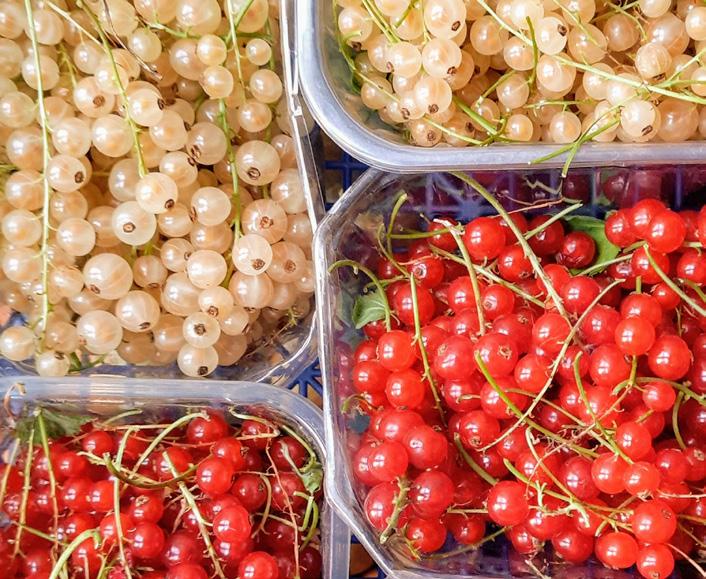

With less than 0.2 inches of rain, July was an exceptionally dry month. Plants and seedlings needed watering every day.

Luckily our well never ran dry and pumping was carried out daily to meet the demand.
When we took on our plot in 1989 there was no water on the site. In 1990 a plot-holder with foresight deepened an existing well and set up the beginnings of our present water system, which draws up water from a depth of about 12 feet. Over the years, extra storage capacity has been added to the system which serves all the plots. Our courgettes and squashes all got a can of water a day to keep them going.
But despite watering daily, some of our vegetables raced through their growth stages with senescence and running to seed taking place much earlier than in a normal year. The worst to suffer were our peas, lettuce and potatoes, with lower yields from the potatoes and peas – as we sow lettuce each month they were less of a problem.
By 8th of July we had already dug our Foremost and Charlotte potatoes and both yielded well. Elfe and Royal were dug on the 13th, and it was clear they both suffered from the lack of rain and gave below average yields. A new variety, Sagitta, which we lifted on the 24th, did exceptionally well. From some of these, Val made some very tasty chips. One of our main crop varieties (Rooster), lifted on the 27th, suffered badly from the drought, with many, but quite small, tubers.
We picked our first French beans (Safari) on the 17th.
There were good yields from the mangetout and snap peas, but like the peas they finished producing earlier than normal, despite copious amounts of water. However, we do have second crops of these which should be ready during August.
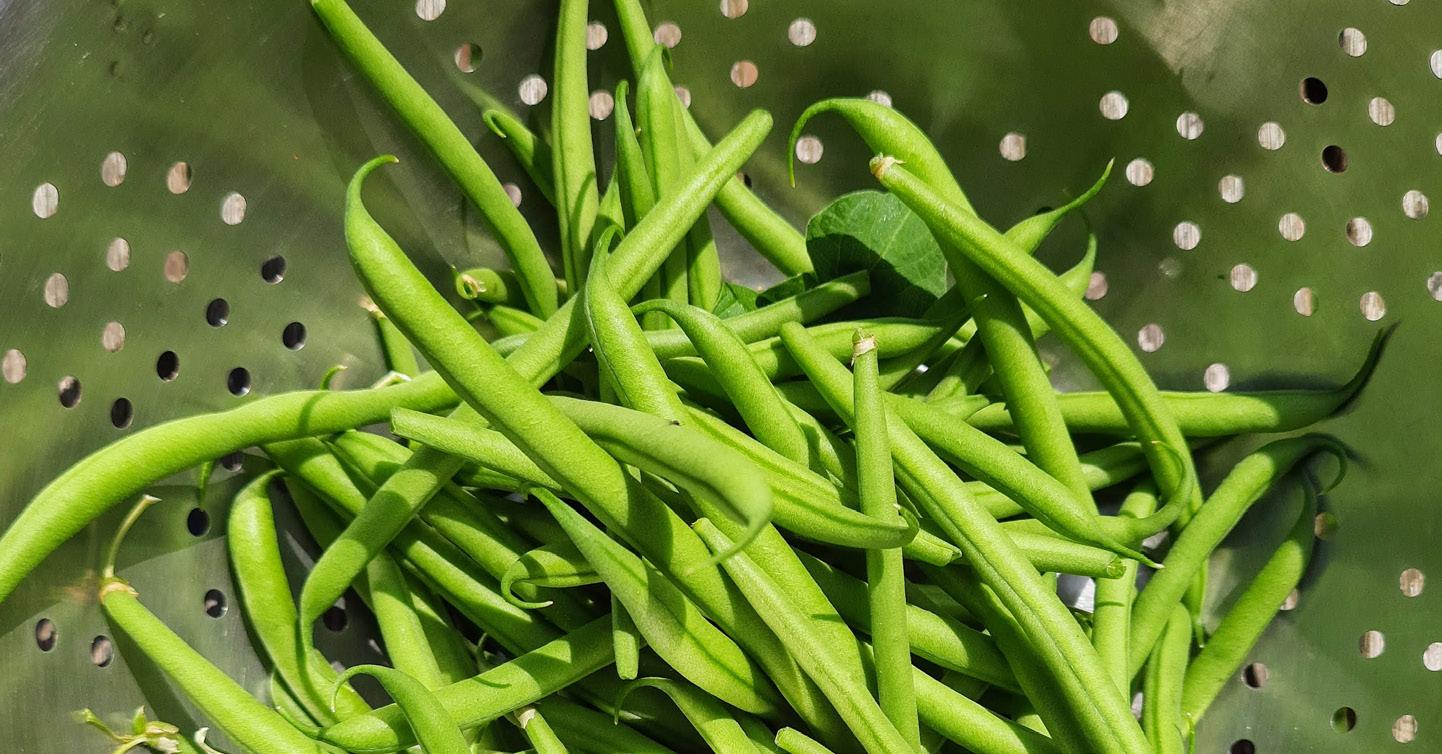
Due to the sunny and hot weather, our currants ripened quickly and we had good pickings of red,white and black.
Lastly, directly after the potatoes, we planted our Musselburgh leeks for digging in the new year.
Our small flower border attracted many butterflies including Small Coppers, Holly Blues and Gatekeepers. Twice during the month we spotted a Red Kite flying overhead.
We look forward to some decent rain in August.
In the wake of that heat wave, Pete Harcom has advice on watering and conserving water in the heat, along with your August garden to-do list
The recent run of unusually hot weather (not just the 40º heatwave, but the general pattern of recent years) is a reminder to reassess our garden watering and to look at ways of collecting and conserving it too. Collecting rainwater in water butts is an easy way to make a huge difference – not only is rainwater best for plants, it saves on your water meter bill too!
The best time to water plants is early morning. This allows the foliage to dry quickly, discouraging fungal spores. If you have to water in the evening, aim water at the roots and not on the leaves to reduce any fungal problems which occur when leaves are left wet overnight. Old washing up water can also be used in the garden once it’s cool. And an extra tip is to not throw away the water when you boil vegetables for meals – pop outside and pour it over the weeds that are appearing on the patio instead. Scalding hot water is guaranteed to damage even the toughest of weeds!
Ponds and water features will most likely lose water in this hot weather and need topping up –preferably with rainwater. The fish and pond wildlife will benefit from this. Hot weather will also deplete the oxygen levels in a pond, so perhaps consider a small solar-powered bubbling fountain pump, which will help with oxygenation.
• Complete your summer pruning of fruit trees and trimming of hedges and summer flowering shrubs.

• Sweet peas are at their best now and they benefit from constant picking of
Sweet peas are in peak season now –make sure you keep picking them!
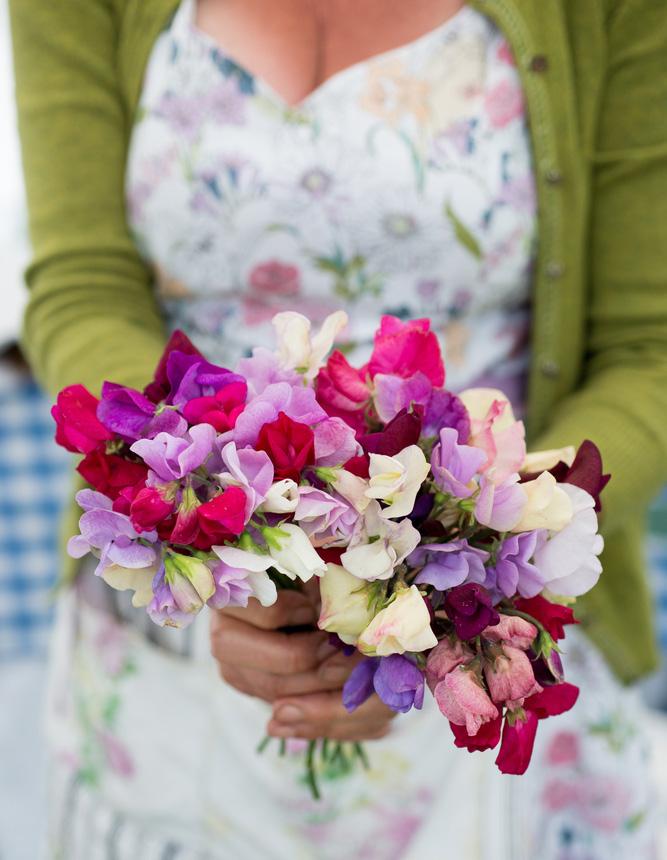
the flowers for vases in the house – this helps prolong the flowering period.
• Keep removing weeds! They compete for water and soil nutrients.
• Stay hydrated – hydrangeas in containers need to be kept well watered.
Rhododendrons and camellias also need to be kept moist, especially now, as next year’s buds are developing. Dahlias are especially thirsty plants –they need to be watched and watered carefully.
• Keep feeding all container plants with liquid fertiliser –once a week if possible.
• Remove the long whip side shoots from wisteria to approx 20cm from the main stem (to five or six leaves).
This will control the growth and encourage flowering next year. Wisteria will also need pruning again in January or February next year.
•
Don’t forget to think about next year’s garden! Now’s a good time to order your spring bulbs and perennials for this autumn’s planting.
Pete owns Sherton Abbas Gardening

Ragwort is a menace to all animal owners, says Andrew Livingston – but he suspects his passion for picking the poisonous plant isn’t popular with conservation groups
“They’re like f**kin’ trees!” Martin, our farmhand, once exclaimed after a day of picking ragwort out in the fields. Every summer as the weather dries up, these weeds explode like a plague over the grass.
Having the most beautiful views of Dorset has its downside; the gradient on our land means that we are unable to spray our fields to control the perennial weed (it also goes by the name stinking willie).
The reason we pick ragwort is that it is poisonous to many species of animal, especially the horses and cattle that roam our 60 acres. Each individual plant can create 50,000 to 60,000 seeds – if you leave it too long, when next year comes around you have a seriously escalating problem on your hands.
It’s a never-ending job. Having spent a whole day clearing just one field, you will come back the next day to find more that you’ve missed or which have sprouted overnight.
Despite spending hours walking up and down our own hills turfing them out of the ground, if I ever see others elsewhere while walking my dogs, I pull them out, too. I simply see it as my civic duty.
I know the pain that farmers go through to rid their land of this plant. I know that many conservation groups will hate me for declaring it a civic duty – although poisonous to cattle, the plants with their bright yellow heads are brilliant
pollinators for bees. Moths and butterflies also use the vegetation for feeding.
Unfortunately, I just can’t bring myself to leave them when they spread like wildfire. Poisons in the flowers can cause liver failure, disease and ultimately death.
So if an equine friend stinks of vegetation, she probably hasn’t been rolling around with the stable boy in the fields –she’s been pulling ragwort!
The weed is now even loved by gardeners, as the three-foottall yellow plant stands out beautifully in flower beds. However, the Weeds Act of 1959 imposes a duty on gardeners and landowners to prevent the weed from spreading.
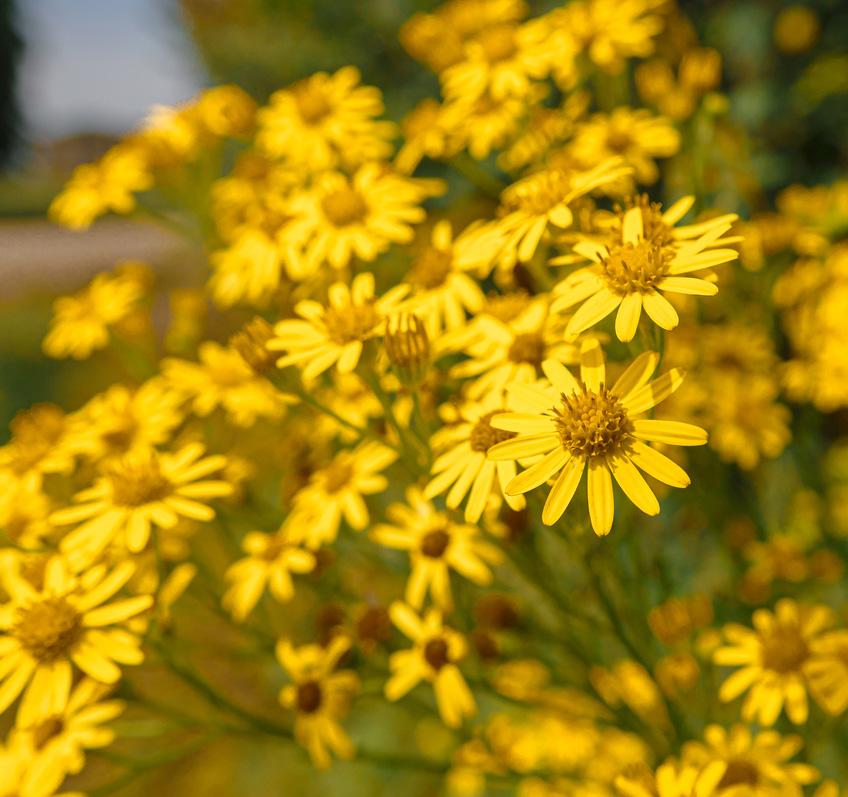
Last year the owner of a horse named Diamond was jailed after her horse was found dead in a field. The mare, which was believed to have died of hypothermia, was neglected and left with no additional feed – and with no vegetation in the field, she resorted to eating the ragwort which contributed to her deterioration and then eventual death.
For her crime, the woman was sentenced to 20 weeks in jail, fined £878 and banned from keeping animals for life.
I won’t lie – it’s a horrible job. But picking ragwort is just one of the many tasks we, as custodians and carers of animals, do to ensure their wellbeing.
I don’t mind pulling out a few hundred ‘f**kin trees’ if it keeps our cattle and horses safe.



Dry crops aren’t always a good thing, says fifth generation farmer James Cossins, as he explains late night combine harvesting and reducing fire risk

In my last article I wished for some dry and warm weather to start our cereal and oilseed harvest off. Little did I know what was coming! Yet again we have broken temperature records in this country with some exceptional heat during July, and taken together with no appreciable rainfall, conditions have been challenging for all farmers and growers.
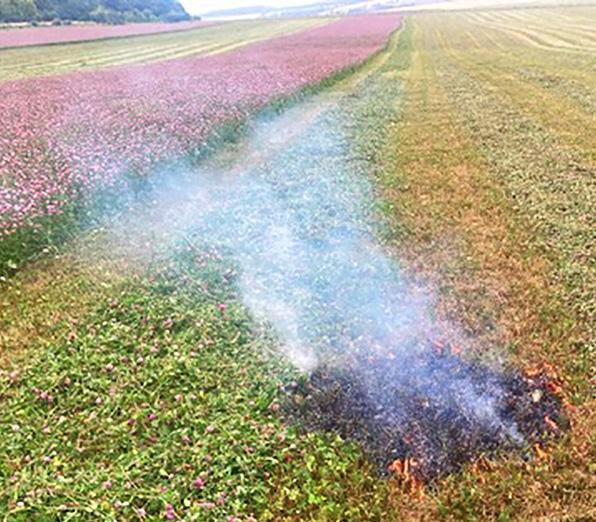
We managed to start harvesting about ten days earlier than normal with our winter malting barley crop. The moisture of the grain should be below 15 per cent in order for it to be stored safely, and our crop was coming in at between 11 and 12 per cent so no drying needed. Instead we will have to blow cool air through it when temperatures drop. We have had a similar issue with our oilseed crop which needs to be between six and nine per cent moisture in order for the crop to
be sold without any deductions.

During the extreme heat, our crop was coming in below six per cent, so we had to stop harvesting and continue early in the morning or at night. If the crop is too dry the oil cannot be extracted – this is why during a hot spell you might see combine harvesters working late at night, when the temperatures are lower. The alternative is the risk that if the crop is left unharvested and a thunderstorm arrives, the oilseed pods will expand with the rain on them and the tiny seeds will drop out – resulting in the loss of the entire crop.
The yields, certainly of the barley, have been encouraging considering the dry spring and summer. Early indications from grain sample results are that it has met the malting standards and we will be able to fulfill our contract with Molston Coors for beer production. We hope now to start our wheat crop harvesting; again ten days early in ripening.
Our cattle have not enjoyed the heat so much. Many of the grazing fields do have tree shelters for the cattle to get under, but with the milking cows we rotate around paddocks and not all of them have shade. During the very hot days we decided to simply put the cows in the shaded paddocks and give
them extra feed in the form of baled silage to keep them happy. I know some farmers bring their cows inside during the heat –great if the buildings are suitable with high roofs and fans to keep them cool. Unfortunately ours are not really suitable for summer housing. If, as climate change experts predict, we continue to get very hot periods more frequently, we may have to adapt our buildings.
Fire, fire Obviously, during this hot period the risk of fire has increased, obviously, and we have tried to take precautions. The combines are blown off every day with a compressor to stop the build-up of dust around the engine and other hot parts. We always have a tanker of water in place, and also a cultivator on a tractor ready and waiting in case of fire. Luckily we are only three miles from Blandford fire station if there should be an emergency.
The local fire crews visit the farm as part of their training, in order to identify the risks and hazards on farms. I would just like to thank the fire service for the support they give the farming community.
I am sure the weather will balance itself out sometime – we now need the rain for our grass to grow again. Like most people’s lawns, they are all brown!
Combining harvesting at Rawston Farm in the early 1970s
A fire started while mowing a clover key
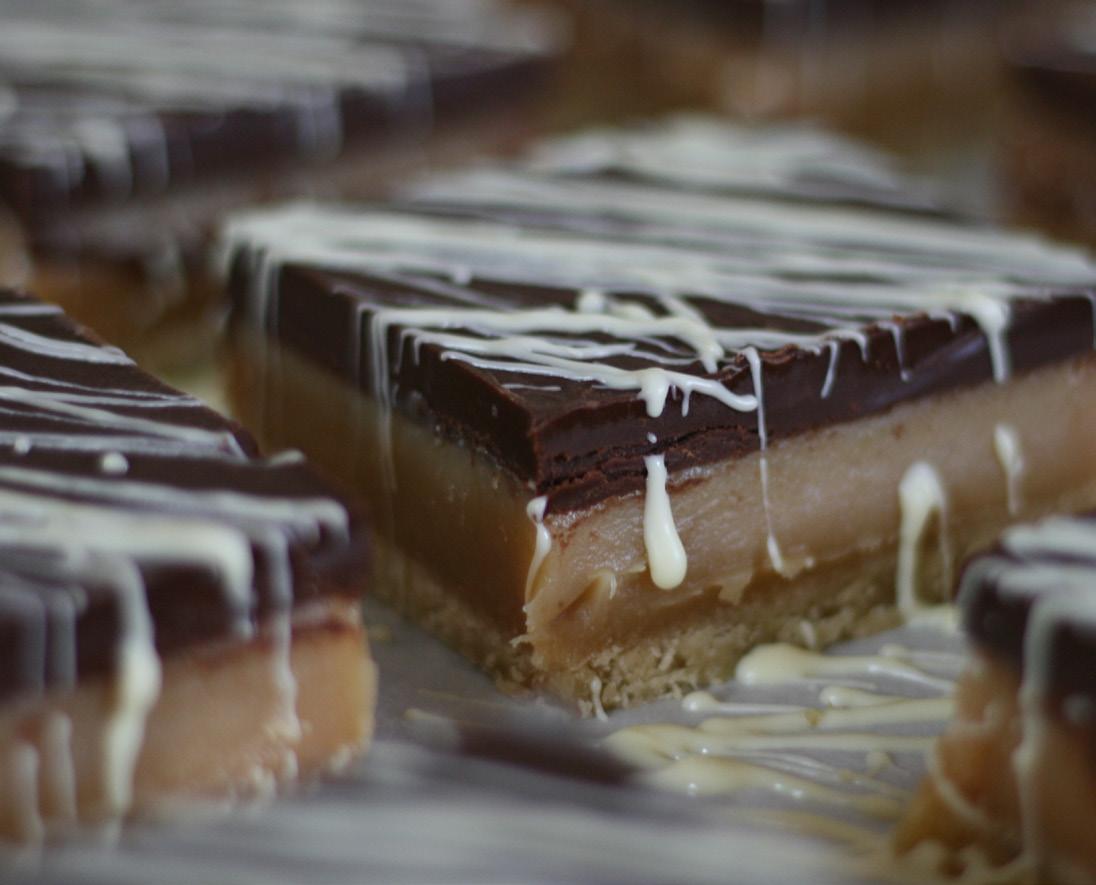
I was recently at a wedding, and my eight-yearold niece (a budding baker) was scrolling through my cake photos. She stopped on the one for this recipe! Millionaire’s shortbread is always a decadent bake, and it’s such a crowd pleaser. Don’t be daunted – it may look complicated at first glance and it does have steps for each layer, but each step is quite simple. Just be careful when cooking the caramel. I will be sending this recipe to my niece, for sure. If we get a return of that glorious sunshine, you may want to store this in the fridge – unless you want to make the most of the oozy, gooey chocolate and caramel! Heather x
• 125g plain flour
• 50g soft brown sugar
• 2tsp cornflour
• 1/4 tsp salt
• 1tbsp water
• 1 egg yolk
• 1 can condensed milk
• 100g soft brown sugar
• 85g soft butter
• 2tbsp golden syrup
• 200g dark chocolate
• 3tbsp double cream
• A little white chocolate to finish.
• Preheat the oven to 180º fan/gas 5. Grease and line an 8″ square cake tin.
• Mix all the ingredients for the base together in a large bowl and smooth the mixture into the cake pan.
• Bake for 15 minutes until the base is golden brown and then leave to cool.
• While the biscuit base is cooling, make the caramel. In a large saucepan, add the condensed milk, sugar, butter and golden syrup and heat until the mixture reaches 225ºF. Keep stirring continuously otherwise the mixture will burn (if it catches a little, it doesn’t matter). You may want to stir with an oven glove on as the hot sugary mixture may bubble and spit. If you don’t have a thermometer, you want to heat the mixture until it gets to a strong boil, and then for about one minute more.
• Once the mixture reaches the right temperature, remove from the heat, tip onto the biscuit base and spread out. Leave to cool.
• Once the caramel mixture is cold and set, gently melt the chocolate and stir in the cream. Pour this creamy mixture onto the caramel and smooth out.
• Place the whole pan into the fridge to set. After at least an hour, remove from the fridge and remove the bake from the tin. Using a sharp knife, cut
• the bake into pieces (the colder the bake and the sharper the knife, the easier it is to cut!) without the caramel escaping. If you want clean edges, clean the knife between each cut.
• To finish, melt the white chocolate and drizzle over each piece.
Heather’s tips - ‘You can replace the melted chocolate and cream mixture with Malteser chocolate spread and finish with whole Maltesers for an extra decadent slice (see image opposite), or try adding some Nutella to your chocolate mix for an extra nutty flavour.’
Heather Brown is on the committee of the Guild of Food Writers; she is a home economist with a passion for Dorset’s brilliant foodie scene. She runs Dorset Foodie Feed, championing Dorset’s food and drink businesses, as well as working with her food industry clients.
 All images: Heather Brown
All images: Heather Brown
Local producers Durslade Farm and Hollis Mead Organic Dairy are among the star turns in this year’s awards, reports Fanny Charles

THE results of the 2022 Great Taste Awards, organised by the Gillingham-based Guild of Fine Food, include 529 Great Taste star products from the south west, with multiple awards for Durslade Farm Shop at Hauser & Wirth’s contemporary art centre at Bruton and a coveted three stars for Hollis Mead Organic Dairy at Corscombe.

From blood orange marmalade
to hot and cold smoked salmon and kimchi, the awards demonstrate the amazing variety and creativity of food producers around the country and the world. The south west’s food producers have won 29 threestar awards, 159 two-star awards and 341 one-star awards. Less than two per cent of the 14,205 entries in 2022 received three stars, given for ‘extraordinarily tasty food and drink’.
The Great Taste judging panel is made up of more than 500 food and drink professionals, including critics, chefs, recipe creators, buyers, retailers, journalists, broadcasters and other experts in the field. This year, they included buyers from Selfridges, Whole Foods, Fortnum & Mason and Waitrose,
delicious magazine editor Karen Barnes, Bake Off contestant and author Chetna Makan, MasterChef Professionals finalist Santosh Shah, the BBC’s Nigel Bardem, restaurateurs Kavi Thakrar (Dishoom) and Amy Poon (Poon’s), journalists Felicity Cloake, Xanthe Clay and Joanna Blythman and food-writers Gill Meller, Melissa Thompson and Georgina Hayden.
Guild managing director John Farrand says: “We are chuffed to be unveiling the list of awardwinners for 2022 today. It’s been another exceptional year of high quality, innovation and creativity. We’re seeing a steady increase in plant-based products year-on-year and the fermented and functional foods are really starting to hold their own in terms of taste. I was extremely impressed to see that many
of the entries have come from businesses which started trading in the last year or two. It isn’t easy doing what these producers do, neither for the start-ups nor the established businesses. I have the utmost admiration for them all.”
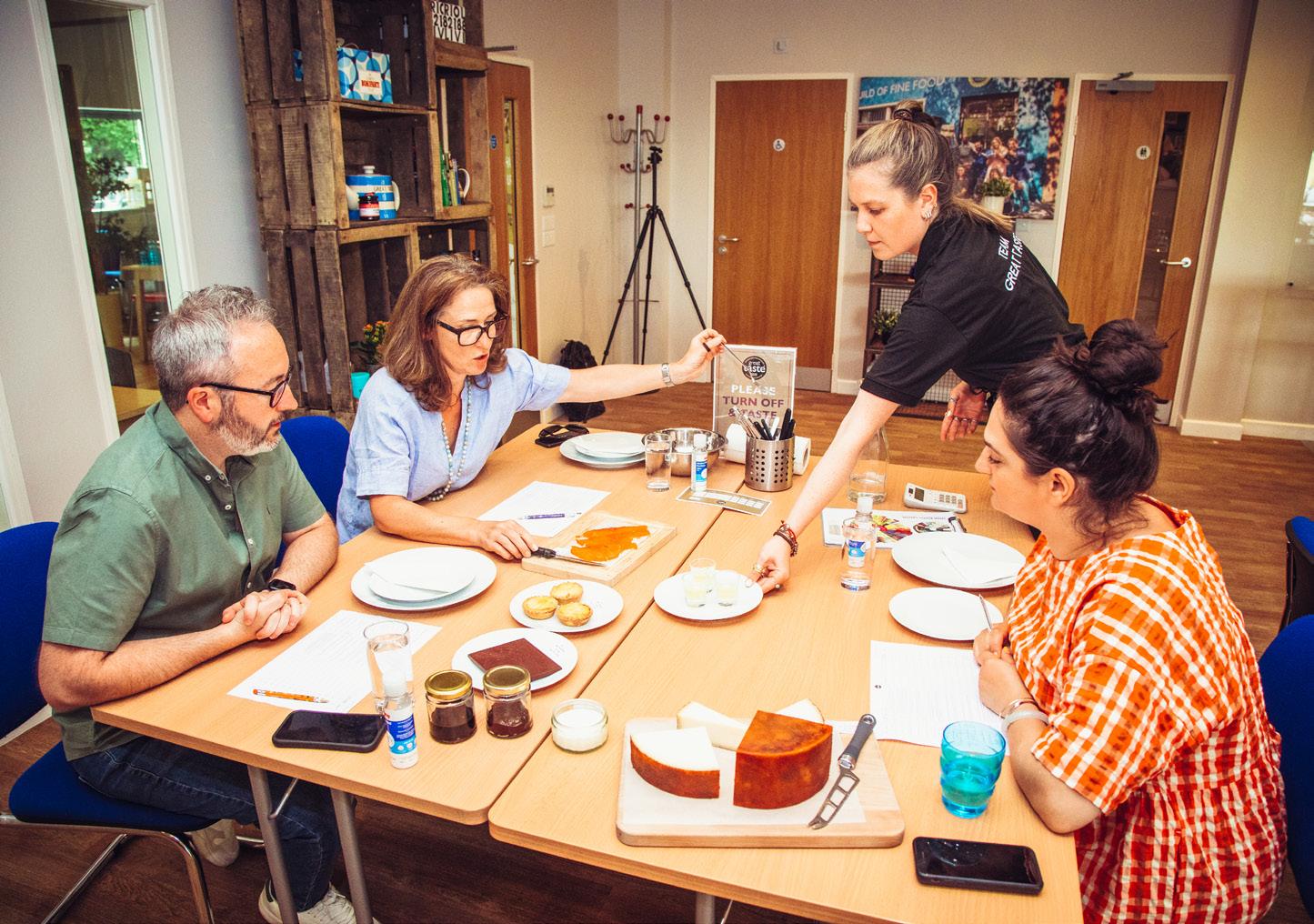

Overall, 5,556 products received either one, two or three stars. The highest scoring producers go through to the regional finals and the winners (and the supreme champion) will be announced at the Golden Fork ceremony on Monday 5th September at Southwark Cathedral.
Local three-star winners include:
• Durslade Farm Shop t/a Artfarm Ltd, Bruton for air dried beef, beef x wagyu short ribs, and leg of lamb;
• Beanpress Coffee of Winterborne Kingston for Rainbow Juice
• Coombe Farm Organic, Roundham near Crewkerne, for whole goose
• Hollis Mead Organic Dairy, Corscombe for Benville organic triple cream Briestyle cheese (and two onestar awards).
Local two-star winners include: Ajar Of, Hazelbury Bryan, Jumbleberry Jam with Cassis (and one-star awards for Dorset
Raspberry Jam and Black Garlic Ketchup); Durslade Farm Shop, Durslade Summer Honey, piccalilli, beef x Wagyu Cote de Boeu, rack of lamb, grassfed Wagyu x sirloin steaks, Boerewors, Durslade Farm potted beef with wild horseradish (and 14 one-star awards); Baboo Gelato, West Bay, Madagascan Vanilla Gelato, Strawberry Gelato, Brandy Gelato; Bad Hand Coffee, Bournemouth, Shaka Espresso; BeanCraft Chocolate, Bradford on Avon, Orangettes; Blackmore Vale Butchery, Henstridge, Tomahawk Steak; Capreolus,
Rampisham, Guanciale; and seven one-star awards; Chococo, Wareham, 80% Uganda origin hot chocolate flakes, Speculoos Caramel, Molasses and Brown Butter Caramel; and three one-star products; Fussells, Frome, garlic extra virgin rapeseed oil; Madjeston Milk Station, Gillingham, pasteurised unhomogenised whole milk; Meggy Moo’s Dairy, Iwerne Courtney, sea-salted butter and peppered butter; Mure Liqueurs, by Mat Follas, Dorchester, Properly Bitter Lemon Liqueur and Old Tom Liqueur; Purbeck Ice Cream, Corfe Castle, Ecuadorian Dark 72% Chocolate Bar with Natural Peppermint; Somerset Cider Brandy Company, 10-yearold Somerset Cider Brandy; The Dorset Ginger Company, Lytchett Matravers, Dorset Ginger Original, Dorset Ginger Extra Strong; The Wasabi Company, Wareham, Dried Donko Organic Shiitake Mushrooms.
The full list of this year’s winners and where to buy them can be found at www.greattasteawards. co.uk – a wide range of the award-winning products are available to buy in delis, farm shops and independent retail outlets across the country.
This month Rachael Rowe met Jen Daly and Ken Peet, London expats who are the proud owners of the thriving Cerne Abbas Stores
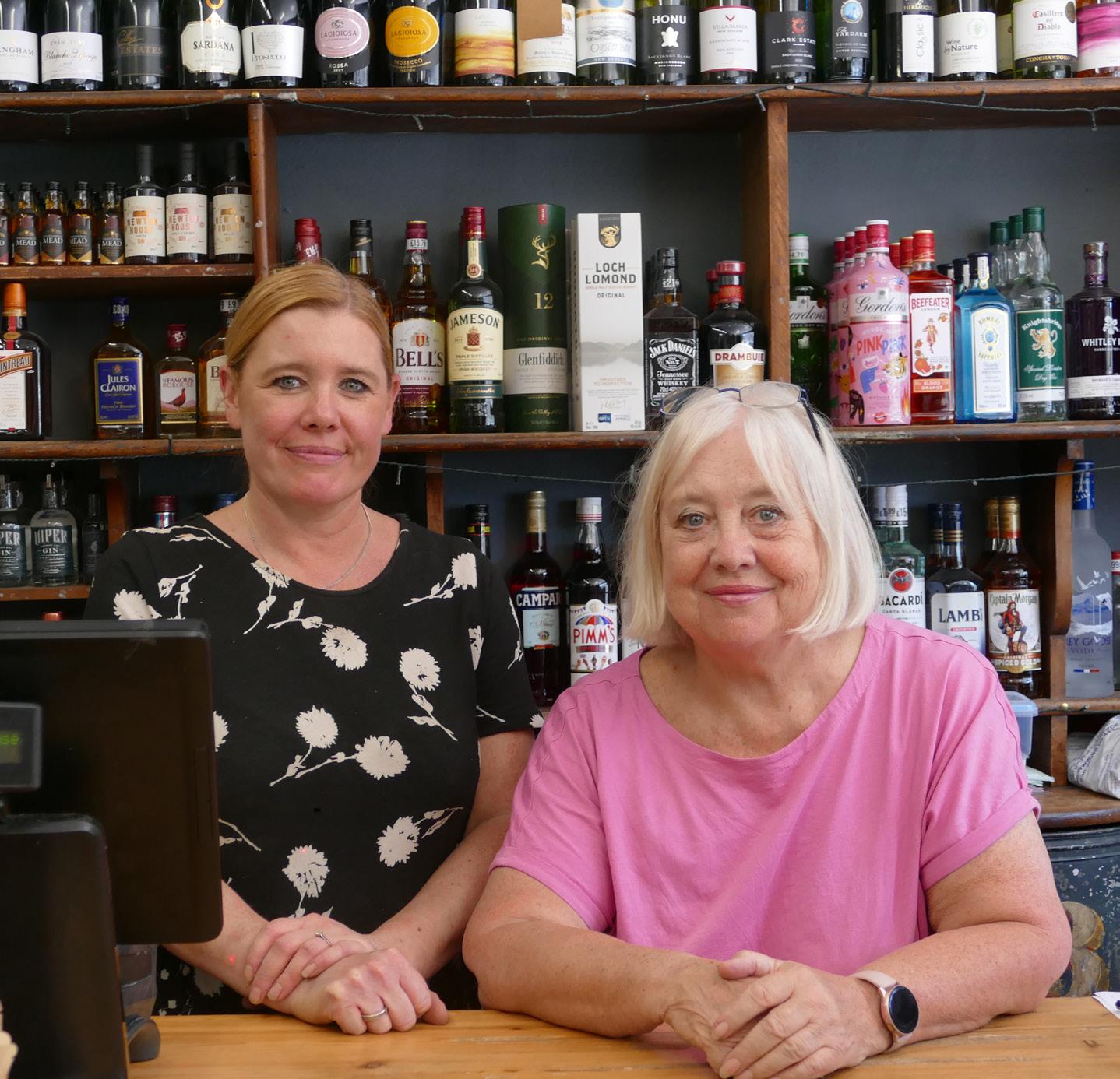
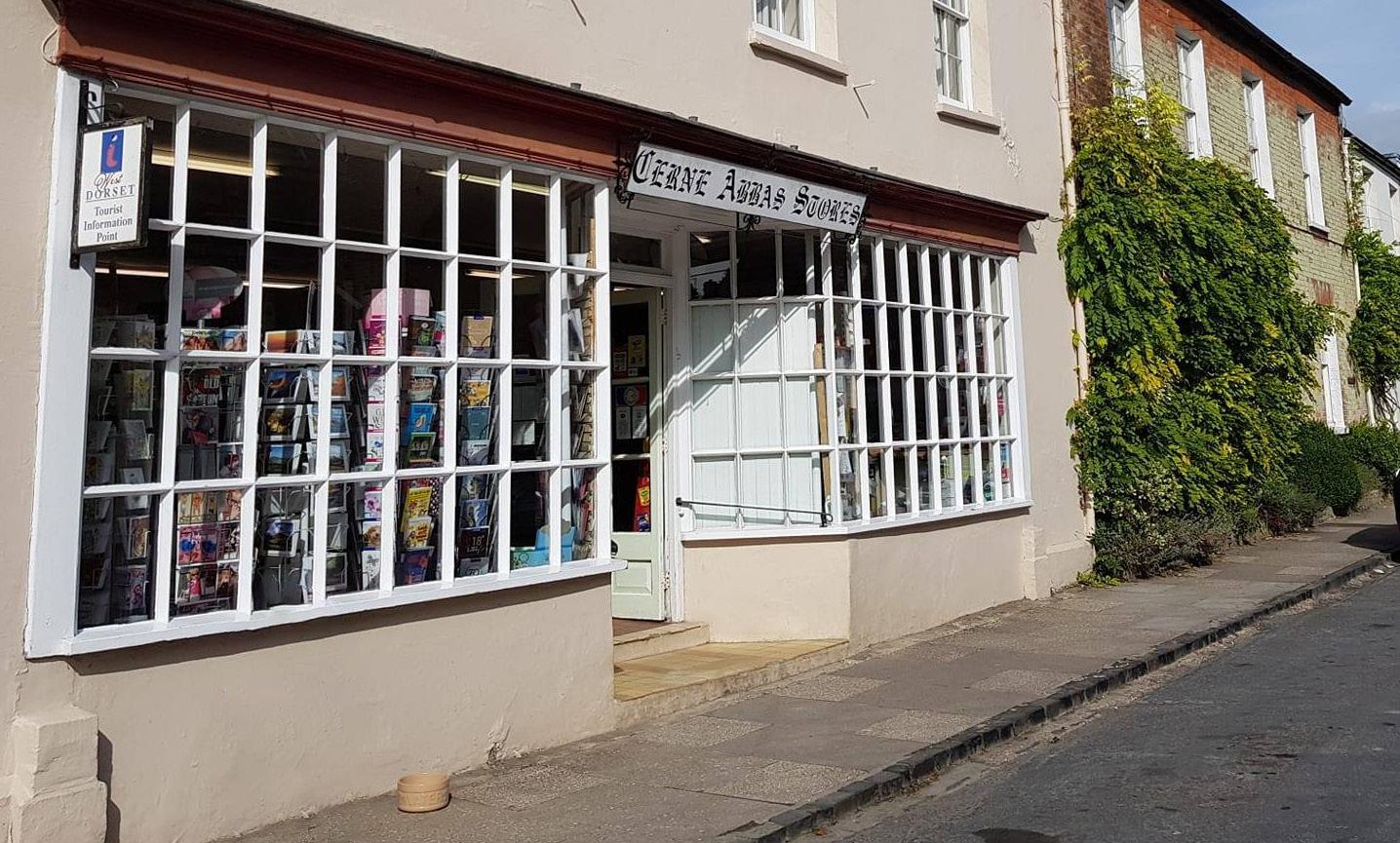
‘We arrived with the Beast from the East in 2018, and on day one, we had no milk or newspapers.’
For Jen Daly and Ken Peet, arrival in Cerne Abbas was a challenge. But what inspired them to come to one of Dorset’s most beautiful villages?
Jen said: “We were both working in London and looking for a change. We looked at various businesses, not just village shops – and this one kept coming up. We loved the village and fell in love with the shop. When we arrived in all the snow, people kept telling us ‘Dorset doesn’t get snow’!
‘Cerne Abbas is such a great village. People really support local businesses. There aren’t many villages with three pubs, shops and a GP practice.
‘We have concentrated on getting as much fresh local produce as possible in the shop. So we have fresh fish and fresh meat, and most are locally sourced. We have also adapted
to the village. The pandemic was awful, but we still do home deliveries to people who cannot get to the shop.’
The shop is also a tourist
information hub and has a Post Office. There’s an excellent range of maps for walkers and no end of tempting treats for a picnic. And many products
It’s a family business – Jen with her mum Kate in the stores
have the famous Cerne Abbas Giant logo, reflecting the local attraction and appealing to visitors.
‘It’s Ken and me! My Mum retired about ten years ago and helps behind the counter, and we also have three girls who work in the shop.’
‘We have lovely smoked salmon from Severn and Wye. Cerne Abbas beer is really popular – the brewery is a mile up the road. And our cheeses. We have a large local and continental selection. We also have a huge baked range, including sausage rolls and Cornish pasties.’
‘Well, we have more than 70 suppliers in this shop. We have Dorset Brie and Dorset Blue Vinny. There aren’t that many places where you can make up a complete cheeseboard (blue, hard, smoked, soft, goats, sheep) sourcing within a 20-mile radius. We also have Viper Gin made in the village and Conker is another Dorset brand. There are also

jams and chutneys From Dorset With Love. Our milk comes from a mile up the road and is distributed in reusable bottles from the vending machine.’
‘Once we had learned how to actually run a shop – the pandemic! We were early to shut the doors here, and set up a table in the doorway. It was exhausting. Everyone’s shopping
changed, people did not buy routinely, making ordering harder. We tried not to have too much stock, and luckily, being independent, we were not reliant on one place. Also, we never ran out of loo roll!
My sister-in-law was here helping out and she clocked up five miles a day, walking from the stall to the back of the shop to get bread and milk for people!’
‘I think I’m most proud of how we’ve become part of the community. My mum is very popular and knows everyone! She’s always chatting with people.’
‘We’d like to keep expanding our local food ranges and the high-end quality products at a fair price. We’re also planning to develop our online hamper service.’
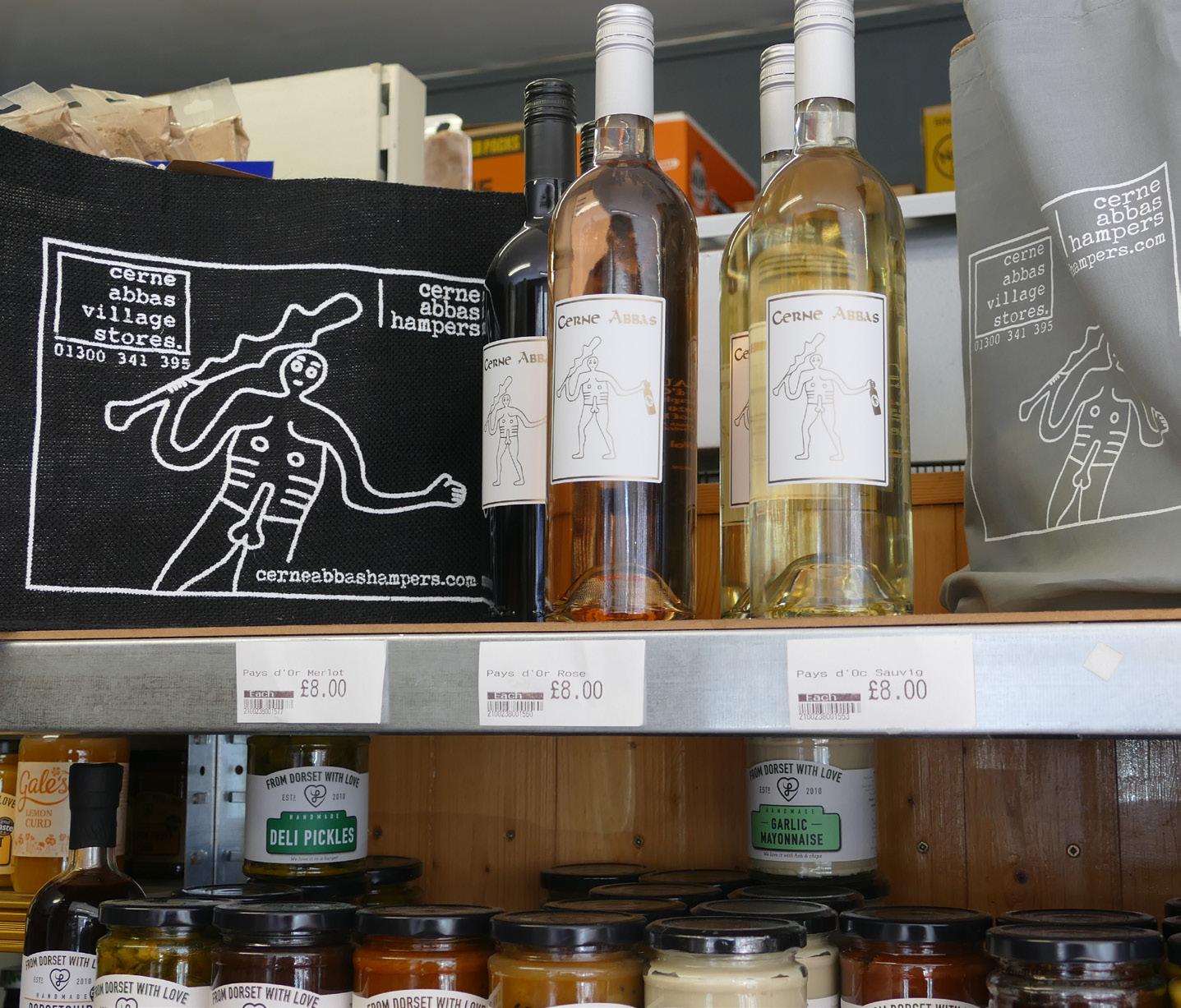
Cerne Abbas Stores
9 Long Street, DT2 7JF www.facebook.com/ CerneAbbasStores/ Monday to Saturday 8am to 6pm Sundays 8am to 1pm
This month, Sadie Wilkins of Vineyards in Sherborne is keen to debunk the myth that all great rosé is born in Provence


Shakespeare’s Juliet once claimed, “A rose by any other name would smell as sweet,”. But can we ever truly shake off longstanding reputations made through the power of language?
When it comes to wine, the importance of language use has always interested me – partly because in another life I taught English for 12 years, but also because it’s pure linguistic joy. Not only does your sensory language get a workout while describing the sensation on your palate, but then there’s the job of conveying this experience to another –and, of course, it’s all very subjective, isn’t it? Not to mention dealing with the wine classification systems and words associated with different countries and regions. So, it’s fair to say there’s a reason all English teachers turn to wine! Anyhow, I digress …

Making a judgement based on a name is commonplace in the world of wine. Let’s take an obvious example like Champagne; one mere mention and an ice-bucketload of connotations pour out regarding its quality, provenance and price. We expect prestige, heritage and a certain level of complexity in the glass. As Champagne has what we call an AOC (Apellation d’Origine Controlée) – essentially a set of regulations by which you must abide – both the name and wine style are protected and cannot be used for ‘any old sparkling.’
Same goes for any of the Burgundy houses in France – or in fact any appellation across the globe. So why does that matter? Surely that’s a positive? Well, it is to an extent, particularly in terms of managing expectations of what lies within the bottle. However, it really is a double-edged sword and there’s one label that made me particularly want to write this piece – Provence.
The flipside of reputations attached to certain labels is that they becomes a sticking point for some folk. We have to fight the cause of some rosés vigorously, just because they don’t come from Provence. Don’t get me wrong, I love a nice glass of Provence and we have some delicious bottles on our shelves. But there really are many wines standing in the shadows of the name. We enjoy
showcasing amazing rosés from the Bekaa Valley or the Veneto – some are quite similar style, but we give customers the choice of playing safe in the realms of Provence or giving it a twist. You never know, you might just find a new addition to the wine rack or fridge for the summer from an unexpected source.
Drinking Pink Thursday 11th August, 7pm to 8:30pm
An evening of wine tasting dedicated to the pink stuff – Hannah and Sadie will be romancing you with rosé, busting myths, showcasing different grapes, countries and winemaking techniques and raising an indie glass to a style of wine which is still living life under a heavy Provençal stereotype.
Join us – it’s the perfect time of year for a rosé tasting and the six wines we have lined up are simply glorious! As always, no prior knowledge is needed – simply come along, drink great wine and leave knowing something new.
Here
With only a month to go, it’s time to sharpen those pencils, polish those keyboards and get your Love Local Trust Local award entry into the team
For those not in the know, these awards (now in their third year) were created by farmers for farmers. They celebrate the very best in local Dorset production and the team want to hear from all the growers, producers, farmers, dairy producers, fishermen, brewers, bakers, shop owners or hospitality trades that have a wonderful food story to tell.
Dorset is an amazing food county that celebrates some wonderful high achieving food and drink brands; Dorset Cereals, Hall & Woodhouse Brewery, Dorset Blue Vinny, Purbeck Ice Cream, Black Cow Vodka, Langham Winery, Dorset Knob and many more from the treasure box of amazing Dorset producers.
Love Local Trust Local is more than just an awards ceremony, it’s a complete food movement. If your food has a great story then you’re bound to fit into one of the 15 categories: Cheese, Dairy, Meat, Fish, Sweet and Savoury Bakery, Dorset Drinks, Honey, Jams, Chutneys and Condiments, Innovation & Diversification, Conservation & Sustainability, Business Development and Growth, Farm Shops and Hospitality.
Love Local Trust Local is a food label to watch. The team are sharing their love for local food with the wider community so that they can continue to educate and encourage people to eat better, be healthier, live longer and shop from small, independent businesses near them. Farmers and producers need a voice, and these awards are supporting all of them.
To be part of it all, enter today. You have one month and counting ...
Awards are FREE to enter. Remember; if you don’t tell other people about the amazing things you’re doing, they just won’t know. Be bold - put yourself out there! If you’re a business that is growing, producing, rearing, brewing, crafting or cooking here in Dorset, and you source your ingredients within 30 miles of your home base then you should be entering.
You can enter one product in each category, or multiple products into a single category, it’s totally up to you.
The Love Local Trust Local Awards are fast becoming Dorset’s food & farming family to be part of, recognising the hard work and dedication of the people behind the food on our plates as they work hard to put Dorset producers on the map.
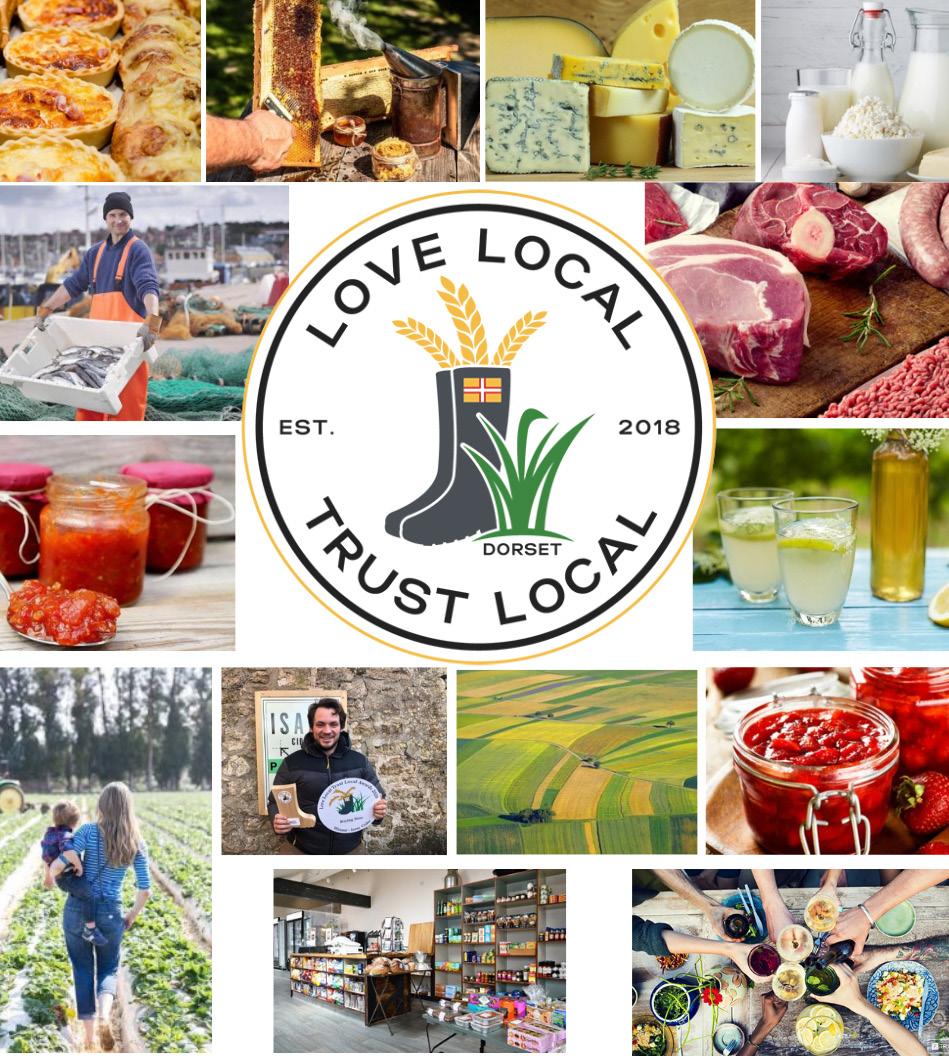

The awards are loyally sponsored by a range of local Dorset businesses all of whom also champion the amazing food production in our county and include Blanchards Bailey, Symonds & Sampson, Minster Furniture, Saffery Champness, Beeson & Beeson, Chase Farm, Roberts Food Service, Harbarn Developments, Caffe Delizia, NFU Mutual Wessex, Tarhinton Farms, Les Enfant Terribles, Meggy Moo’s Dairy, Peggs Farm, Hemsworth Farm, Kingston Maurward College and, of course, continued support from The BV.
To find out more, visit lovelocaltrustlocalawards.co.uk or call us for a friendly chat on 07831 184920.




Simply click to complete on your tablet, computer or phone - or there’s a download option if you prefer pen and paper.

Jigsaw Rainy day bee (taken at Lytes Cary Manor) Just click to complete. If you get stuck, there’s an icon at the top of the screen which reveals the completed picture for you to refresh your memory.


Q: “I have just become eligible for my state pension. I am already struggling to pay my energy bills and I am worried about the future. What help can I get?”
A: Firstly, you should do a benefits check to ensure that you are claiming everything to which you are entitled. You can use an online benefit checker such as EntitledTo but if you need more help, don’t hesitate to contact your local Citizens Advice. You should also contact your energy supplier and ask what assistance they can provide.
Once people reach state pension age, they are eligible for a Winter Fuel Payment, which is an annual one-off payment to help you pay for heating during the winter. You should start getting the Winter Fuel Payment automatically once you reach State Pension age, but sometimes you might need to apply. You can find out how to apply for the Winter Fuel Payment on GOV.UK.
Dorset Council’s Household Support Fund is now open to every Dorset household which includes someone of state pension age, provided that person doesn’t have savings of more than £10K. Households can apply online and the application must be made in the name of the person who is the pensioner.
Applicants will need to provide evidence of age and ID. If you are doing the application yourself, you will need to be able to upload the documents via the website.
If you are struggling with the application process, get in touch
with Citizens Advice, who will be able to suggest a way ahead.

If you pay Council Tax and your home is in band A-D (or E if you get the disabled band reduction discount) you may have already received the £150 energy discount via your council tax. If you have not received this or have received a letter telling you that you are entitled but have not made a claim, you should take action now.
People who receive meanstested benefits, including Pension Credit, may get a Cost of Living payment of £650 paid in two lump sums of £326 and £324. You do not have to make a claim – the payment will be made automatically. The first of these payments should have
been made in July with the second due in the autumn. If you are eligible for pension credit, that may act as a passport to other payments, such as the Warm Home Discount Scheme and discounts such as a discount on your water bill.
The government plans to give every household in Great Britain £400 off their electricity bill – it is called the Energy Bills Support Scheme. You don’t need to do anything to get the money and you won’t have to pay it back. £400 will be automatically added to your energy account over six months starting from October.
If you have a prepayment meter, the £400 will be added to your meter or you’ll be given vouchers – the government will confirm how you’ll get the money nearer the time.
Operation Elder is designed to reassure local communities says Sgt Jane Moore
With an influx of traffic and visitors to the North Dorset area leading up to and during the Great Dorset Steam Fair, the local Neighbourhood Policing Teams, Rural Crime Team and our Citizens in Policing team will be holding a number of opportunities for the local community to come and speak to us.
Operation Elder is Dorset Police’s response for ‘community reassurance and a high visibility presence’ in the area and villages around the

site of the Great Dorset Steam Fair. You will be able to raise any concerns, ask any questions or just come and meet the team!
They will be held twice daily from 20th to 28th August 2022 at various locations. You can find more information about each location below or online at https://www.dorset.police.uk/ neighbourhood-policing/north-dorset-rural/ (we use the What3Words app to indicate precise locations). We look forward to seeing you!
For details on your local team’s future engagements please refer to our website. As always, if you wish to contact us follow the links.
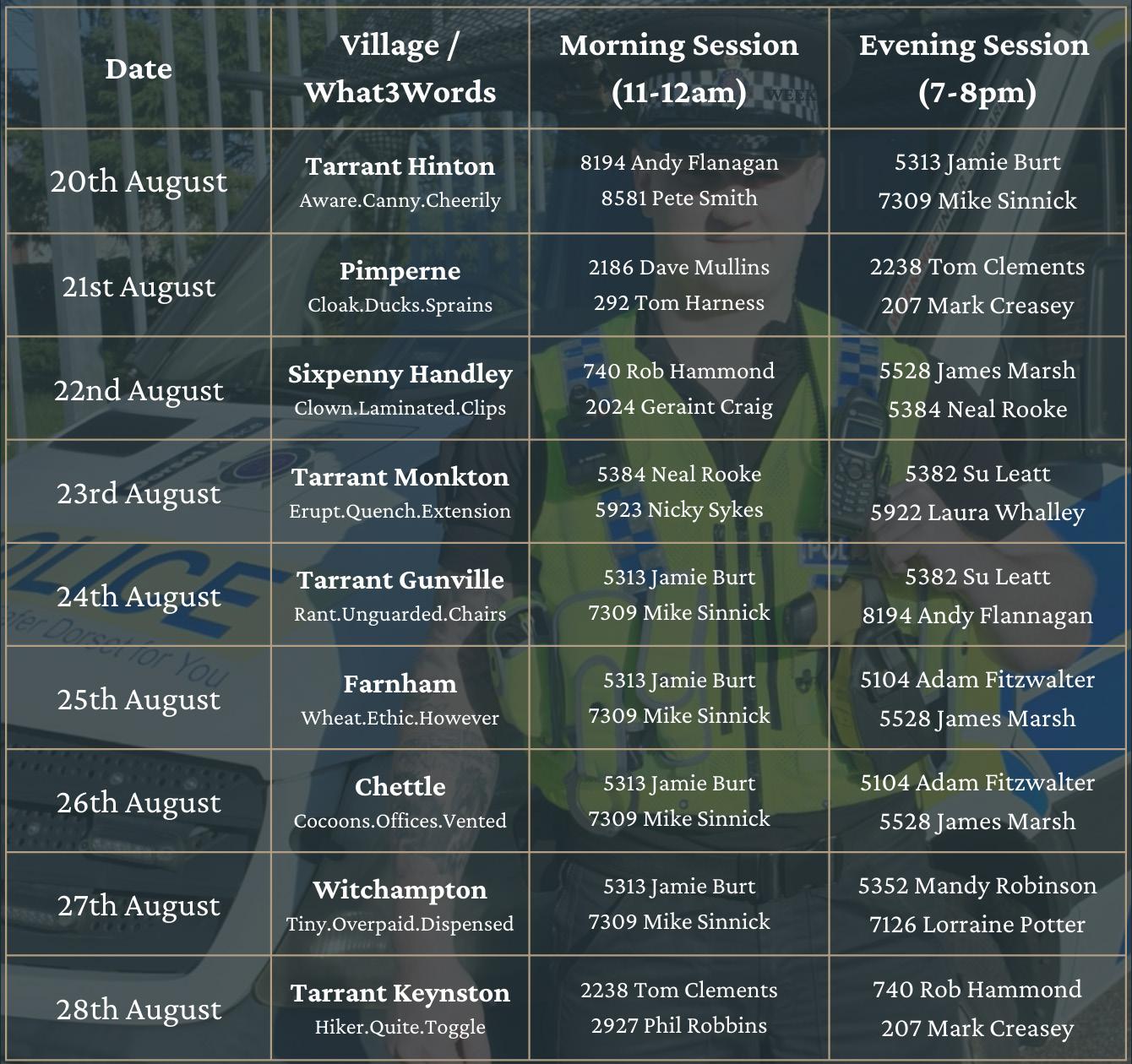
Sturminster Newton has a new community newsletter – Pauline Batstone tells you how to find it, along with the round-up of what’s happening in Stur

The third edition of What’s Happening in Stur has now come out. Not everyone is aware of it yet, so do please spread the word among your friends and family. It does the job Stur’s Unity magazine once did, sharing what is happening in the town. The town council is printing off hard copies but do email whatshappeninginstur@btconnect.com to receive your own digital copy. Alternatively, you can read it online via the Learning Centre website - snclc.org.uk/ whatshappeninginstur. Thanks to David Shepherd, who leads The Exchange Learning Centre and has initiated this.
Work continues to transform the former NatWest
Bank into an exciting space for Blackmore Vale entrepreneurs to sell their goods to the public.
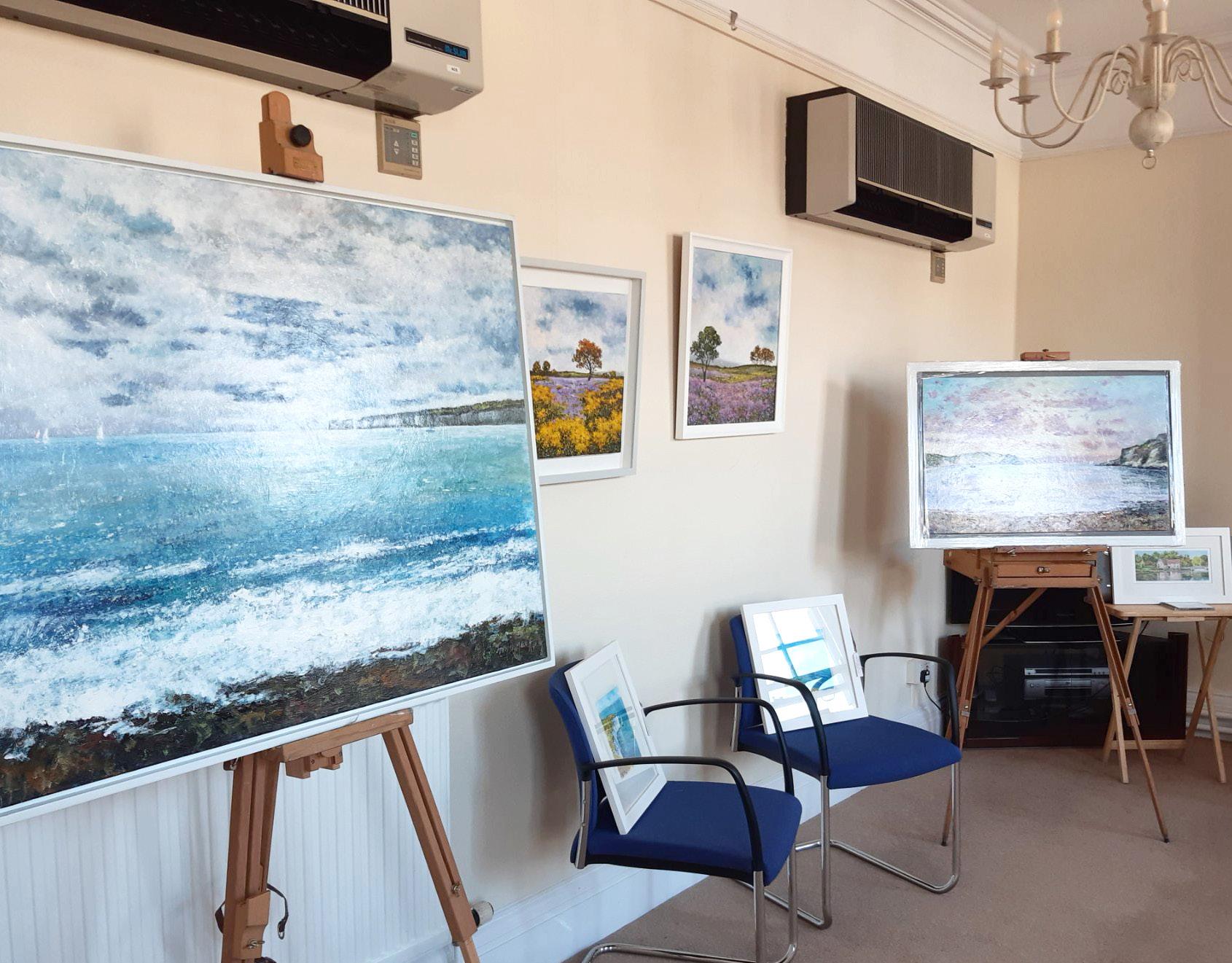
More than 30 business have so far expressed interest in hiring space, ranging from a shelf to the former manager’s office or the bank’s old strongroom. The latter is the idea of our own local wine producer! We have several local authors who have signed up for shelf space on which to sell their books. Anyone who may be interested should get in touch on 1855stur@gmail.com to arrange an interview.
Jacqui Wragg as been researching the old building, and discovered that it was handed over to the National Provincial Bank on 18th September 1855. Appropriate, then, that an autum opening of phase one is planned.
The art gallery above The Emporium is proving a lovely space to display the range of pre-loved pictures, prints and paintings which are donated for sale. There have been some lovely surprises too, with visitors advising that a particular painting priced at £15 in the gallery could well raise 200 per cent more at auction.
The Baxter’s Room on the second floor can now be hired by artists wishing to exhibit their work –£100 fee for the first week, £80 the second, plus commission. Our first exhibitor John Dimech, who filled the space with local views of Dorset, has had lots of visitors.

Stur Arts Week has just come to an end – thanks to all those artists who exhibited and the shops which gave window space.
Sturbiz is the official Chamber of Commerce for Sturminster Newton and the local area. There is a new focus to play a more active role on behalf of our town’s business community after Covid, along with the aim of increasing membership to 100 this year, says co-ordinator Jacqui Wragg, who is already planning the third Schools Jobs and Apprenticeship Fair for this autumn, where our young people can research potential local careers.
People often say Stur is buzzing and in the last week of August it will be buzzing even more! We have a number of events, celebrating Sturminster Newton’s beautiful natural environment and the wildlife and plants which share it with us. For information about those partnership events keep an eye on sturbuzz.org.uk. The Riverside Family Fest is on the 20th August (see poster above right) on the Riverside Meadows. There will also be a
community fete on 27th August, 12pm to 4pm in The Railway Gardens. A summer quiz, aimed at our young people, will be in the shops from 20th August to 11th September.

Volunteers play a vital part in all we do in the town and more are always needed. Do you perhaps a have a couple of hours you could fill? Why not come and use your spare time to serve your community, make new friends and fill a few quiet hours.
Employ My Ability offers vocational training for students with learning disabilities and special educational needs and disabilities. One of their students, Maddie Walters, has spent the last term working on her journalism skills with the aim of writing a column for us, highlightingaspects of life in Dorset for a young disabled person. Below is Maddie’s first work, in which she has been considering seasonally relevant content - Ed

Hello there and how are you doing on this sunny day? Since summer is here and the weather’s getting warmer this article is going to be about the best sandy beaches to visit in Dorset. While you can enjoy going on holiday or traveling to another part of the UK, why not find a local beach near where you live?
The Studland Shell Bay is a beautiful beach in Dorset, and it is a fantastic place to go during the summer holidays. It has amazing scenery.
Lulworth Cove is a rocky beach
that has a rockpool so you can search for several types of creatures that live in the water or go for a swim in the sea.
Sandbanks Beach is a good place to visit in the UK during the summer and it’s a beautiful seashore. You can do water sports during your visit like swimming in the sea, surfing, going for a walk and searching for different rocks if special needs people can feel the texture of the rocks.
The Studland Shell Bay car park costs £3 if you travel by car or if they have a disabled parking
spot. Some travel organisations can help find the right cost or look up the National Trust website and you will find something for more information https://www.nationaltrust.org.uk/ I hope you enjoy this article and enjoy your summer holidays.
Maddie Walters
By donating your pre-loved items to the shops, you will be helping us to raise the vital funds needed to look after the rescue animals in our care.
You can drop off your donations to the shops during their opening hours, or if you have a large donation, please contact your nearest shop directly and they will arrange to collect this for you.

Over 15,000 estate agencies are assessed by Property Academy and the UK’s leading property portal, Rightmove, for the Best Estate Agent Guide Awards. Meyers Estate Agents, having been judged on marketing, results and customer service, are now officially in the top two per cent of estate agents in the UK.
Mark Meyer, Principal, Meyers Estate Agents comments: ‘Every year since the Best Estate Agent Guide was set up in 2017, Meyers has featured in the top five per cent. This year, though, we are one of the small number of agents shortlisted for the number one spot (to be announced at a special ceremony in September)! This honour is a reflection of the consistency and professionalism of our teams across all our branches – we are incredibly proud.’
The Best Estate Agent Guide was established to help consumers make informed decisions about which Estate Agent to work with when selling their home. Each office is scored against a unique set of criteria, using a whole market assessment including a combination of data analysis and mystery shopping. The guide also provides agents throughout the UK with an opportunity to compare
their service against competition nationally. Mark Meyer continues: “We pride ourselves on being the estate agents that care, who always go the extra mile to ensure we look after every detail of the transaction, through what can be a stressful time in our customers’ lives. Our close involvement with the communities which our branches serve means we get to know our customers better and can offer a more personal service. We genuinely want to give back to the communities in which we live and work too.
“For example, earlier this year Brad Hansford our franchisee for Shaftesbury and his team arranged a 10KM Wellbeing Walk raising £650 for Dorset Mind. These kinds of projects are typical of all our franchisees’ level of community contribution.’
Despite building a new business through Covid, Brad and his team have still made time to ‘give back’ and contribute to several local projects including: The Blackmore Vale Partnership, The Headstrong Project and the GAP project.
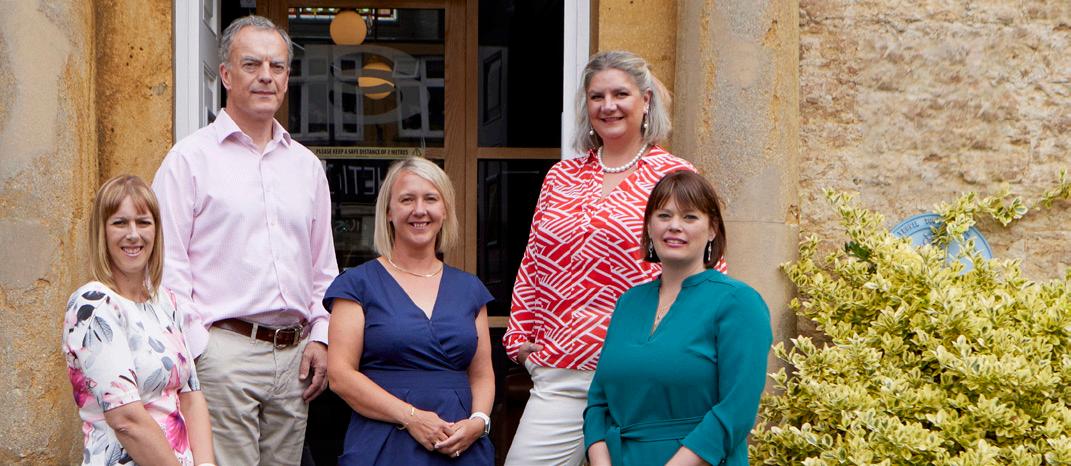
‘That’s the essence of what Meyers is all about.’ Mark said ‘setting the bar higher to look after customers better and support the communities that support us at the same time.’
Battens Solicitors has a bold new look – a new yellow and black colour palette has replaced the old dark blue and silver branding and the Battens logo has been refreshed with a progressive design. Along with new branding there’s a new website, which has been devised with Dorset-based international digital agency, Fathom. It has been designed with the user in mind; a quick and easy site to navigate from a desktop, laptop, or phone. The new brand reflects the new leadership team which took over the management of Battens Solicitors more than a year ago. Managing Director Ceri Stephens said. ‘We are very proud of our 300 year old heritage and legal expertise, but we are also a forward thinking firm with innovative ideas

and plans for expansion. It is vitally important that we keep ahead of the curve in terms of technology, in the way we communicate with clients and the business world. We are delighted with what Fathom has achieved for us. They fully understood our vision; an old established legal firm meeting the challenges of the 21st century.’
The Managing Director of Fathom, Nigel Parsons said, ‘After a series of brand workshops - diving into the heart of what Battens is about and the journey they are going on, it was paramount the new brand identity exuded their forward-thinking team, progressive nature and positive energy.’
Meyers, the groundbreaking home-based estate agent with no traditional shop windows, is on the coveted shortlist for the number one spotThe directors of Battens Solicitors
For local carpenter Dave Vanstone, two beech trees falling on a stranger’s land were the beginning of a table – and a whole new business, reports Tracie Beardsley
Spot a fallen tree and Dave Vanstone may not be far behind. This talented carpenter from Stalbridge transforms windthrow (trees brought down by the wind) and locally felled tree trunks from Dorset into stunning pieces of bespoke furniture.
Dave is glad he first knocked on the door of a house with two fallen beech trees. The owner agreed to let him take the trees to use – and commissioned him to make a table. His neighbour did the same. And an idea that had been mulling in Dave’s mind for more than ten years became a reality.
The ultimate recycling ‘Live edge’ furniture, letting the natural form of the wood inspire the finished shape of a dining table, headboard, coffee table, even striking wall art, forms the basis for his business Dorset Deciduous Designs.


Dave explains: ‘Each slab of wood is unique and I incorporate the natural features and beauty within the wood into my furniture designs. Sometimes my clients may have a piece of wood in mind they’d like transformed, or a fallen tree in their garden. Others ask me to source a piece of wood to create a unique piece of furniture.’
Artistically hand-crafted using Dave’s 20 years of carpentry skills, the furniture can be made to
A dining table off Scottish elm. Dave Vanstone recycles unwanted felled trees into beautiful bespoke furniture All images: Dave Vanstone
measure, to fit an area perfectly and the timeless look of wood complements existing styles of décor.
Clever use of epoxy resins fill out any cracks in the wood, “turning a defect into a feature”, says Dave.

Hundreds of hours go into the creation of one piece of furniture, with the wood first being dried, then tirelessly sanded before being transformed into a bespoke piece. Dave says: “The living edge of the tree dictates the shape, so no two pieces of furniture are ever the same.”

He adds: “Fallen trees that have died naturally are little use to anyone. Rather than burn them, I love the sustainability of transforming them into valued pieces that can be handed down through generations – the tree lives on in another form, but with all its original beauty.”
By night the headboard is a dramatically lit mythical map. By day it is a beautiful piece of furniture for any bedroom


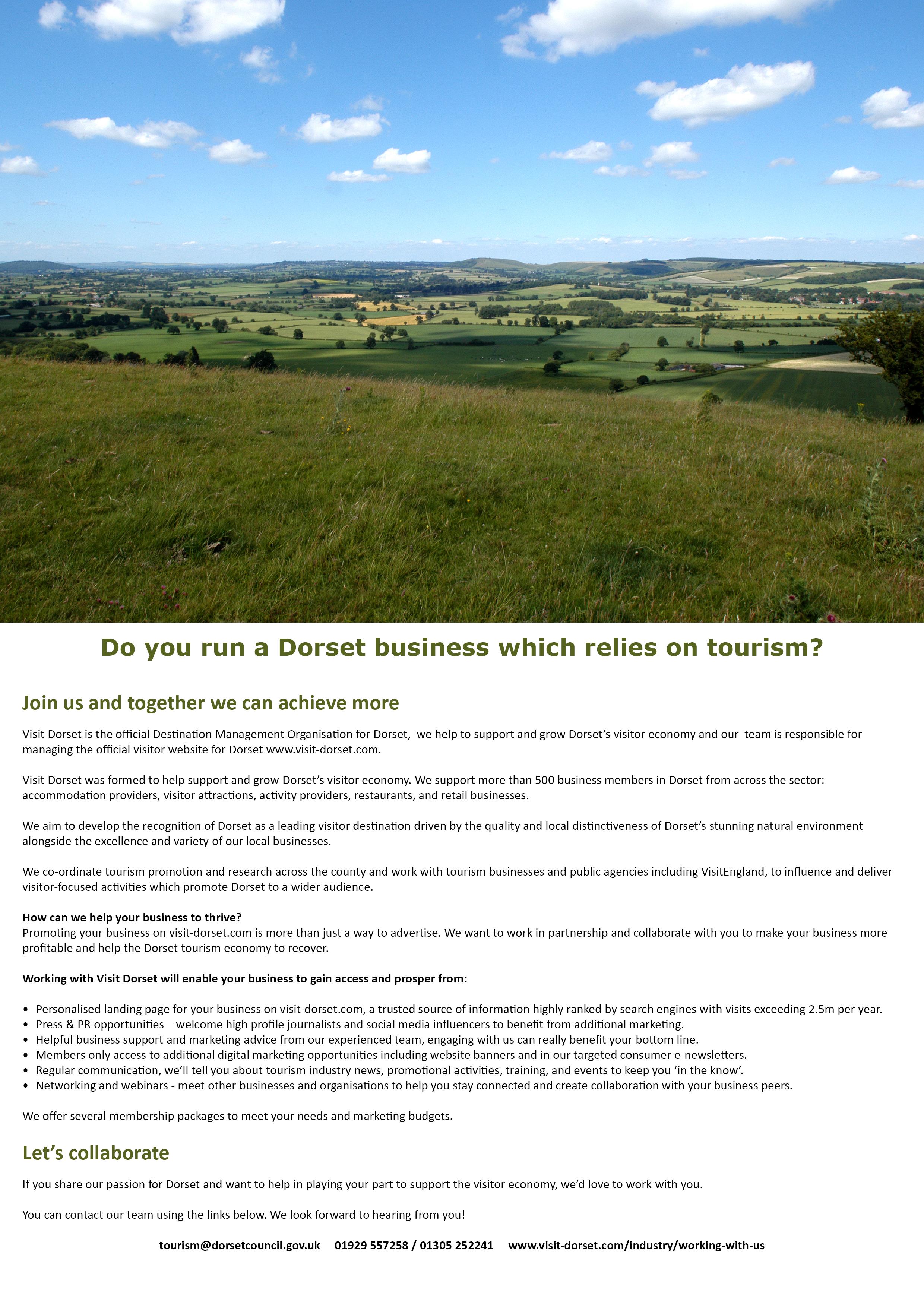
Too old? Absolutely not, says expert Mel Mitchell, as she explains why you should never stop – and why it’s never to late too start
Just one in four people between the ages of 65 and 74 exercises regularly. Many assume that they’re too out-of-shape, unwell, tired, or just plain old to exercise. They’re wrong. The older you get, the more important it becomes to keep moving. A lot of the symptoms of ageing, such as weakness, aching joints and and loss of balance, are actually more likely due to inactivity rather than old age. Exercise is beneficial at every age, of course, and the human body was designed to be active. By continuing to exercise as we get older, we can stay strong and agile, allowing us to maintain our independence and our way of life.
Exercising as we age becomes more important in lowering the risks of conditions such as dementia and Alzheimer’s. The hippocampus is where we make and store memories and exercising helps keep the hippocampus at a healthy size. As we exercise, blood flow to the brain increases, carrying extra oxygen and other nutrients.
helps keep blood pressure and blood sugar at normal levels and can be a silver bullet for lots of health problems.
If it’s been a while, or you have never really been an exerciser, then simply start slow and build up. Rome wasn’t built in a day!
I have been fortunate to work with clients in their 60s and 70s, and over a relatively short time their improvements in movement and posture have been a pleasure to watch.

In the gym they could squat better, but in real life that meant they could now climb the stairs with ease
Gym work might initially seem irrelevant when you’re 70, but it has meaningful real life consequences.
For one reason or another my clients had all stopped moving as much. The universal consequence was that their joints (especially their knees!) were giving them trouble, they were having difficulties standing up straight and simply getting up from the floor had become an issue.
Exercise will actually reduce your chances of falling by building strength and maintaining balance. Gentle forms like yoga or tai chi are great for boosting confidence.
If you have a chronic health problem such as arthritis, diabetes or heart disease, then exercise is almost certainly a good idea. Check with a doctor first, but exercise will probably help; it
Once they started moving more, the muscles around the knees became stronger. That meant they could squat better in the gym, of course, but out in real life it meant they could climb the stairs with ease and the aching joints almost ceased. Improvements in posture meant they were walking upright, and that meant more easily. Their stamina also improved and they could walk for longer without being out of breath. Improvements in all-round mobility meant actions like moving their arms high above their head became possible – in real life, that’s dressing, and reaching for things from shelves.
Studies have found that even for people in their 90s living in nursing homes, starting an exercise routine boosts muscle strength. Other research shows that starting exercise late in life can still cut the risk of health problems such as diabetes, and improve existing symptoms.
But exercising doesn’t necessarily mean going to the gym. It isn’t for everyone. Why not join a class, or start taking a daily walk? Any form of exercise works; just keep moving!
I am writing this on the hottest day of the year so far – and across the UK I know as much skin as possible is being exposed. We often think that the best way to get great-looking skin is with a tan or with expensive skin creams. It is true that vitamin D from the sun is a health essential – but as we all know, too much sun can cause long term damage. The truth is that looking at what we eat is by far the best way to keep skin looking great.
Foods containing vitamin C, such as citrus fruits, berries, peppers and greens of any type, are mildly protective from the harsh exposure of the sun – vitamin C is a powerful anti-oxidant.

These are recognisable by the red, orange and yellow pigments. Find them in vegetables such as carrots, pumpkins, sweet potatoes, red and yellow peppers, as well as wild-caught salmon. You will have probably heard of lycopene, a special type of carotenoid found in tomatoes and red cabbage. Carotenoids promote healthy skin cells and they act as a type of anti-oxidant.
There are more than 8,000 different classifications of
polyphenol, including ones you will probably have heard of such as flavonoids and ellagic acids. They are considered a lifespan essential, given their wideranging properties. Polyphenols are mainly found in the darkcoloured plants; think purple berries, pomegranate, purple grapes (and red wine!), dark green leafy veg, very dark high quality chocolate, coffee (yes!) and also in herbs.
Herbs are extremely powerful, and by weight they pack a massive dose of nutrients in themselves –peppermint, oregano, star anise, sage, rosemary and thyme are all high in polyphenols. From a skin point of view, polyphenols protect against too much sun exposure, as they are free radical scavengers. They also increase circulation.
Three-quarters of the dry weight of skin consists of collagen and it’s pretty much everywhere in the body. It keeps skin firm and plump-looking, but unfortunately the body prioritises collagen going to other cells before it gets to hair, skin, and nails!
It drops naturally as we age, and
collagen has become popular as a supplement.
You can get collagen naturally from bone broth – never waste the bones from your Sunday roast, boil them for a few hours with some cider vinegar, herbs and seasoning.
Once cooled, you get that gelatinous goodness (skim the fat off the top if you like), and use as a soup base or freeze for later. You can also get collagen from liver and tough cuts of meat when they are cooked very slowly. If you do this, always buy high quality, such as grass-fed with no other additives. If you prefer marine collagen supplements, be extremely wary of how these are produced and research well.
I shouldn’t need to say this, but water is 50 to 70 per cent of your body weight. The answer to ‘how much is the right amount to drink’ is complicated, however.
It depends on what you eat, how much you weigh, your exercise levels etc.
Rule of thumb – check your wee! Your urine should be pale yellow to colourless. If it’s darker, then get drinking.
Great skin is rarely about what you put on it, says nutritional therapist Karen Geary – instead try looking at what you’re eating
Think purple berries, grapes (and red wine!), very dark high quality chocolate and coffee (yes!)
We all feel better after a walk in the fresh air. Izzy Anwell of Dorset Mind explains how ecotherapy leads to good mental health
There are countless benefits attributed to connecting with nature and being outside. However, the lack of research makes it hard to know how effective the treatment is, from a clinical perspective. Ecotherapy is the name given to healthcare which draws on the benefits of nature-based activity to support people with mental health problems. Even just taken at face value, ecotherapy encourages socialising, exercise, sunlight exposure and learning and sharing emotions, all of which aid ‘good mental health’.
Characterised by a person’s ability to fulfil several key functions and activities, the markers of good mental health include the ability to learn, to feel, to express and manage a range of positive and negative emotions and the ability to form and maintain good relationships with others.
Ecotherapy supports all five stages of the ‘five ways to wellbeing’ as it encourages its participants to connect, to learn, to get active, to give back and to take notice.
Ecotherapy encourages those who may have become isolated due to their health to socialise with others, to build connections and relationships and regain
There is strong evidence that feeling close to, and valued by, other people can contribute to a person’s daily functioning and act as a buffer against mental ill health.
As part of Dorset Mind’s ecotherapy project, users are taught how to tend to and maintain a garden or plot, supporting the concept of handson learning which provides the opportunity to safely make mistakes and learn through trial and error.
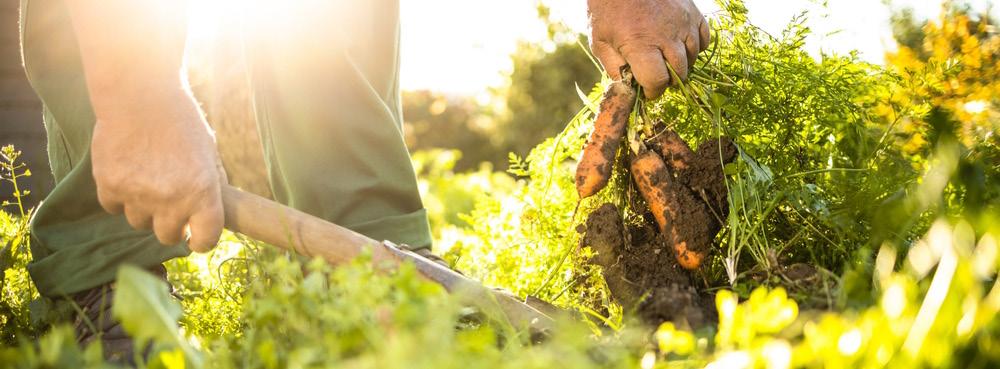
It also ensures the participant really has to take notice of their surroundings.
Ecotherapy actively encourages exercise and activity, which we all know helps to release those feel-good hormones like adrenaline and decreases the stress hormone cortisol.
Interestingly, it has recently been suggested that the act of digging and disturbing soil releases a microbe called ‘mycobacterium vaccae’ which acts as a natural anti-depressant. The validity of this research has not yet been confirmed but most gardeners would emphatically agree. And what if it were true?
Another benefit that comes from being active outside is that participants get regular sunlight
exposure. This prompts the body to produce Vitamin D, vital for bone and muscle health but also a general mood-booster.
As part of Dorset Mind’s Eco in Mind ecotherapy project, all the produce grown is harvested and donated to local food banks.
Having this knowledge as a participant evokes a sense of pride and accomplishment.
It’s National Allotment Week between 8th and 14th August. This gives us the perfect opportunity to get outside and connect ourselves with the earth around us, whether you have an actual allotment or just a small patch of garden. If you do make it outside, try and be mindful as you work, making yourself aware of your surroundings and how they make you feel.
If you are struggling to cope with your mental health in general, please talk to your GP. If you’re in a crisis, treat it as an emergency. Call 999 immediately or The Samaritans, FREE on 116 123.
Dorset Mind offers group support that can also help with your wellbeing. The group offers peer support and helps to reduce stigma by normalizing conversations about mental health. You can also check out further support for stress and mental health here. You’ll find links for 1-2-1 and groups mental health support we offer here.




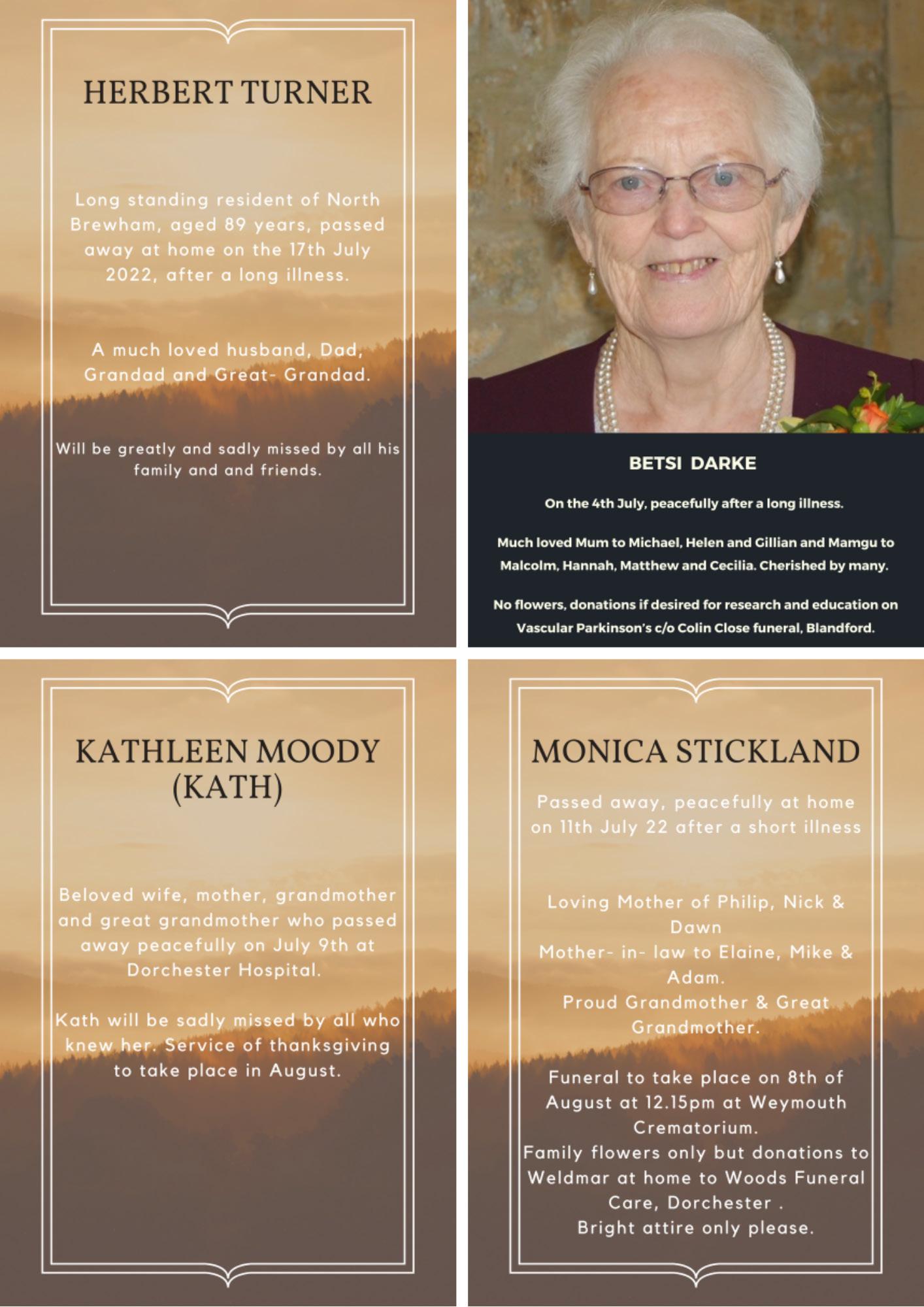
















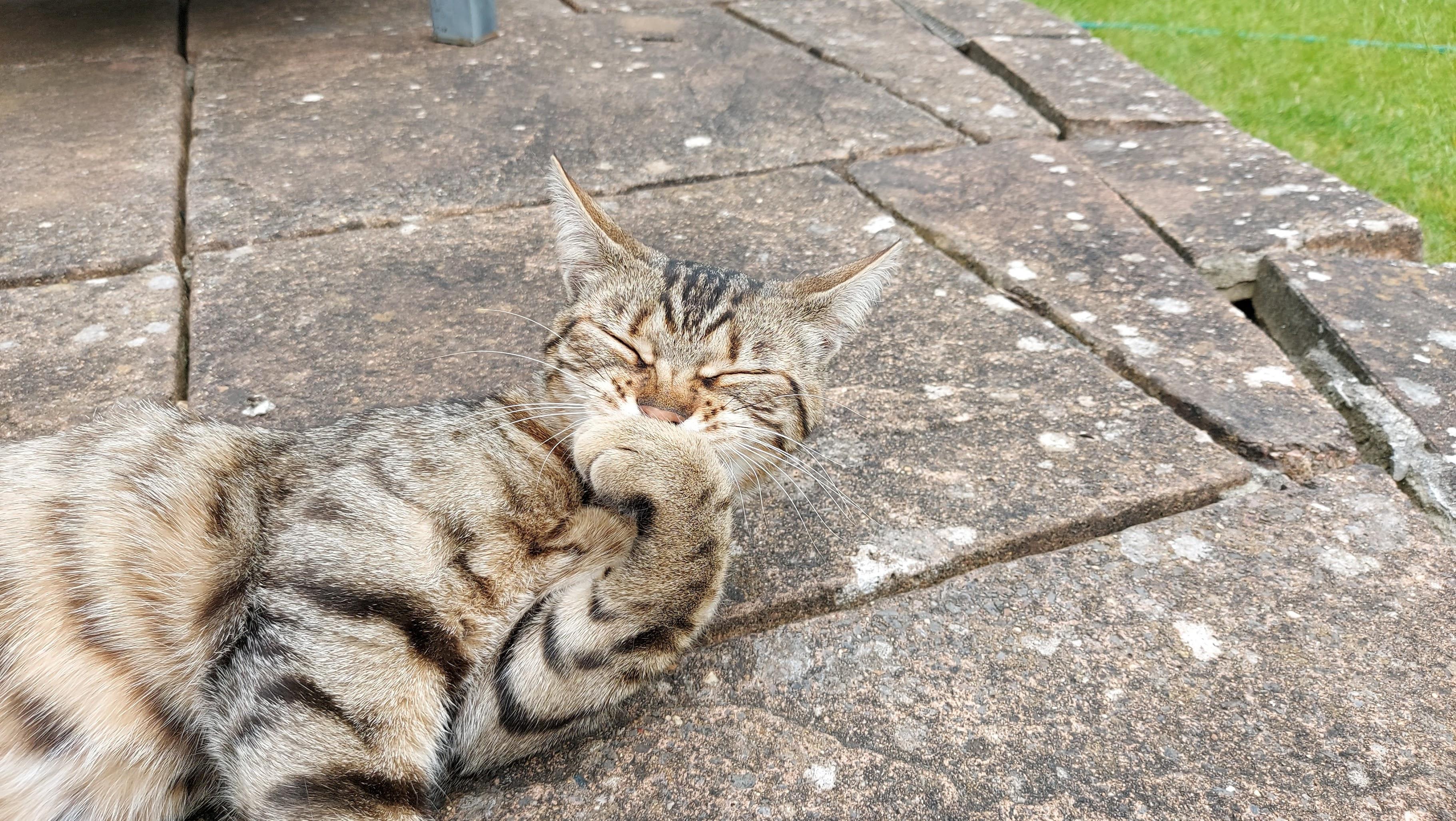
F u r t h e r f o r w a r d s p u b l i c a t i o n a l w a y s f i r s t F r i d a y o f t h e m o n t h . C o p y b o o k i n g d e a d l i n e a l w a y s t h e F r i d a y p r i o r t o p u b l i s h i n g
G e t i n t o u c h w i t h L a u r a o n e d i t o r @ t h e b l a c k m o r e v a l e c o u k
G r e a t n e w s ! I f y o u k n o w w h a t y o u w a n t , t h e n s i m p l y h e a d t o h t t p s : / / w w w . t h e b l a c k m o r e v a l e . c o . u k / a d v e r t i s e / t o b o o k o n l i n e . O r g e t i n t o u c h w i t h C o u r t e n a y t o c h a t a b o u t w h a t y o u ' r e l o o k i n g f o r :